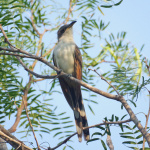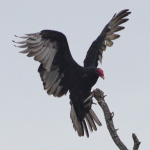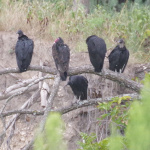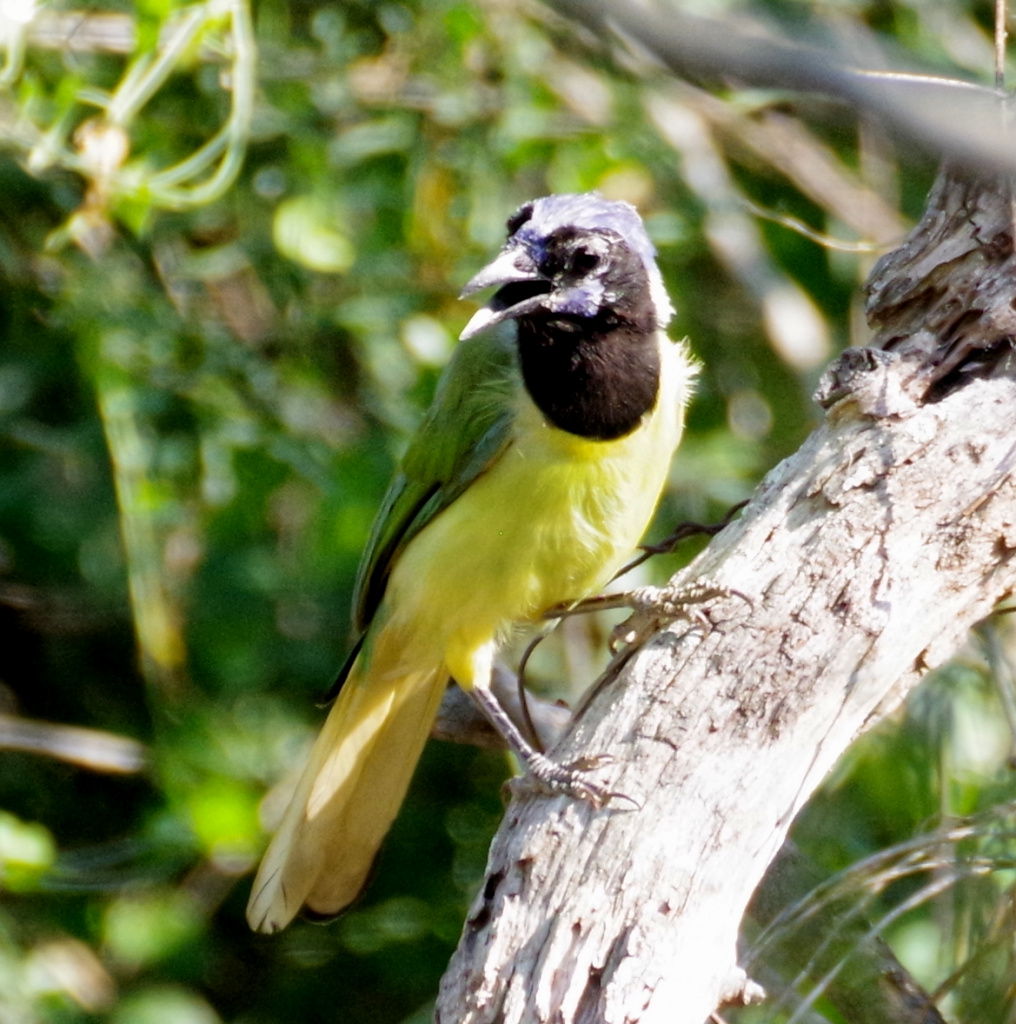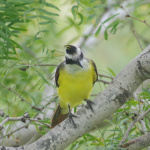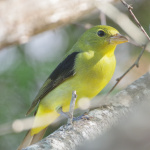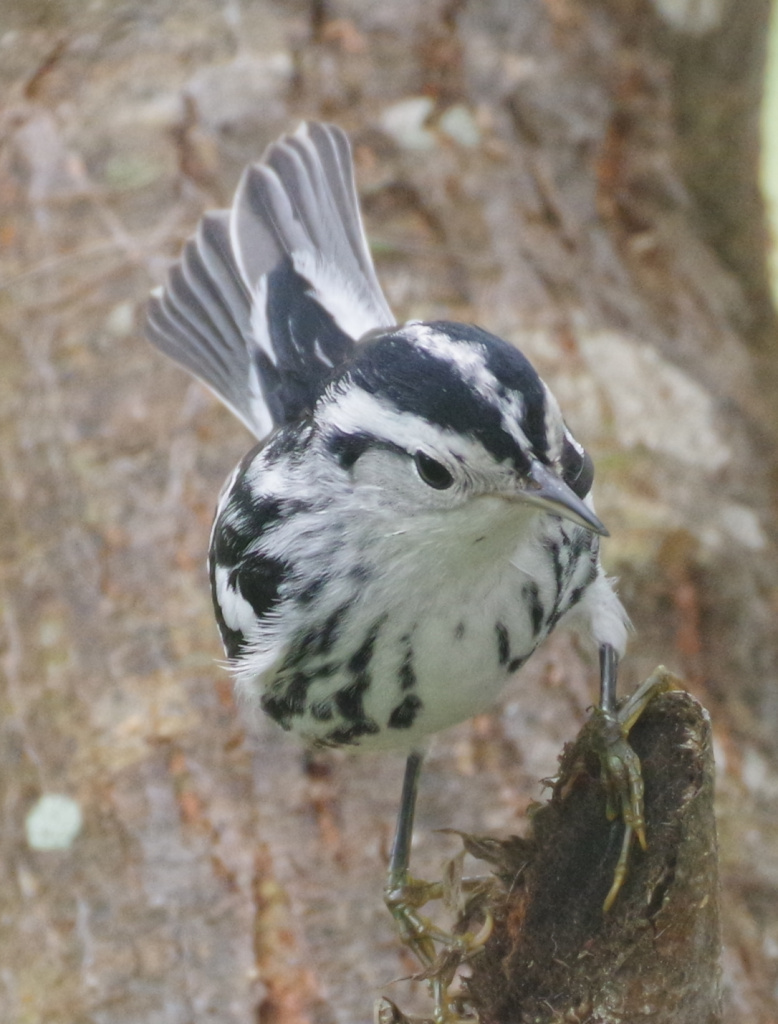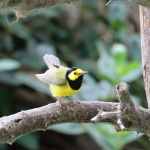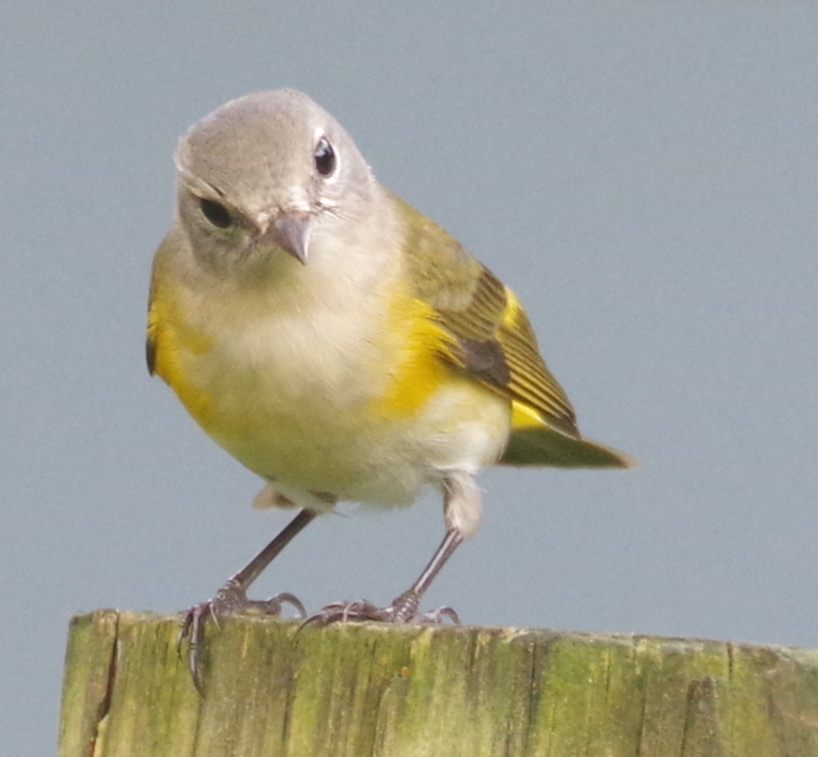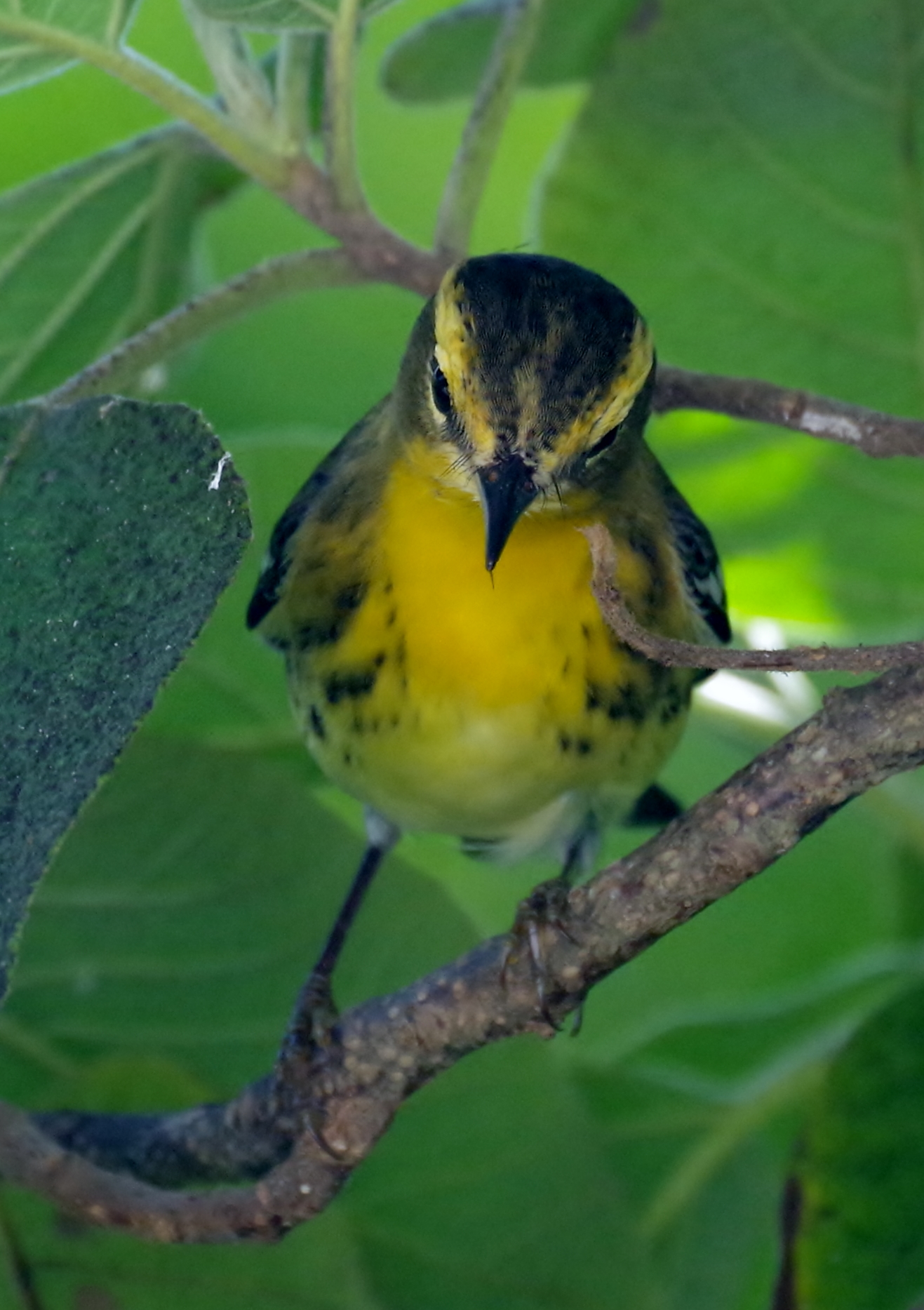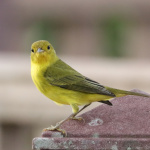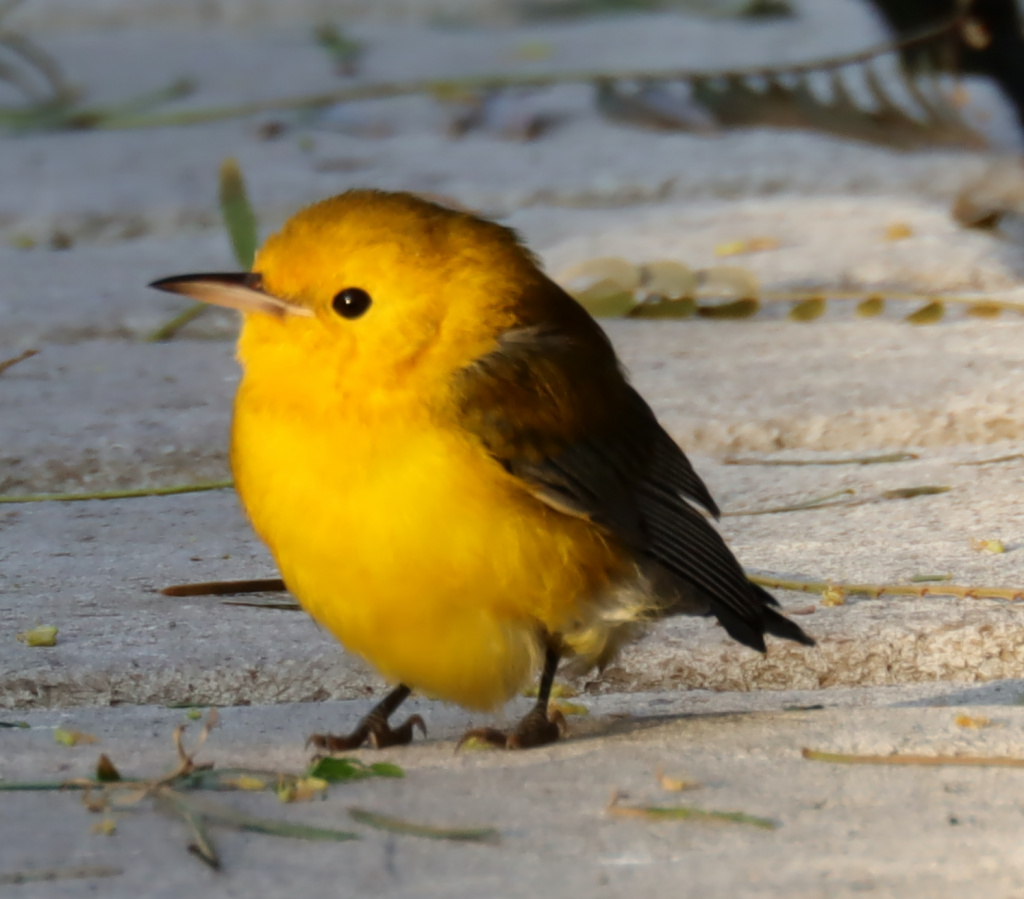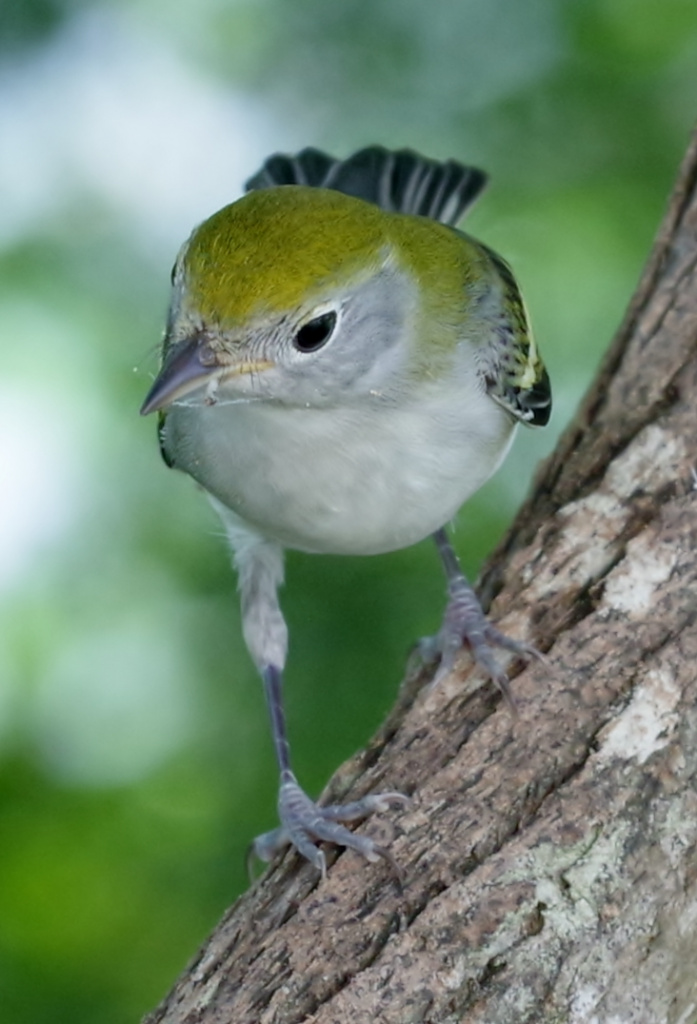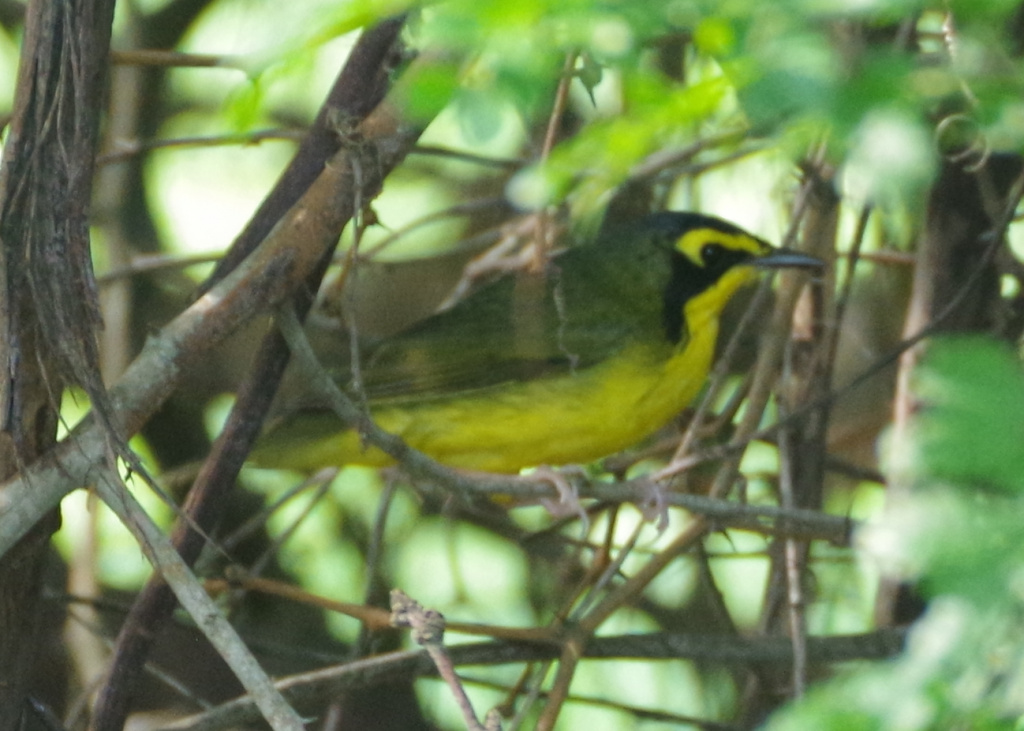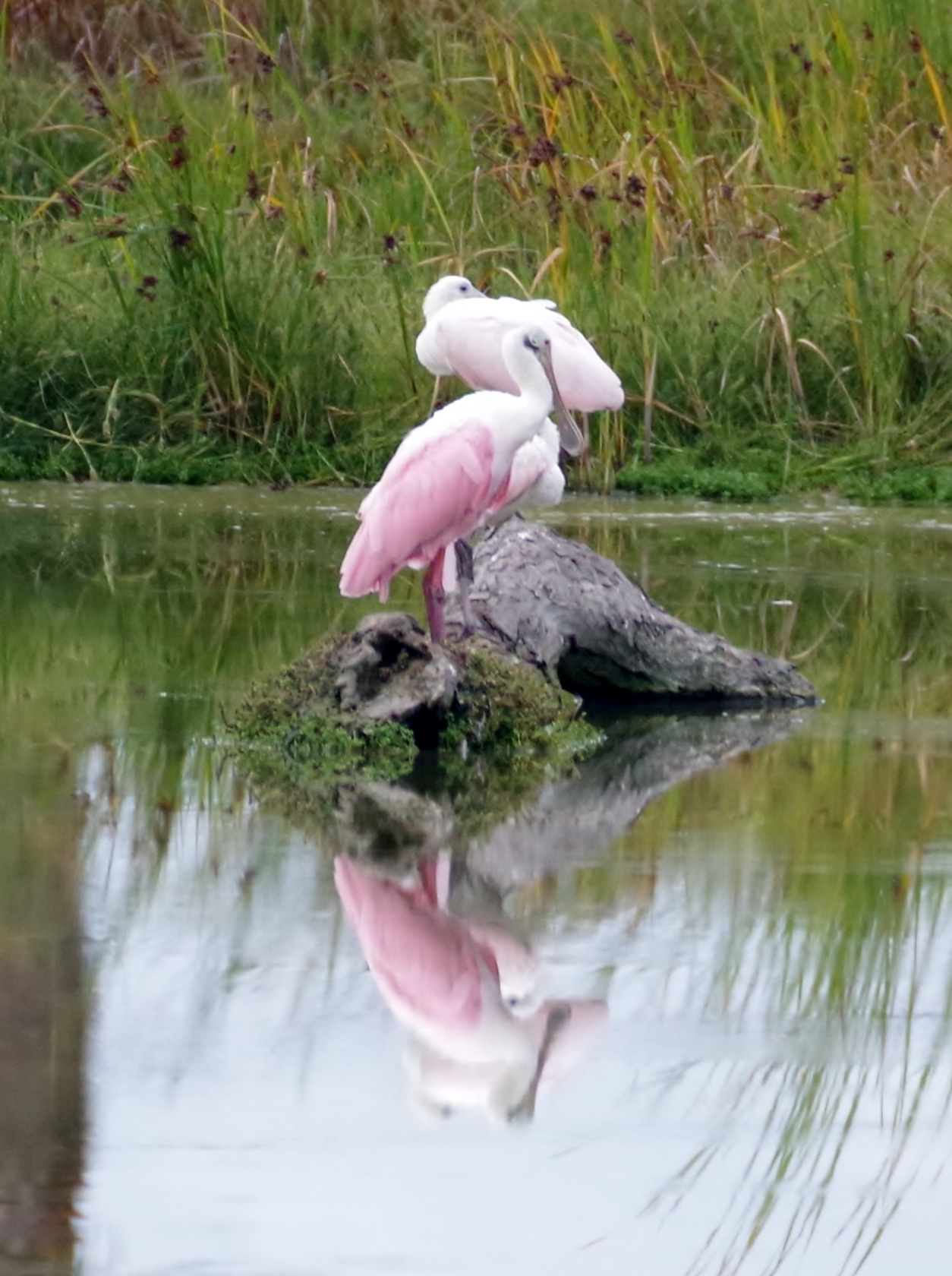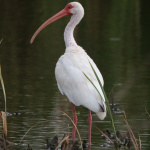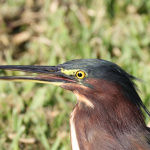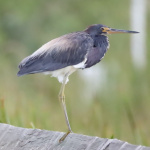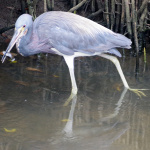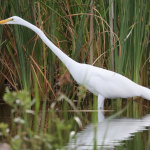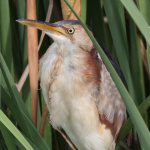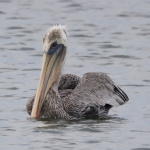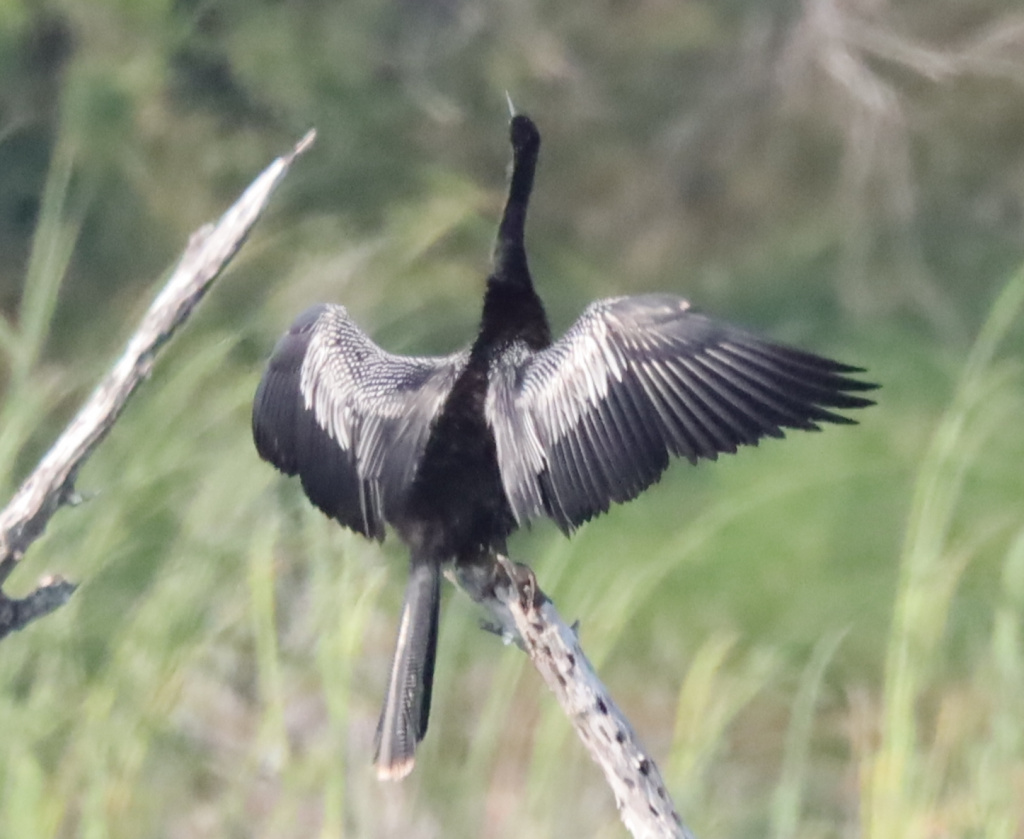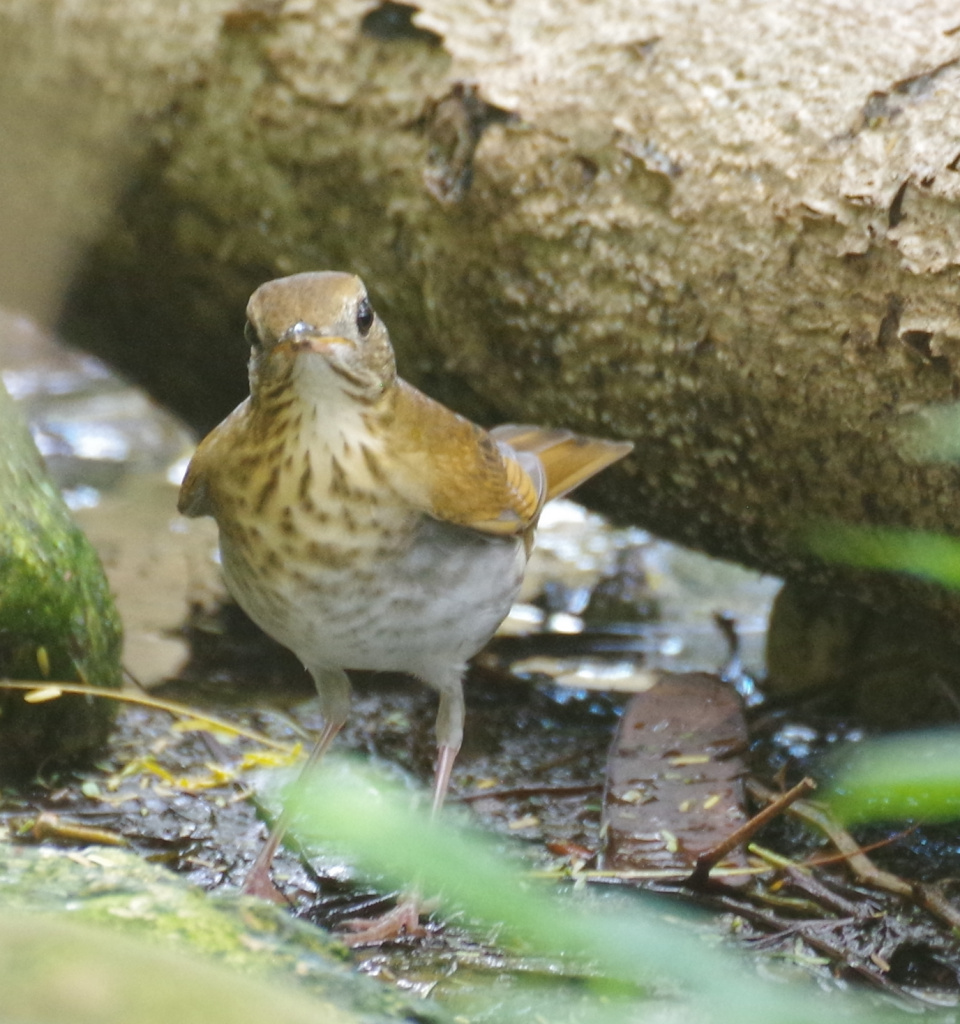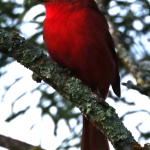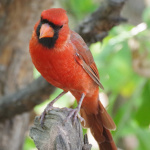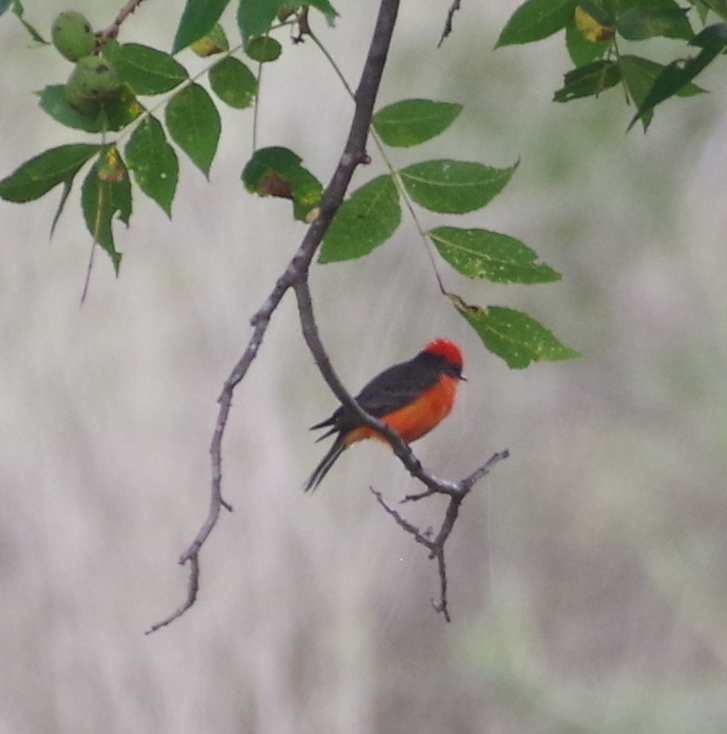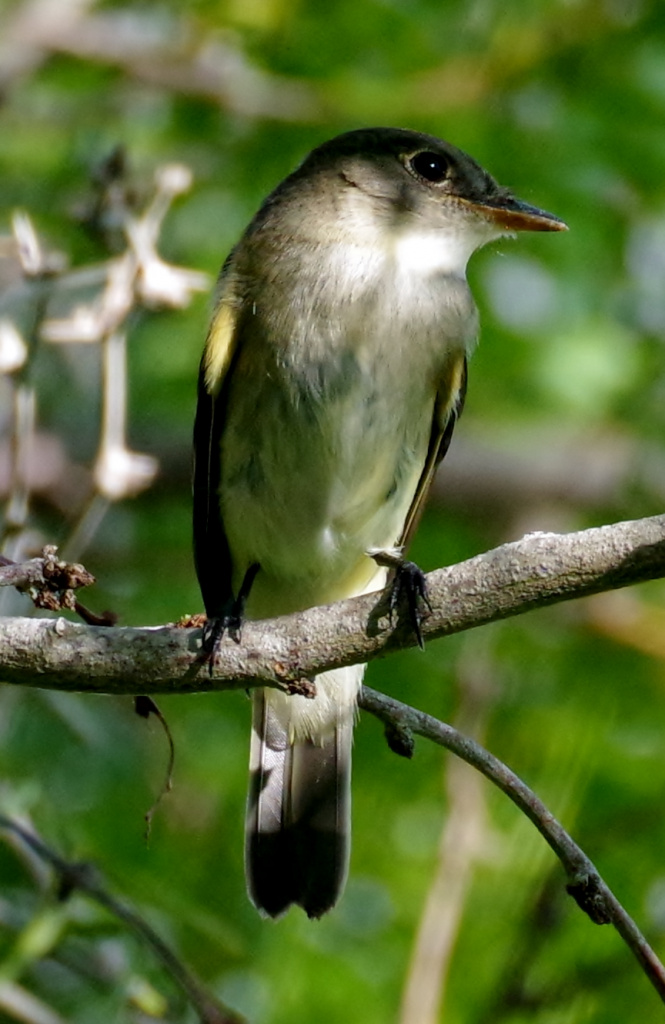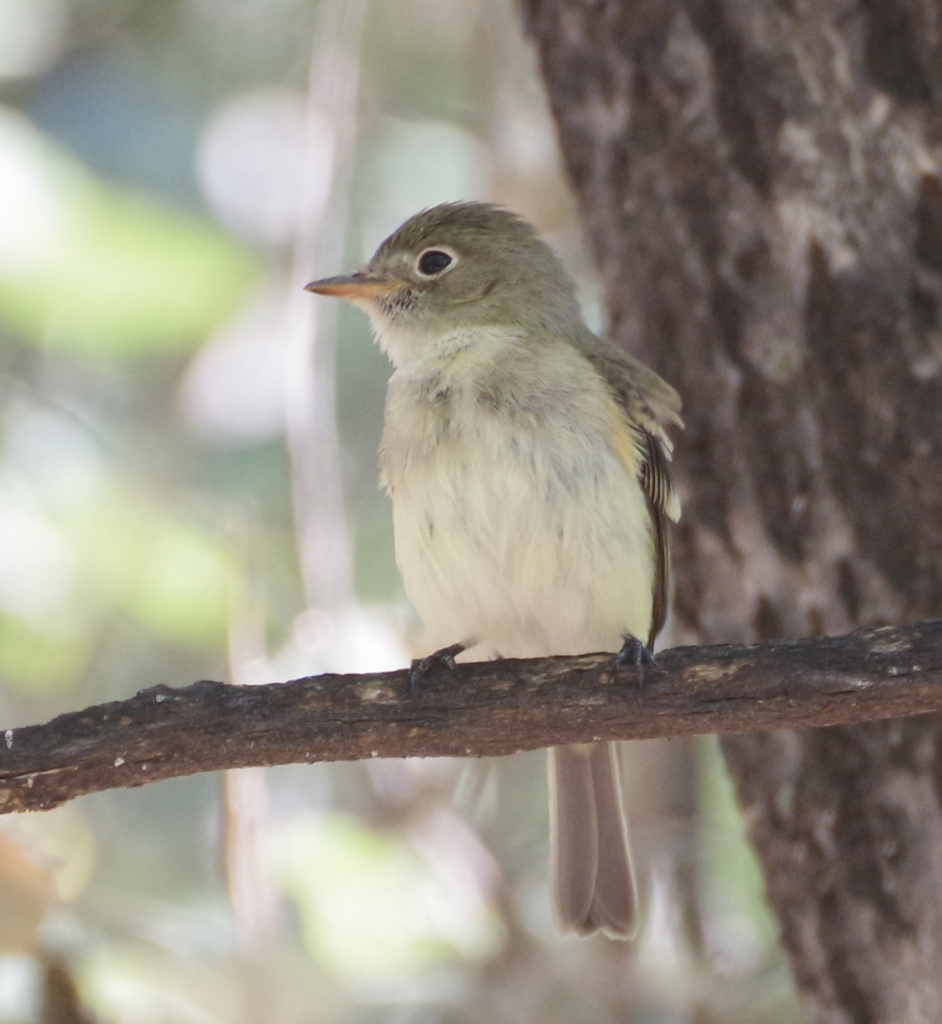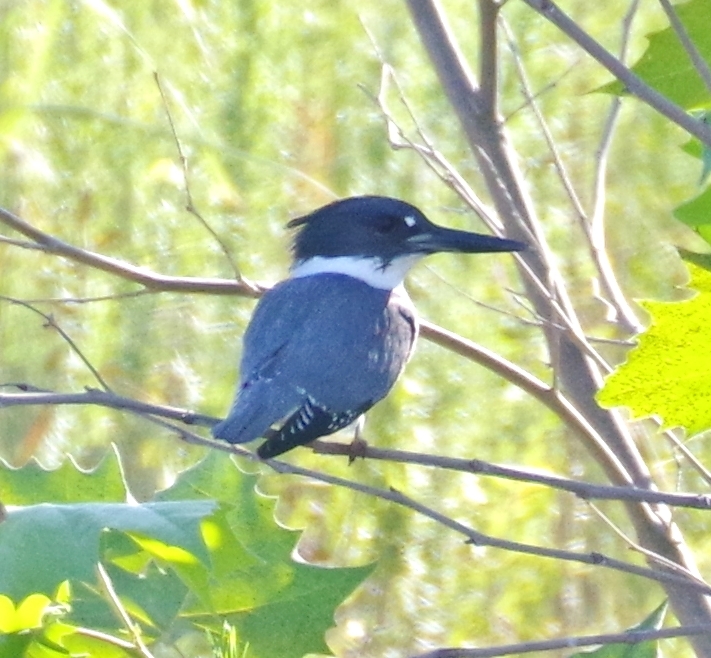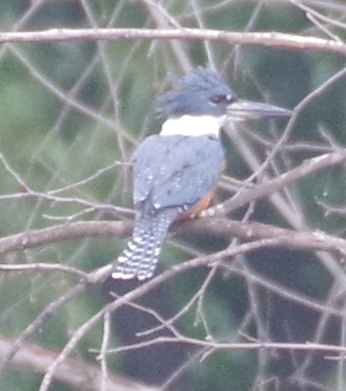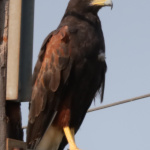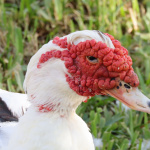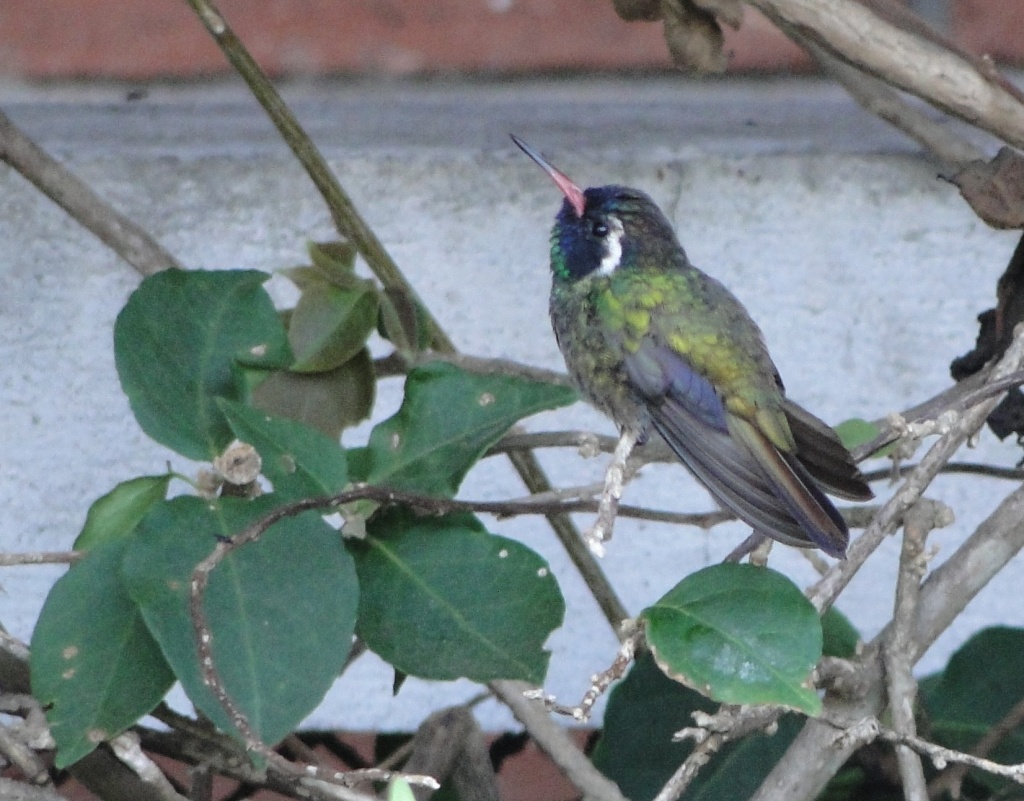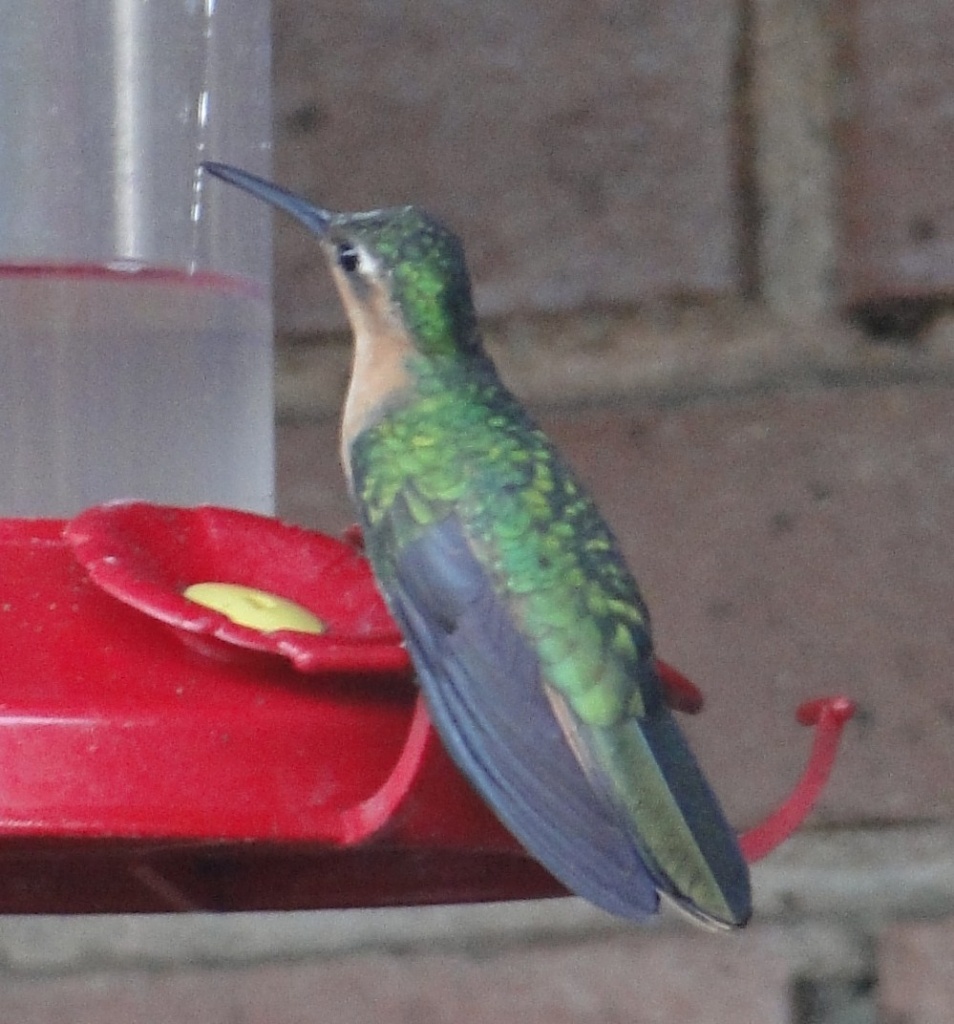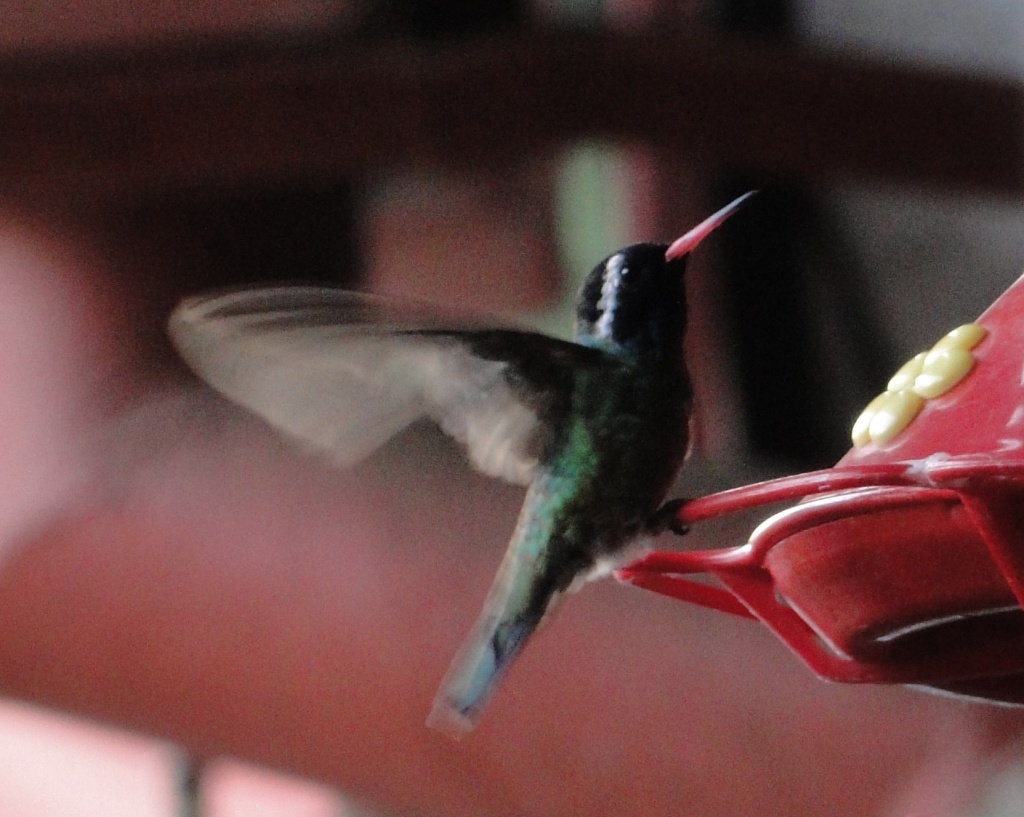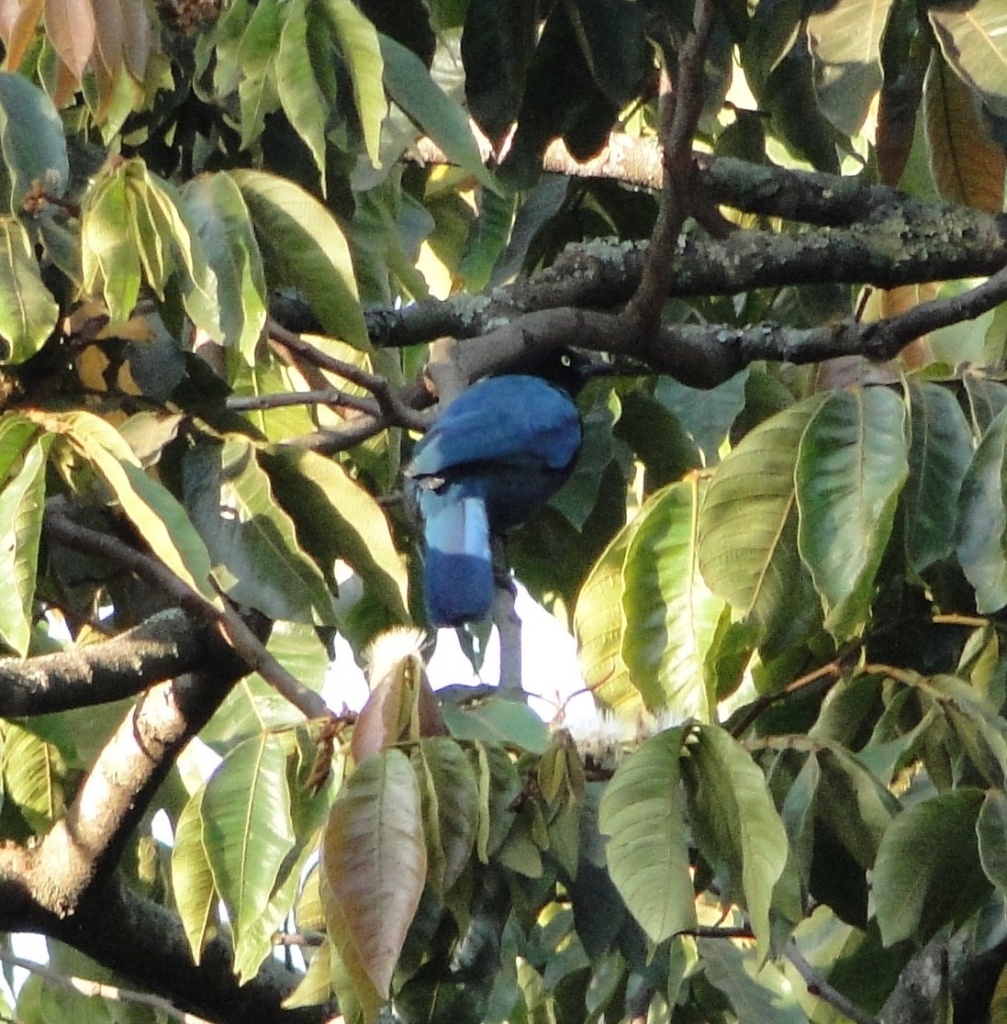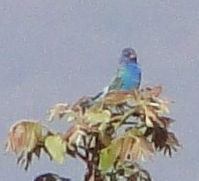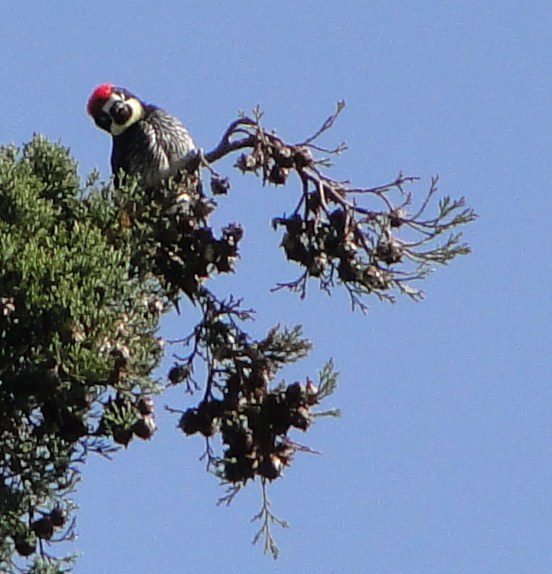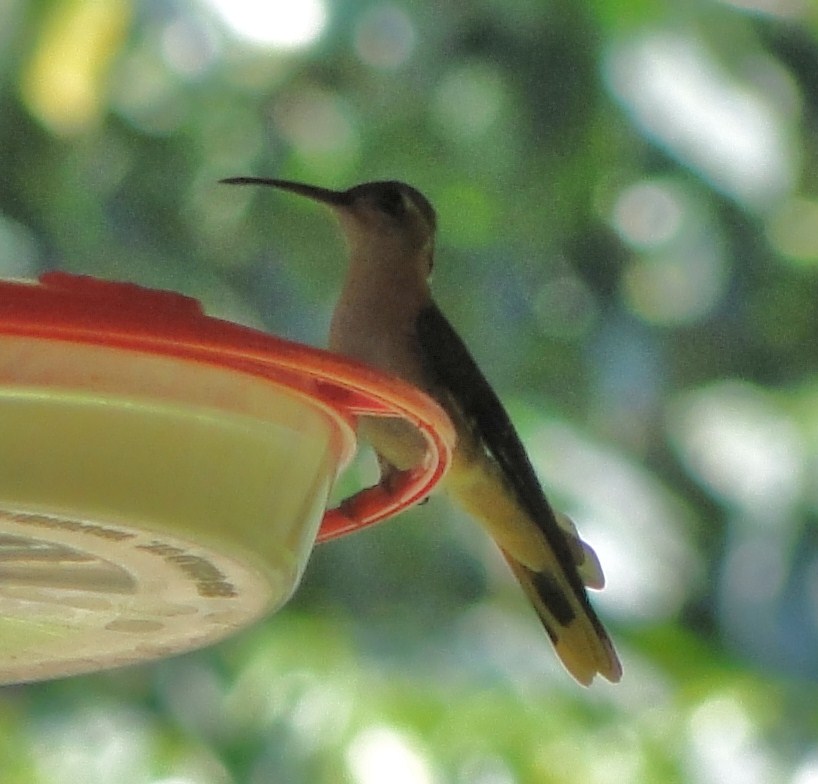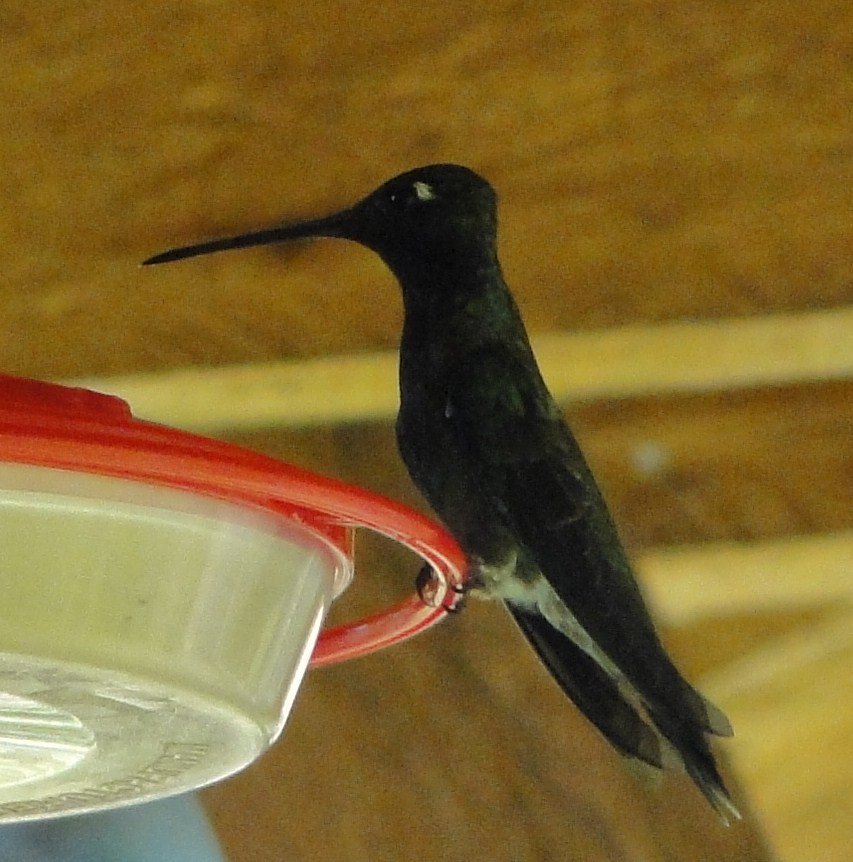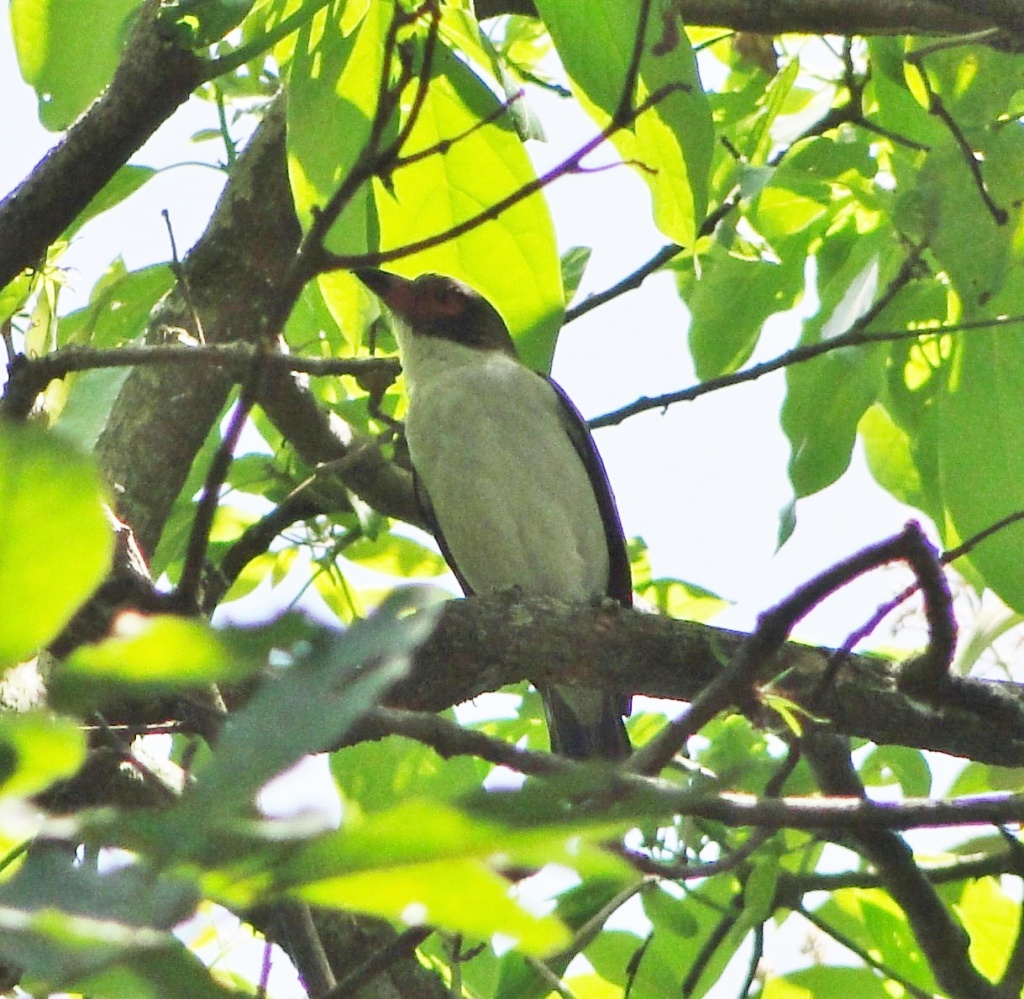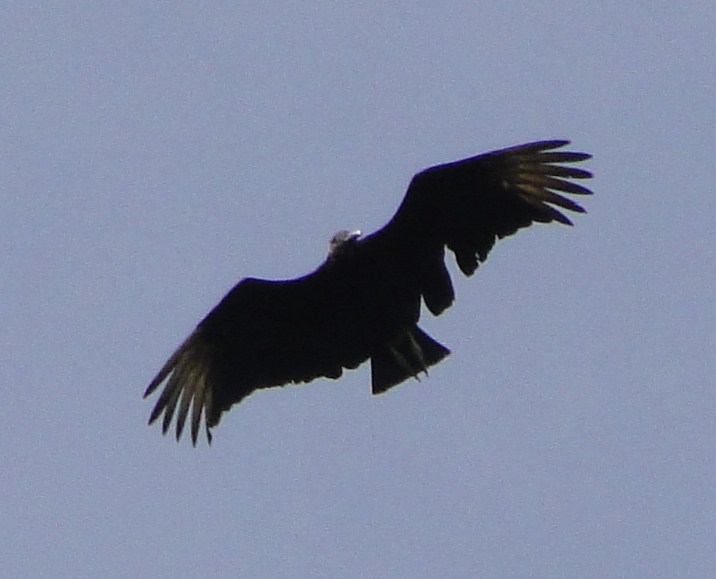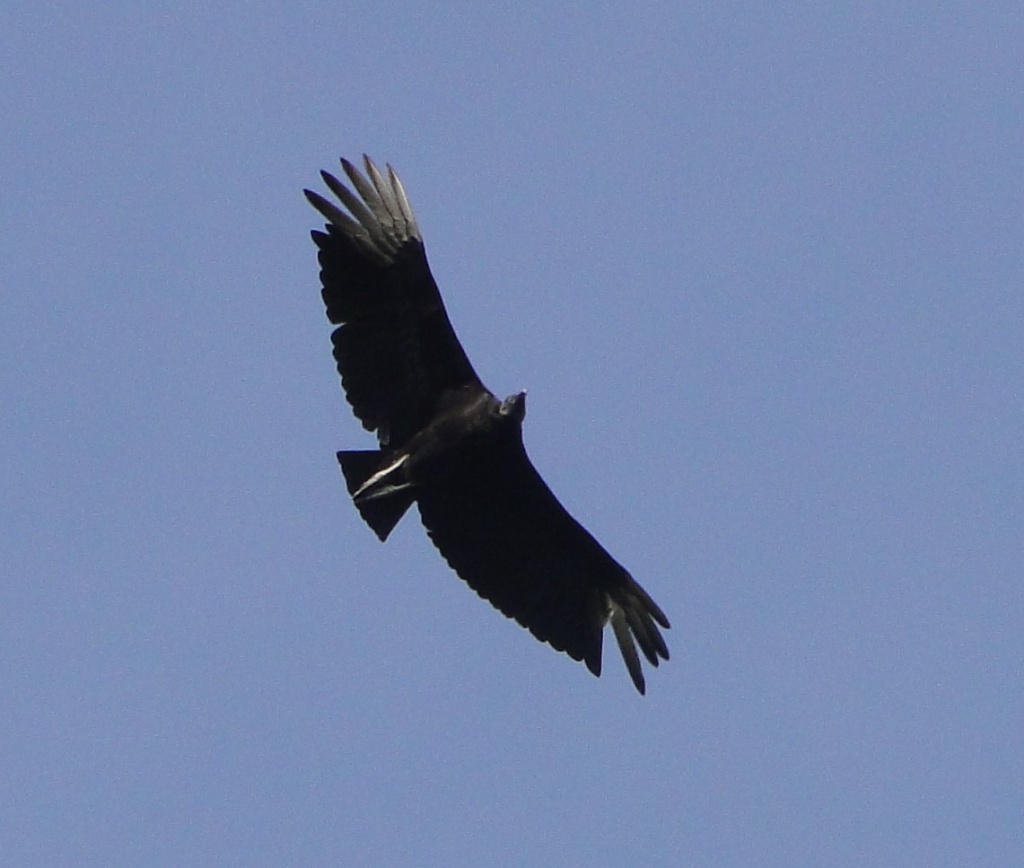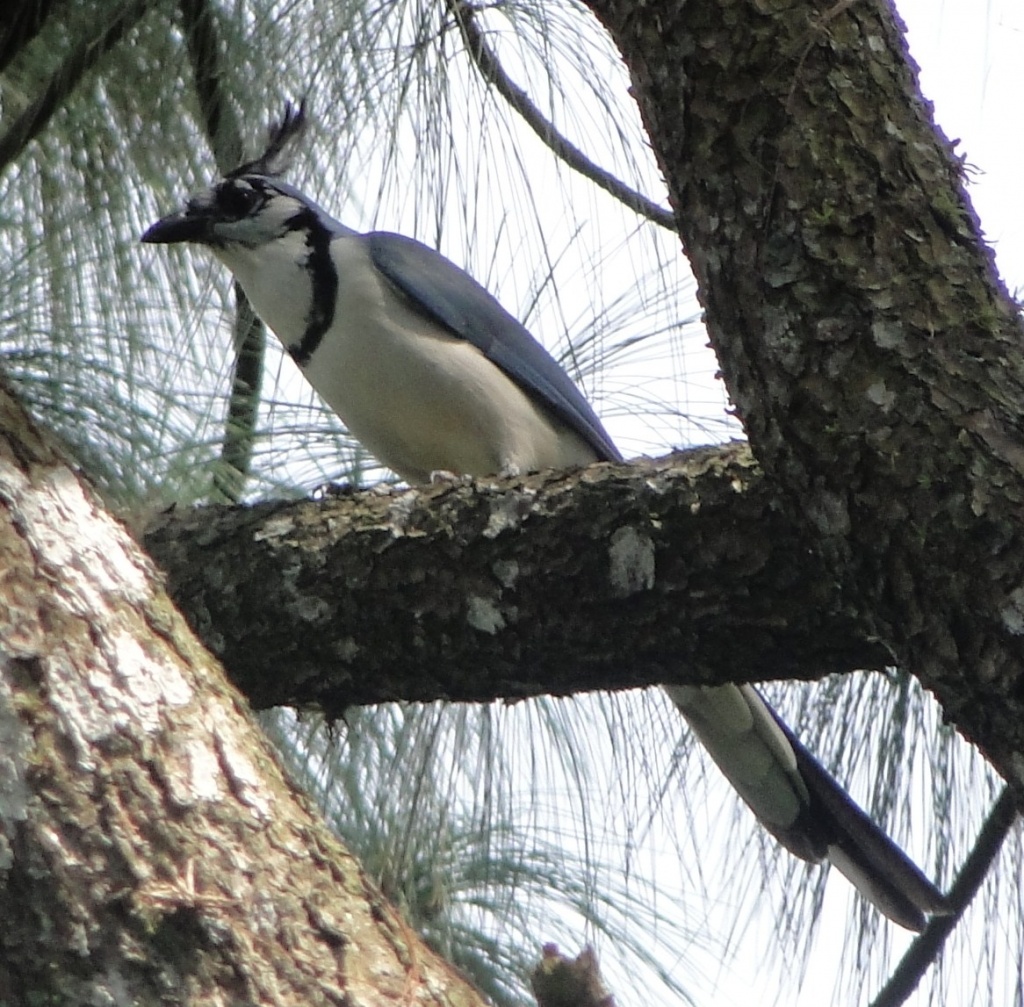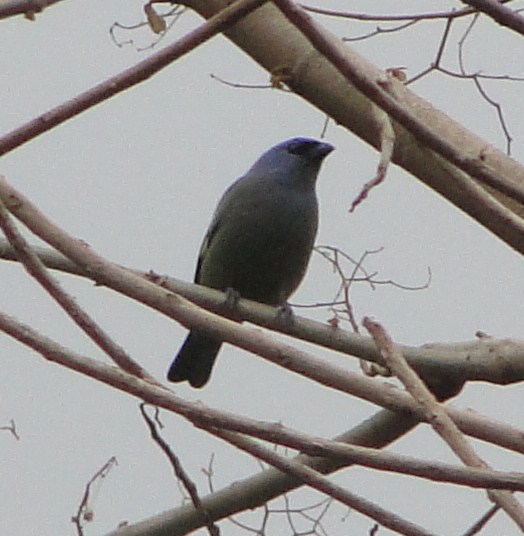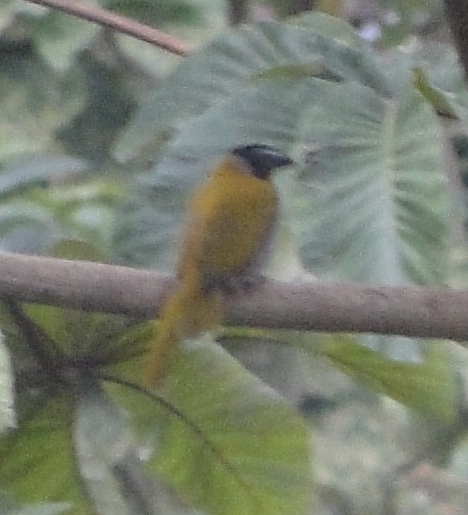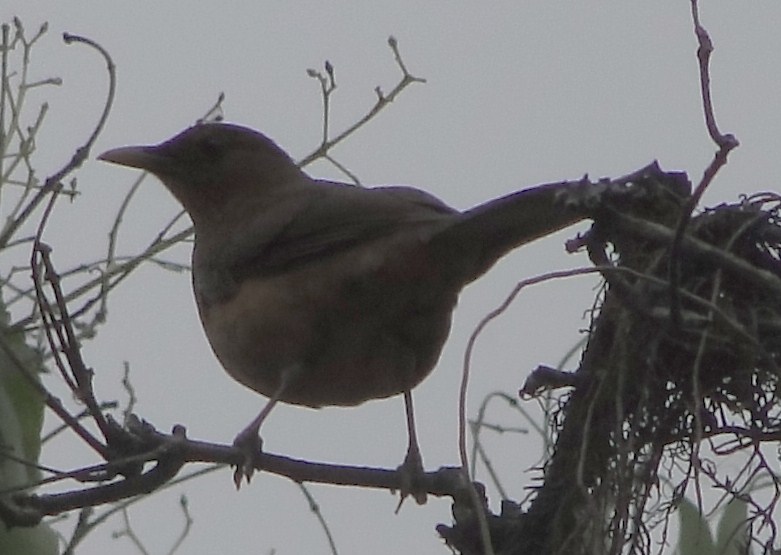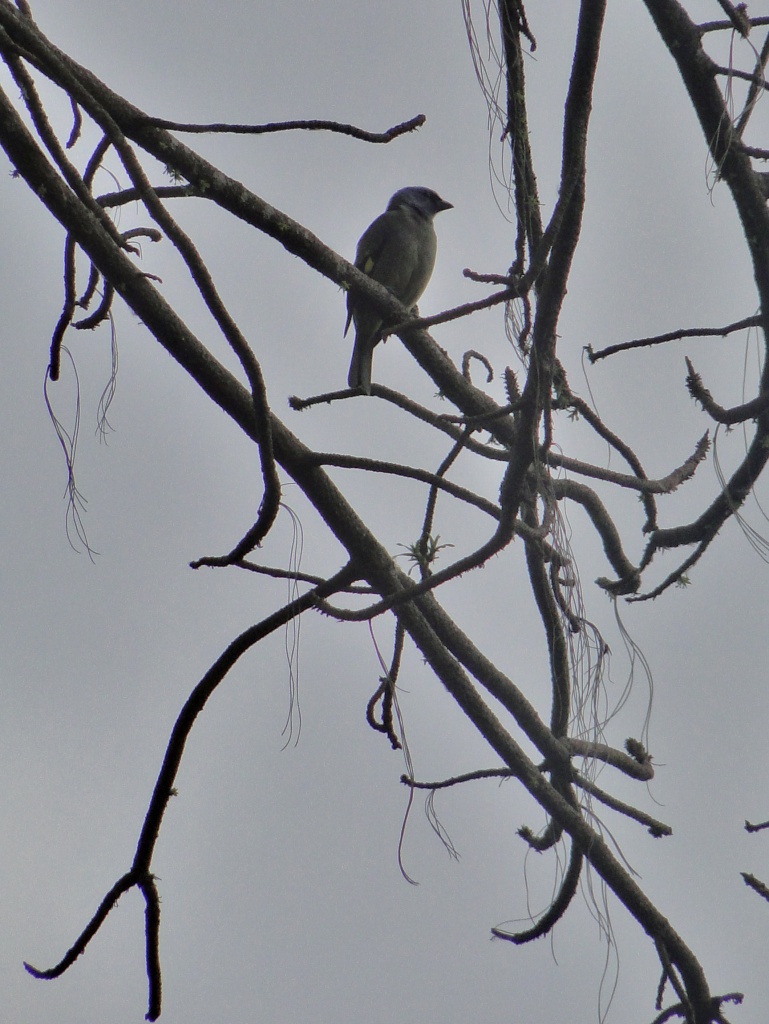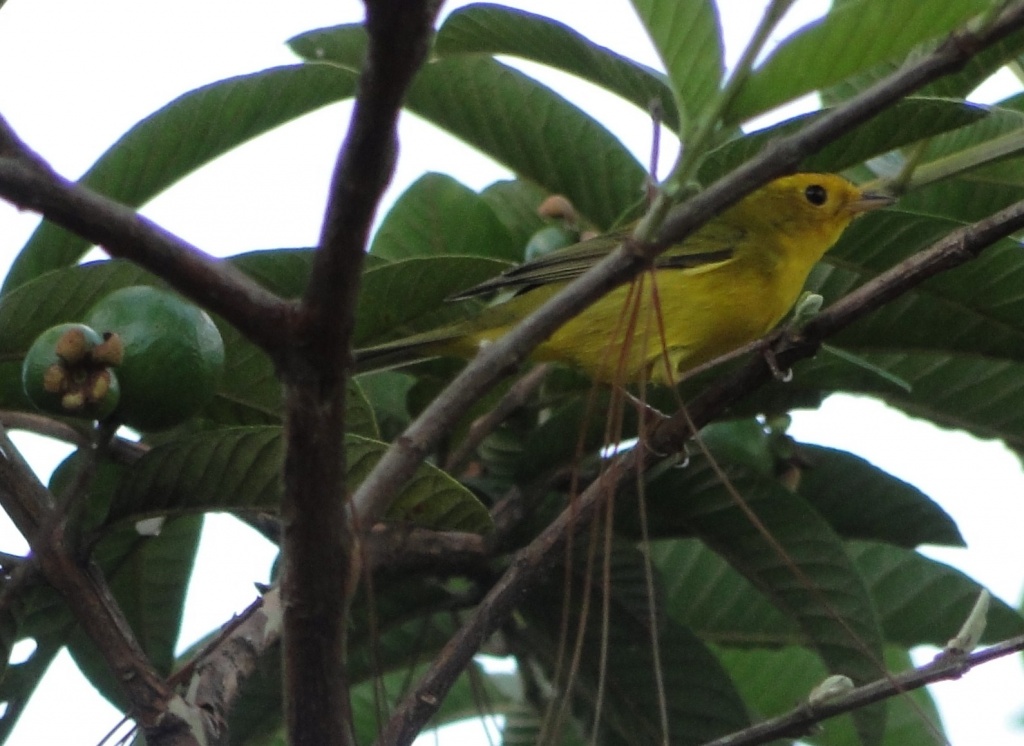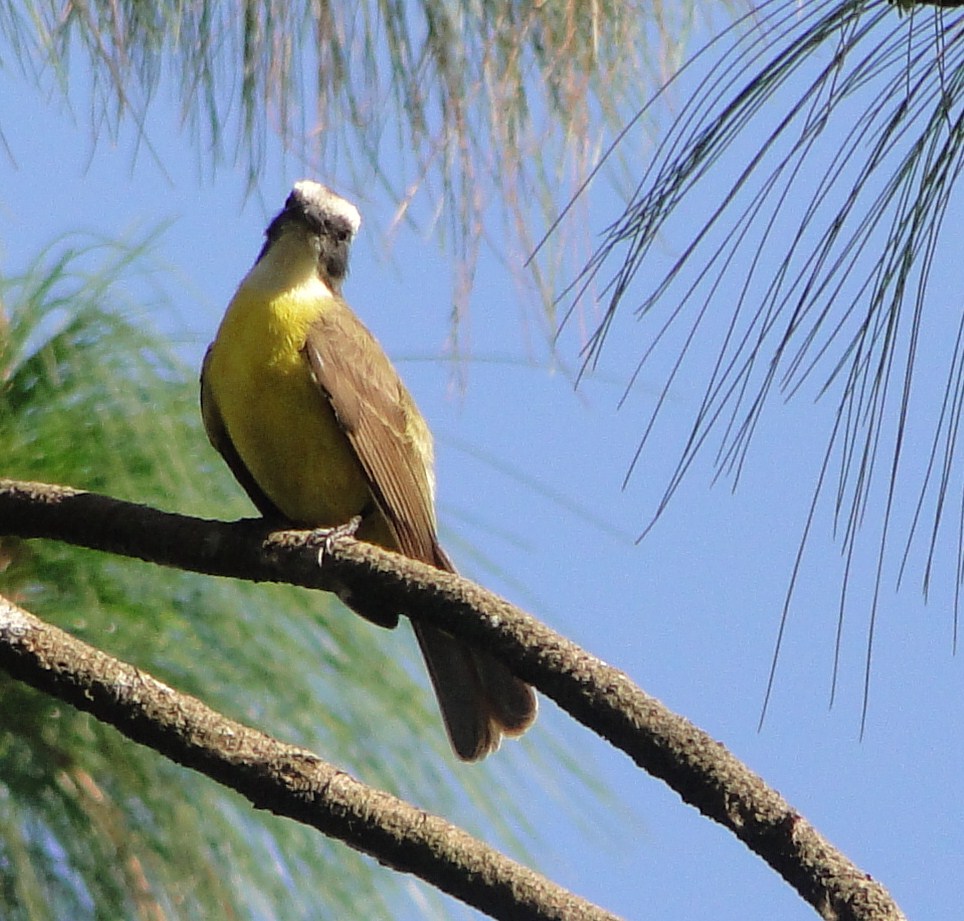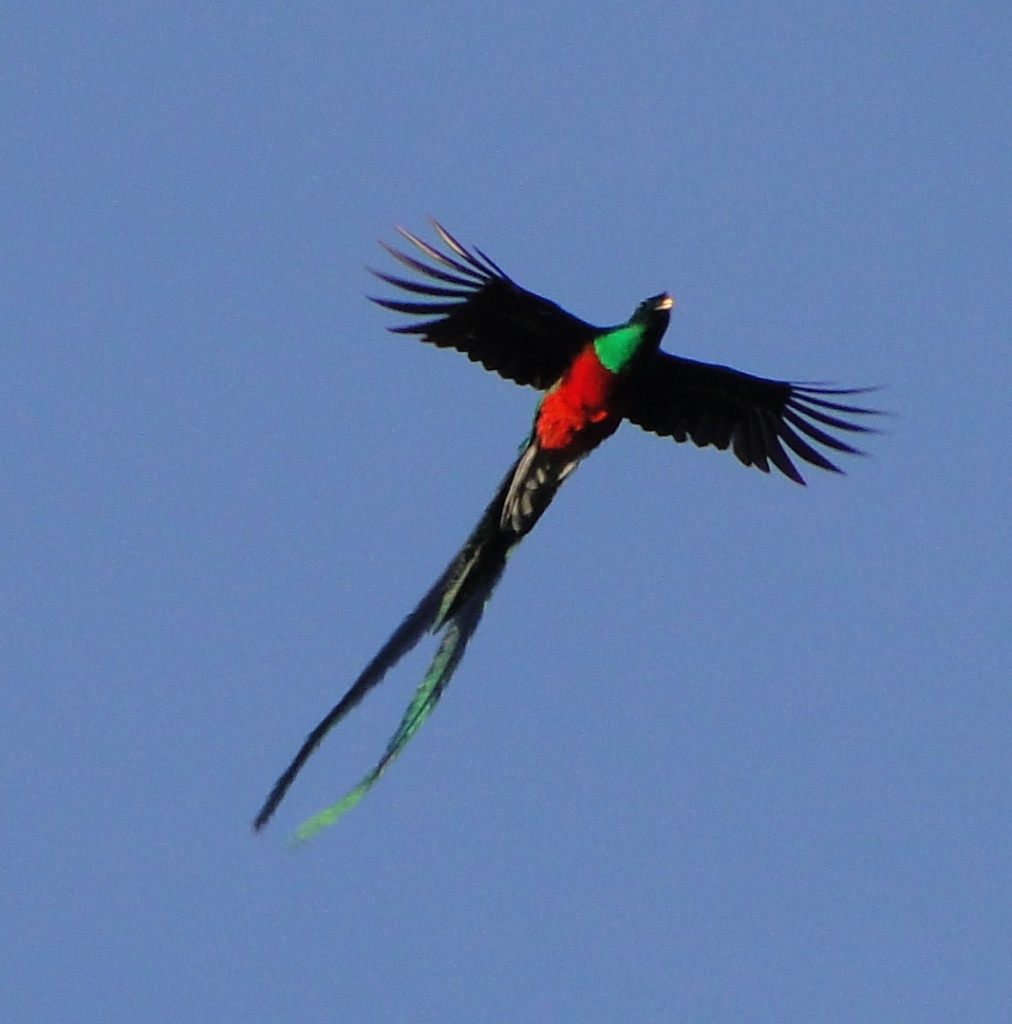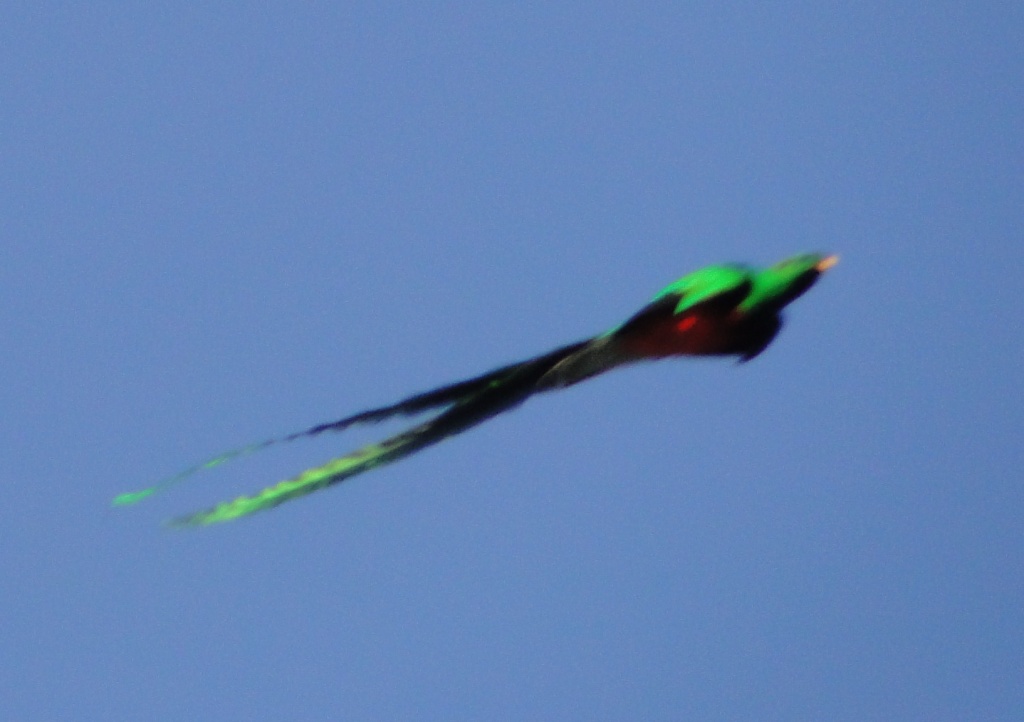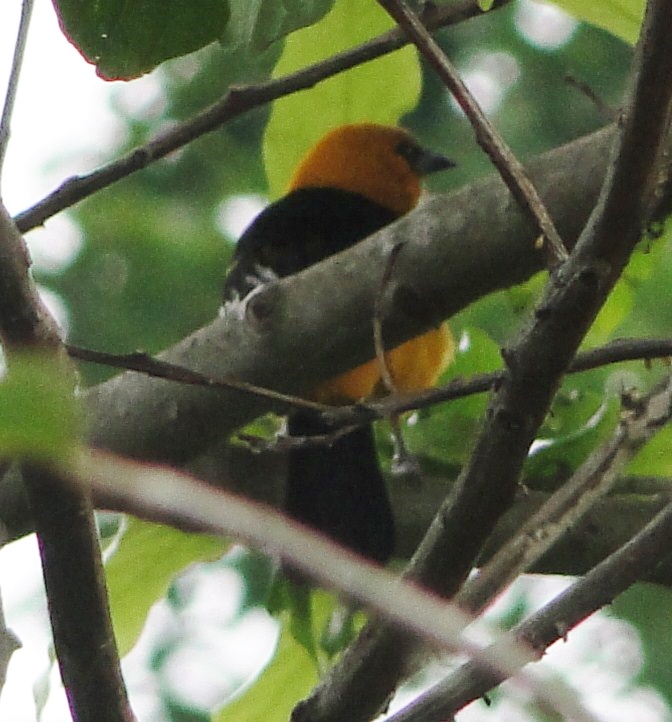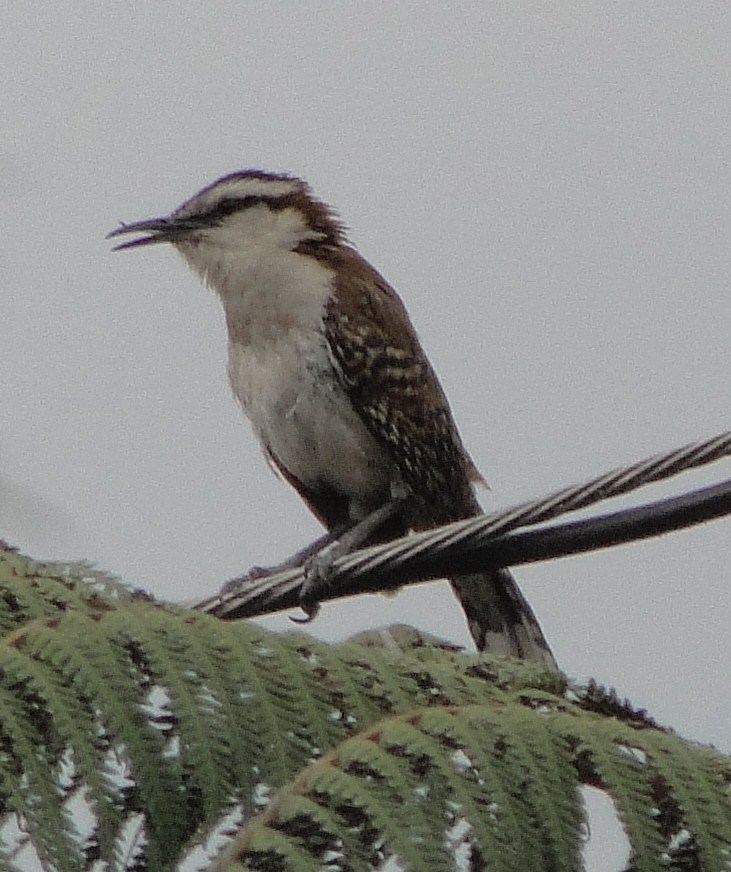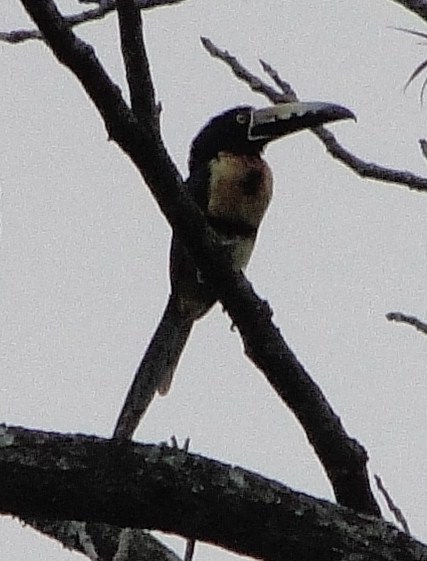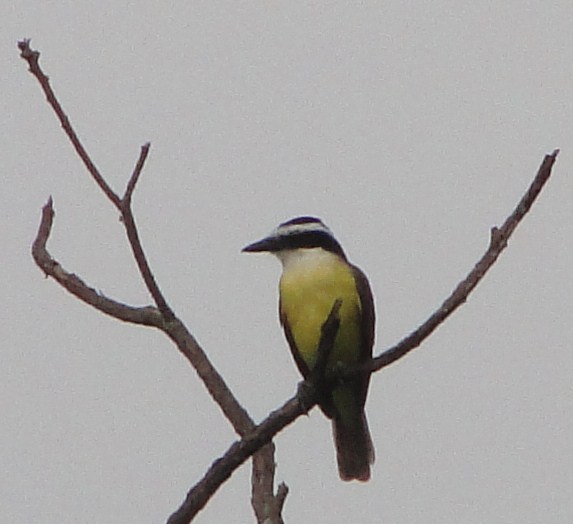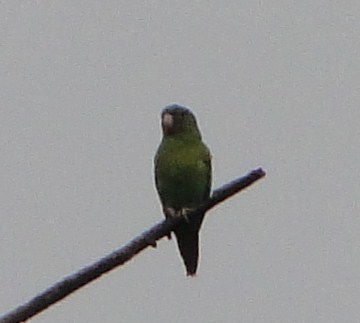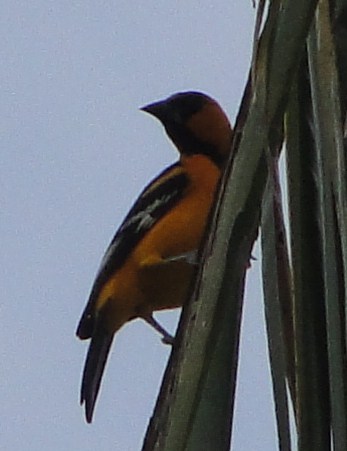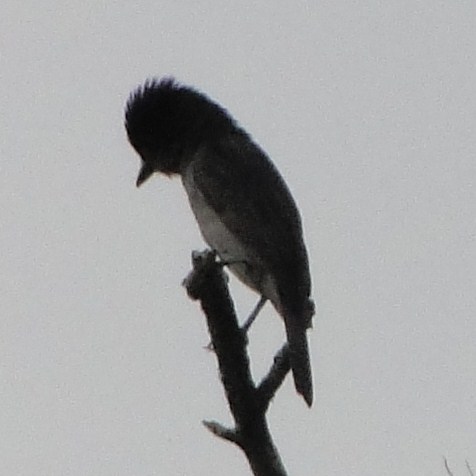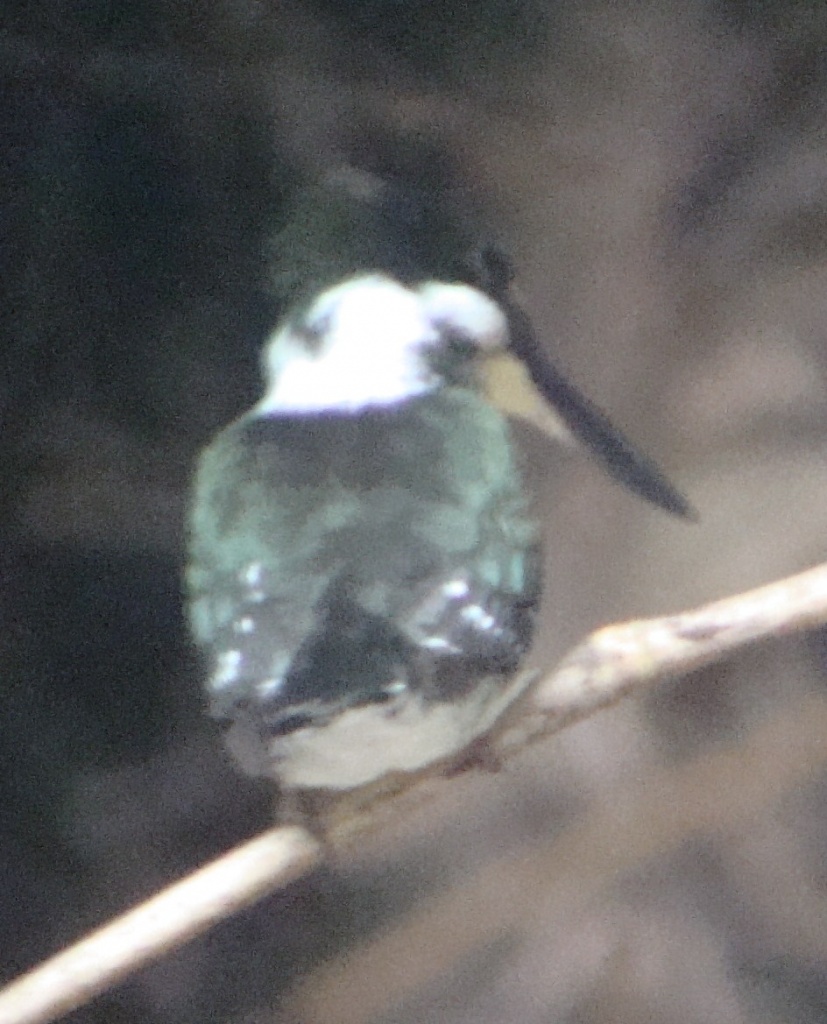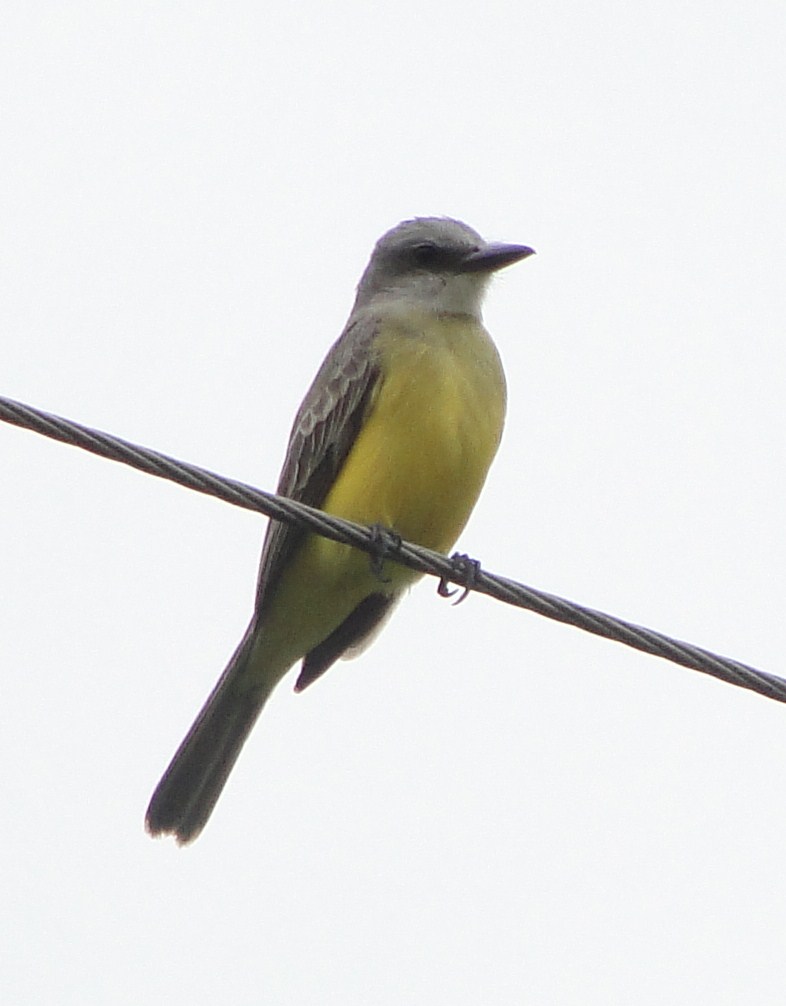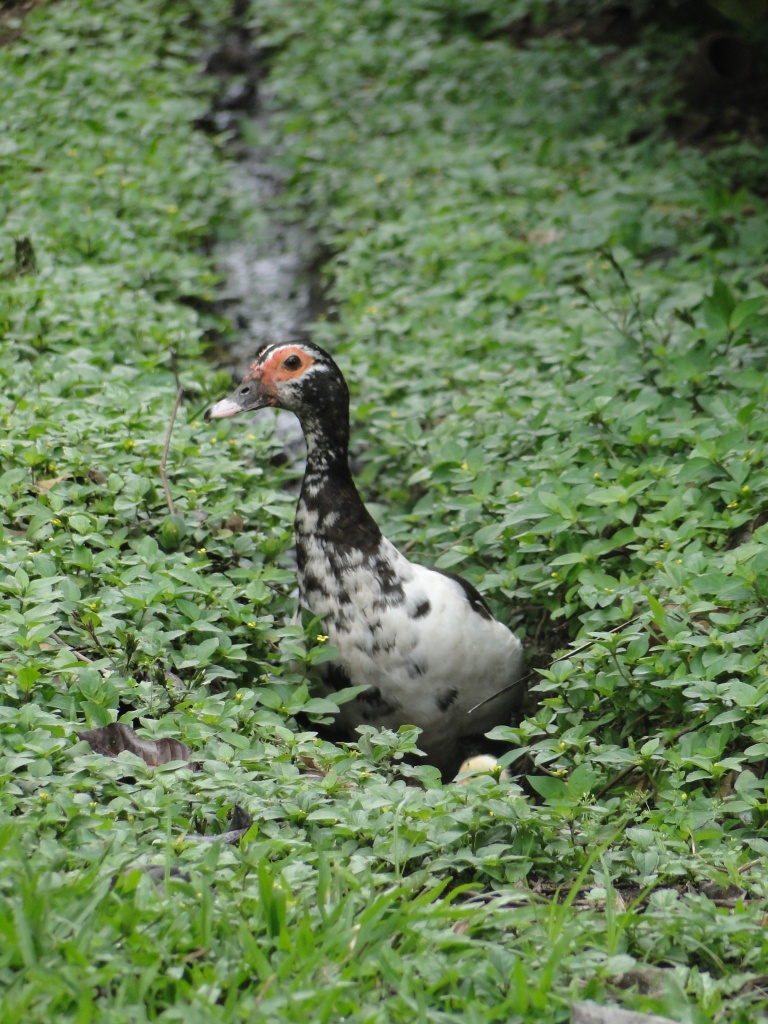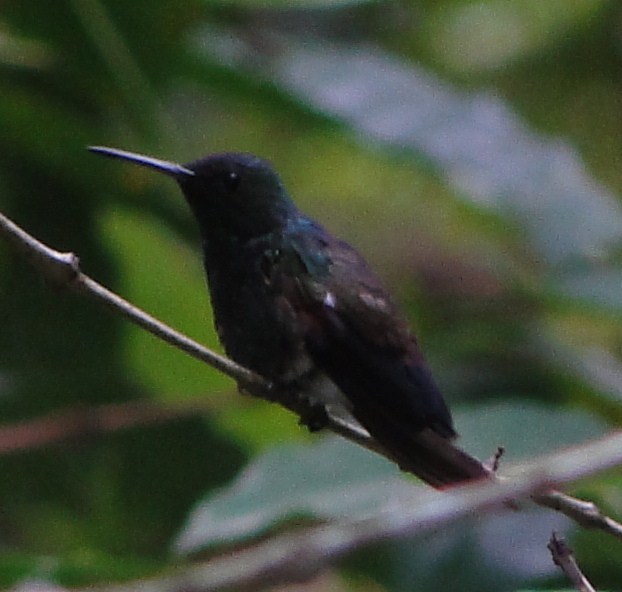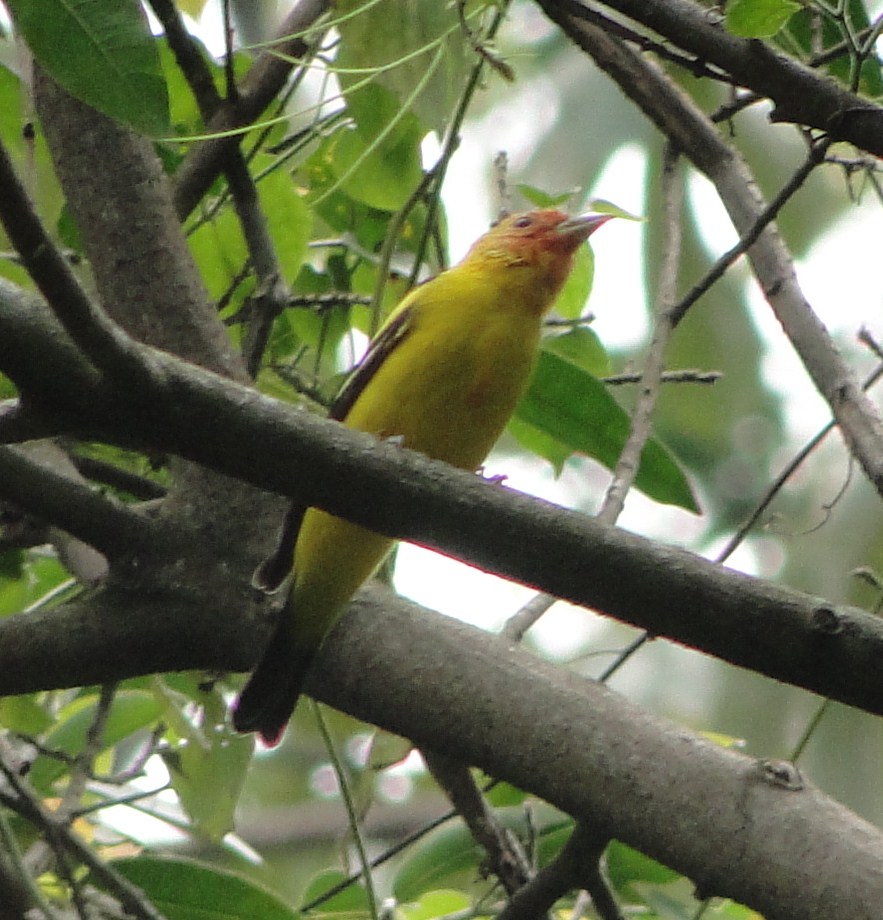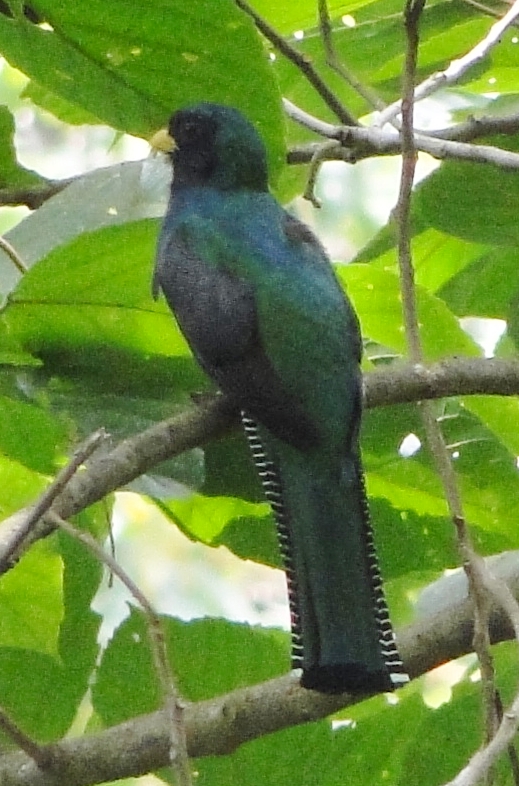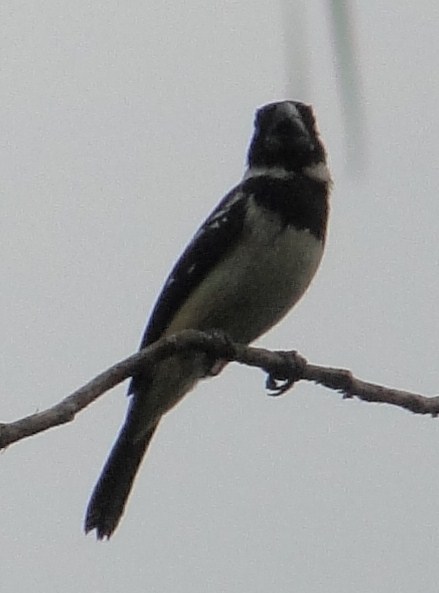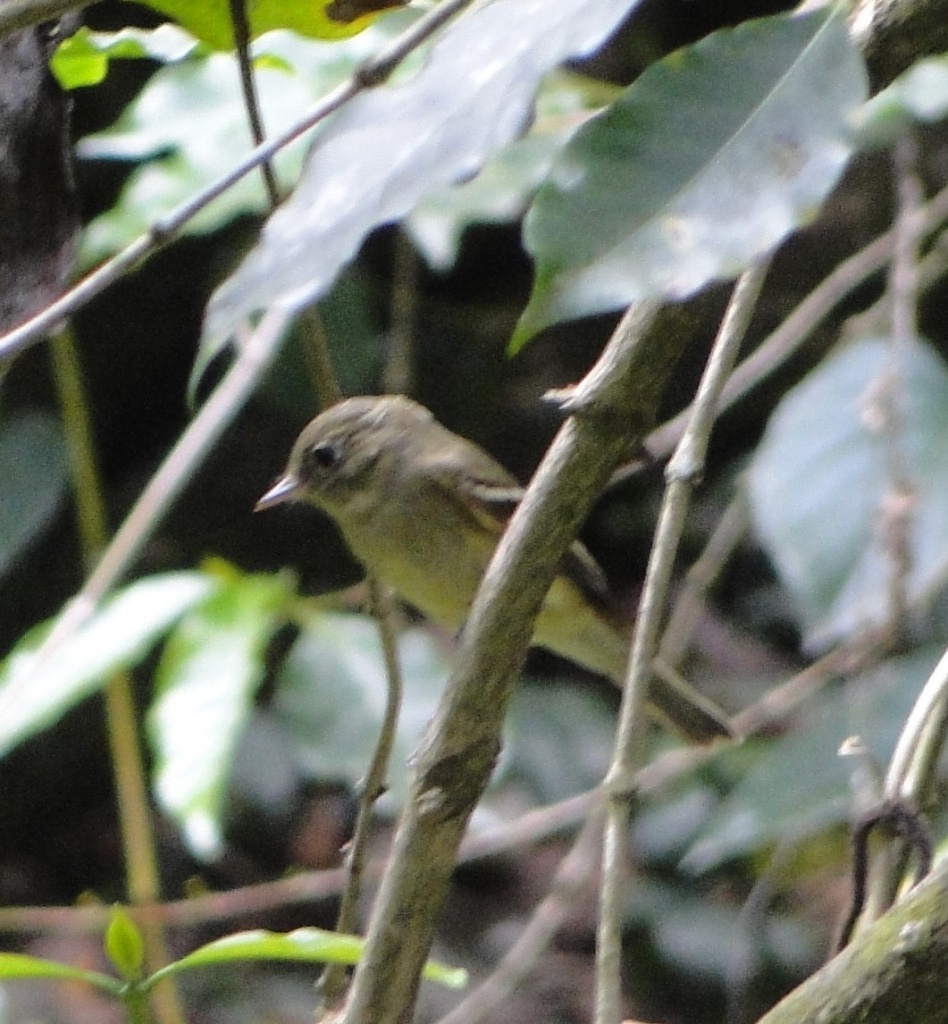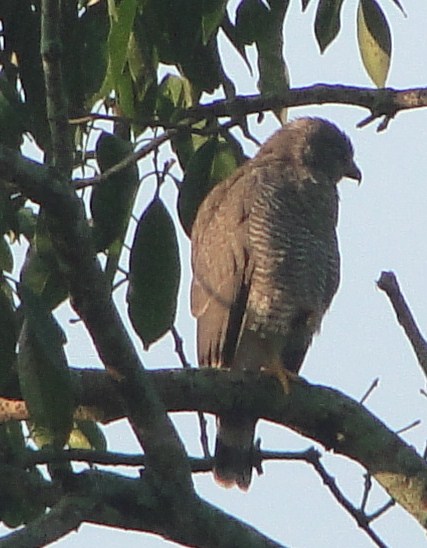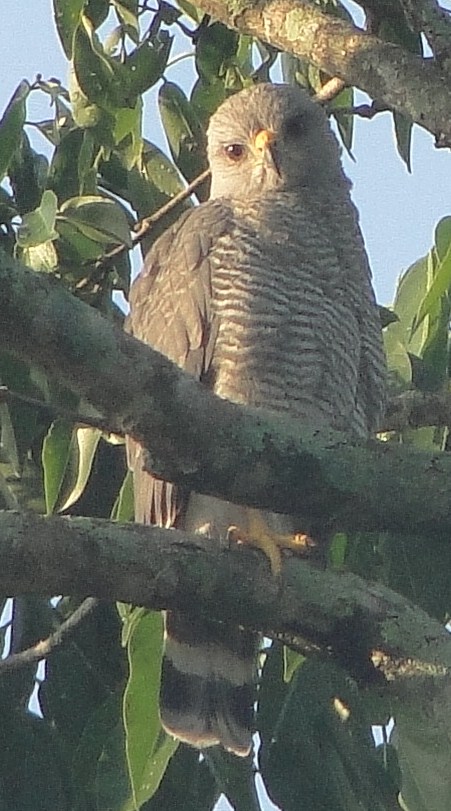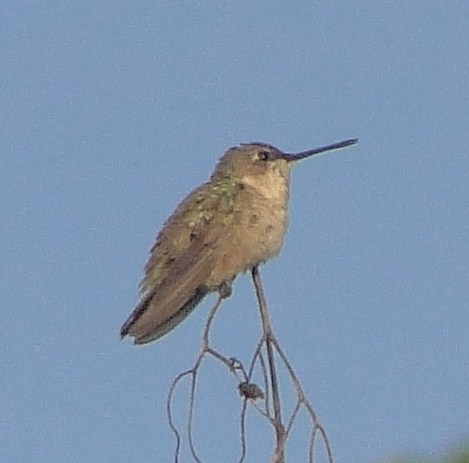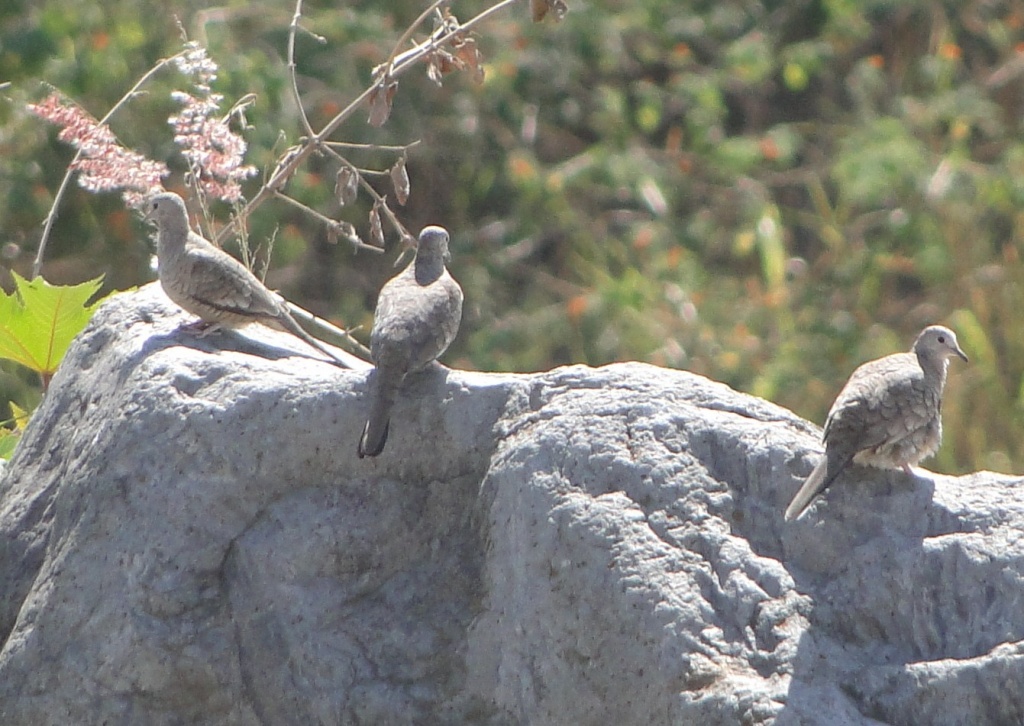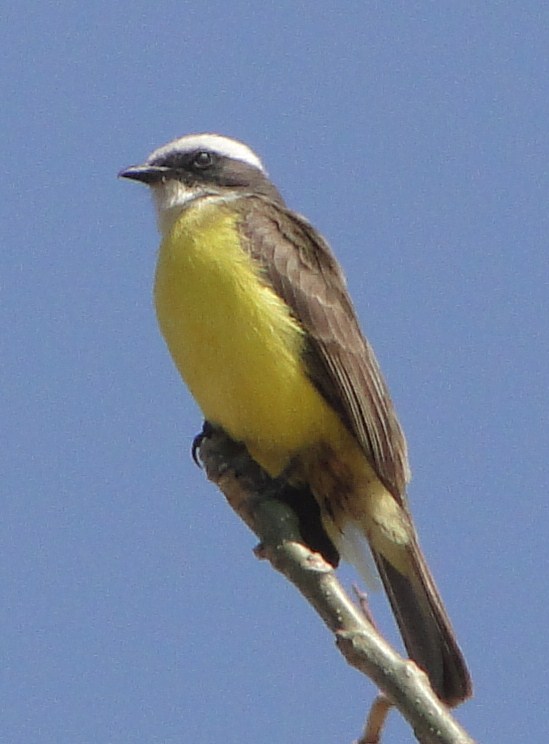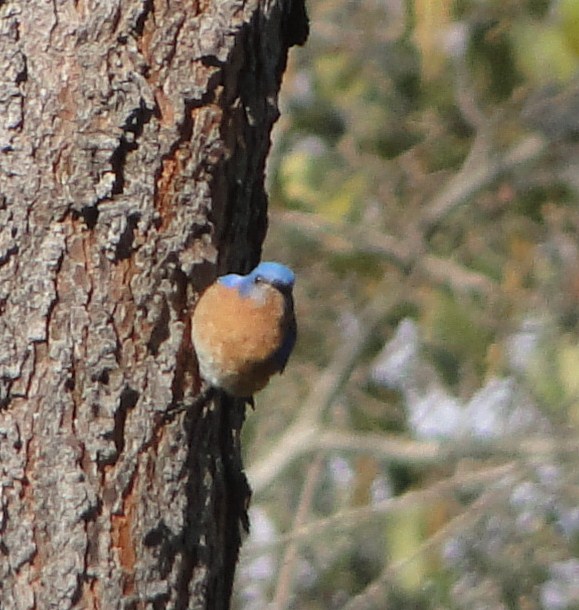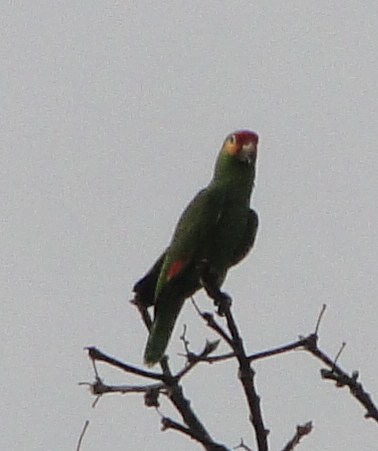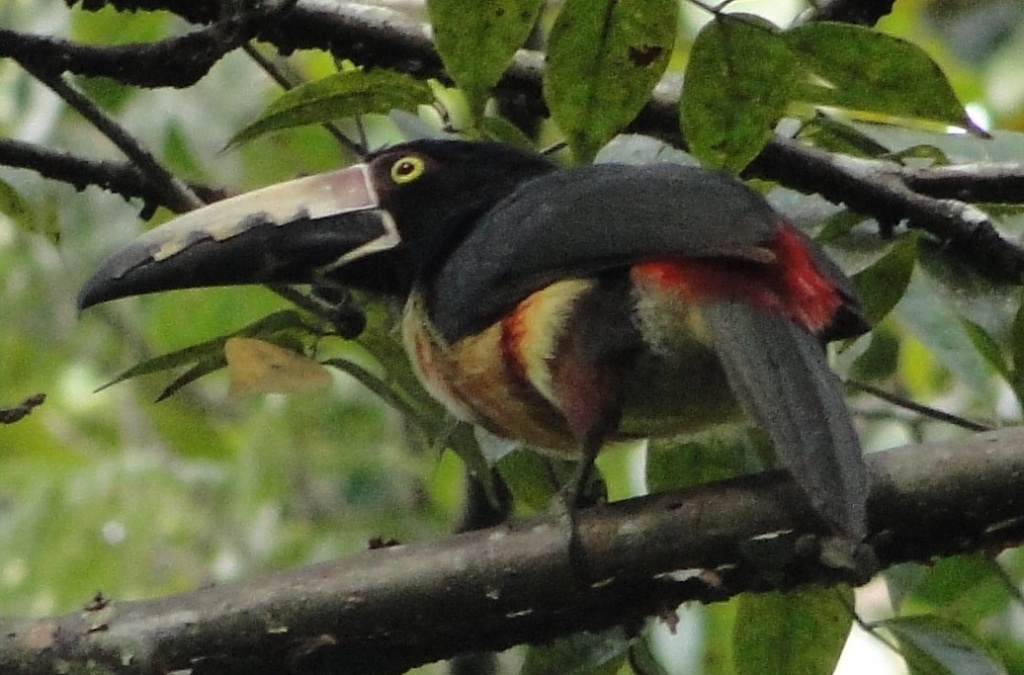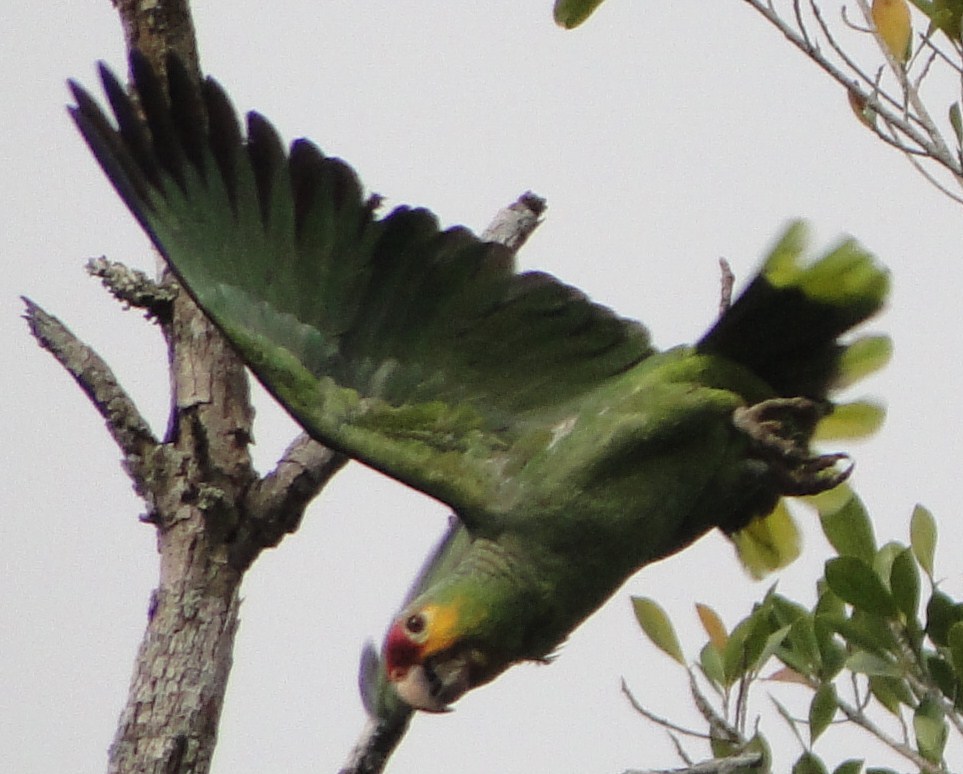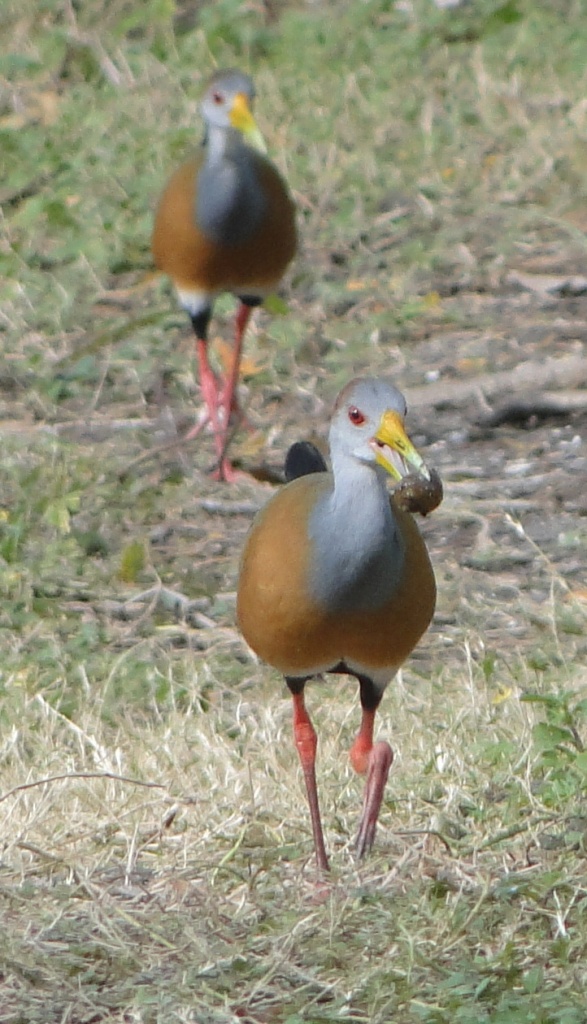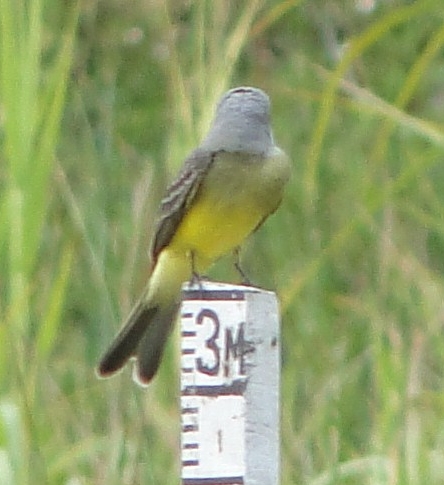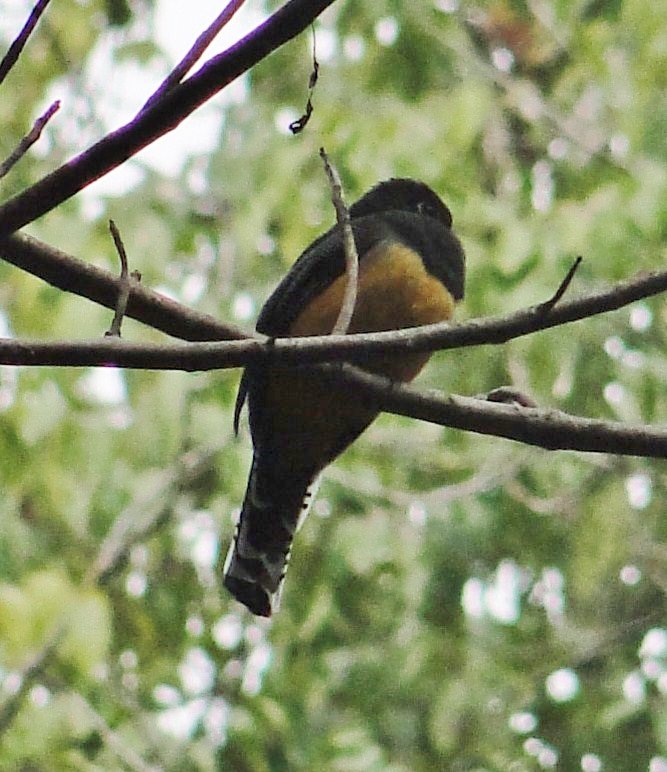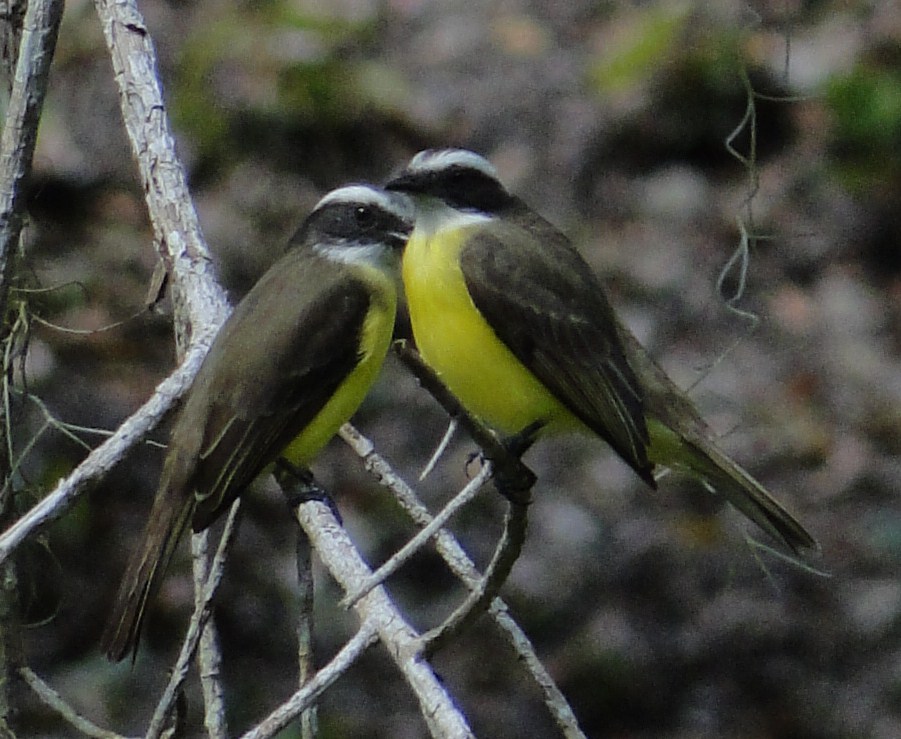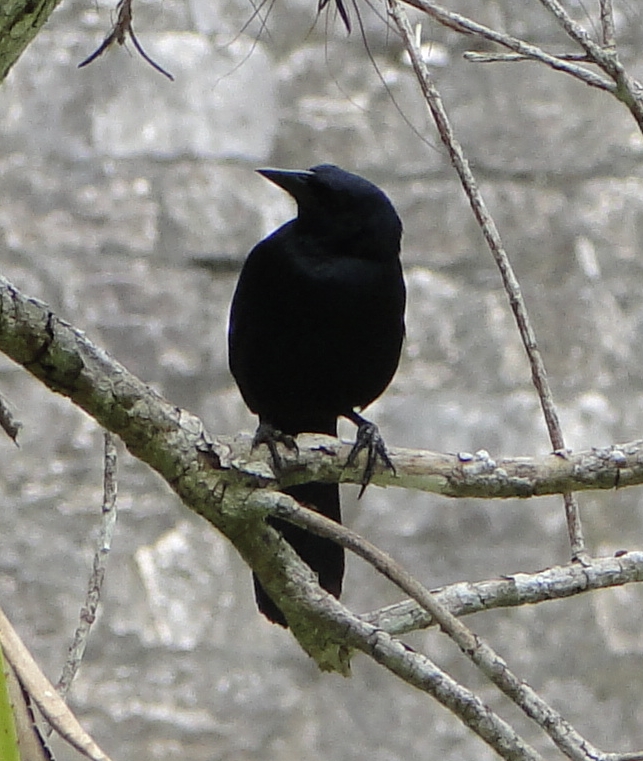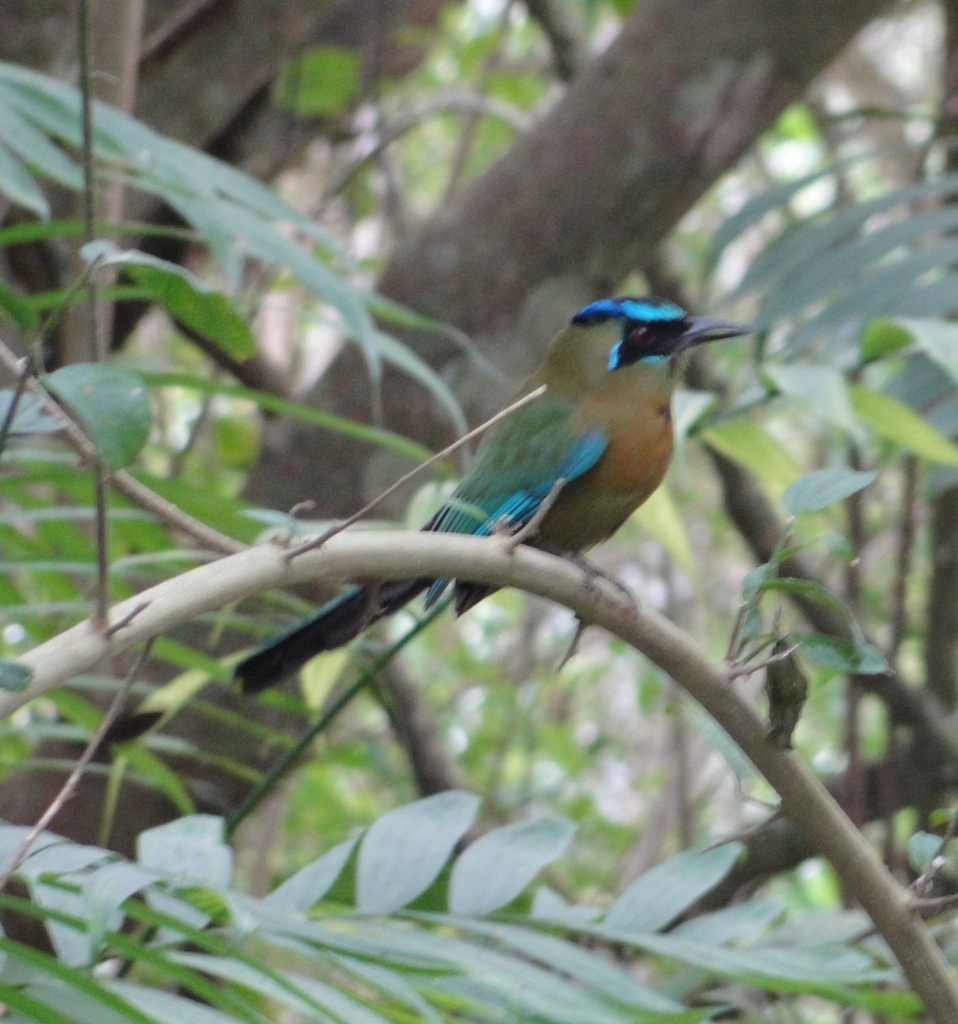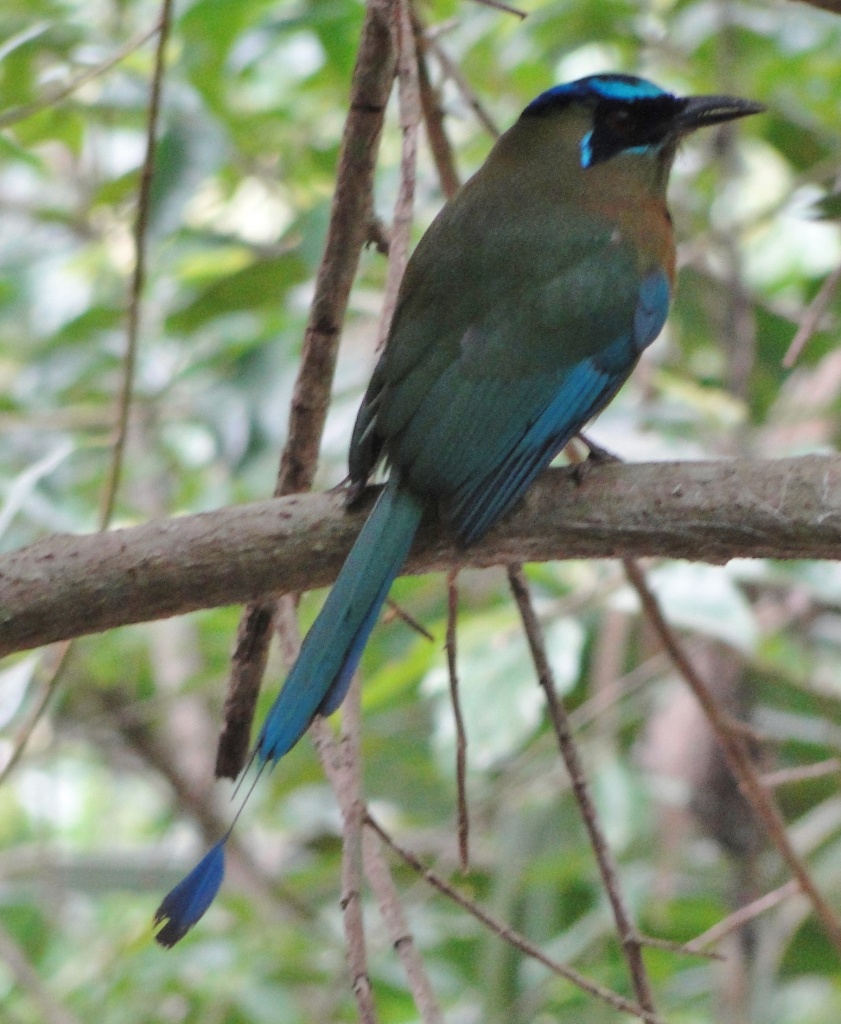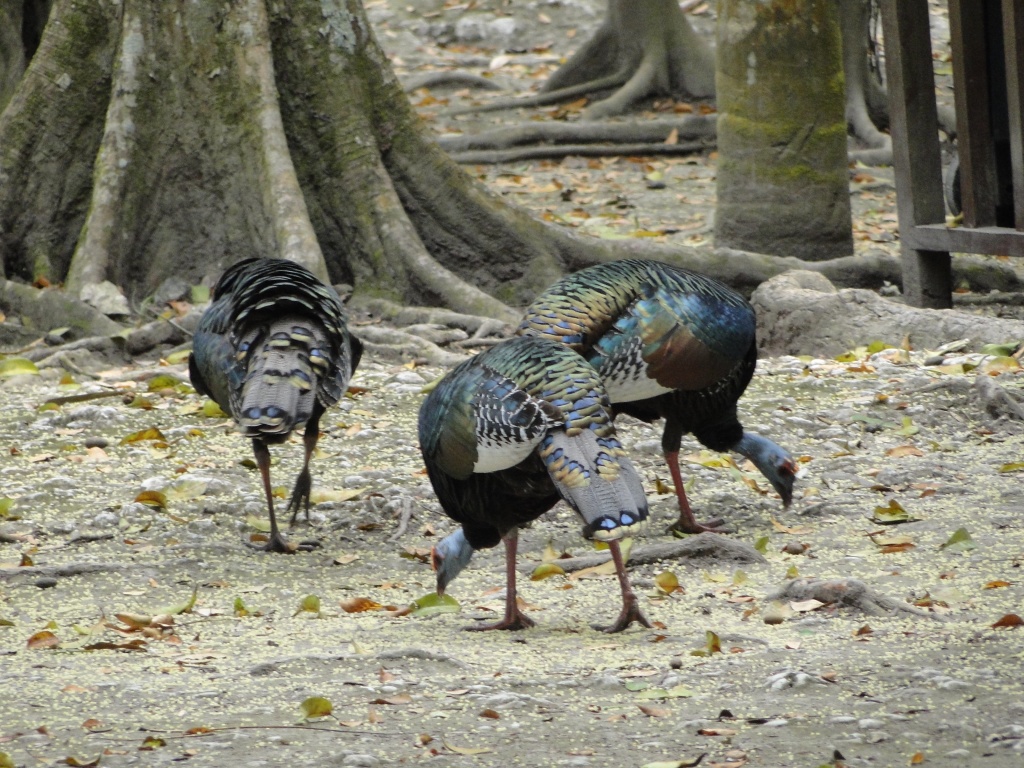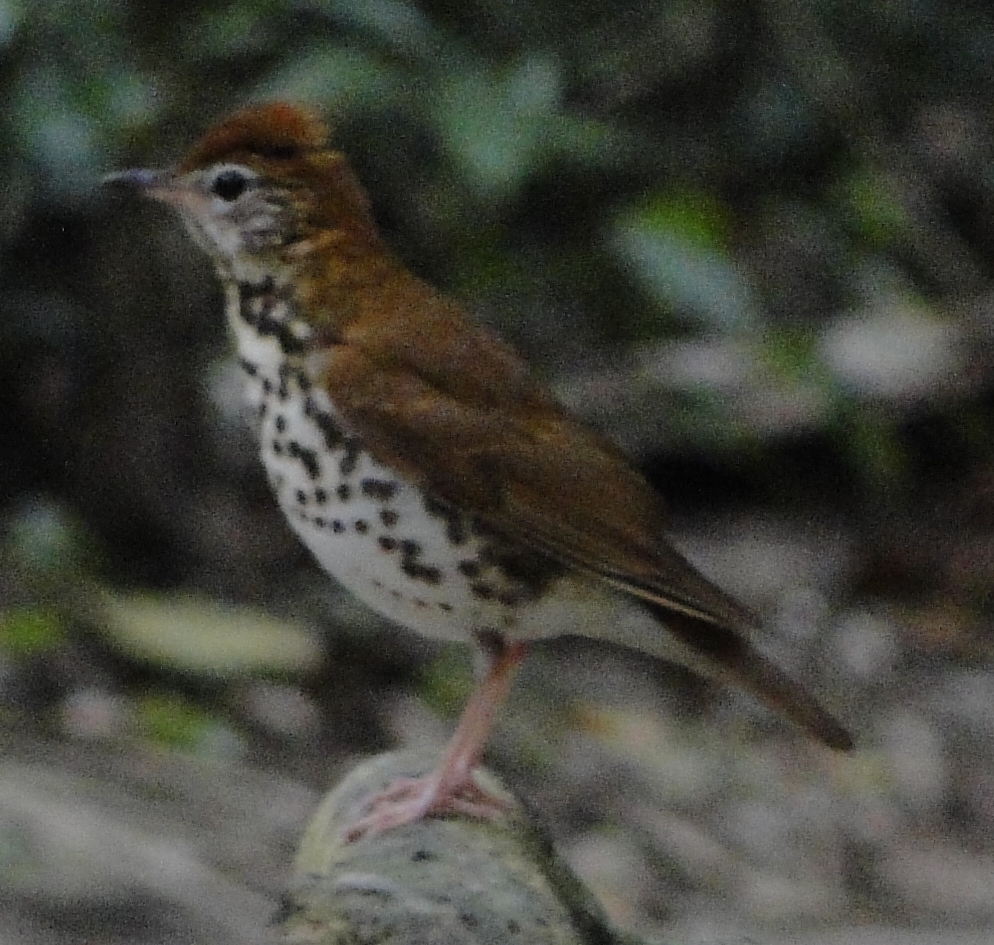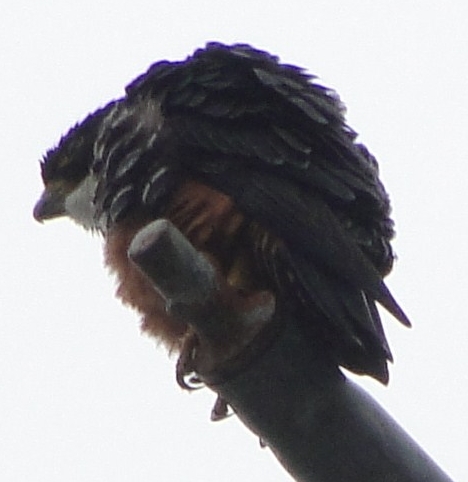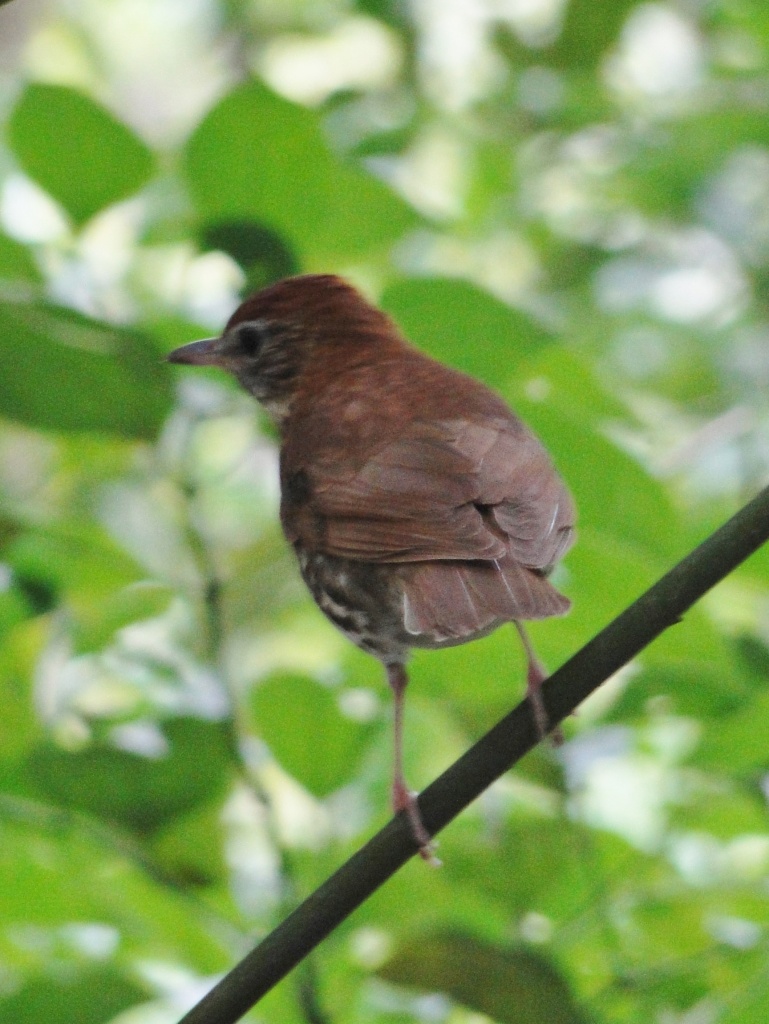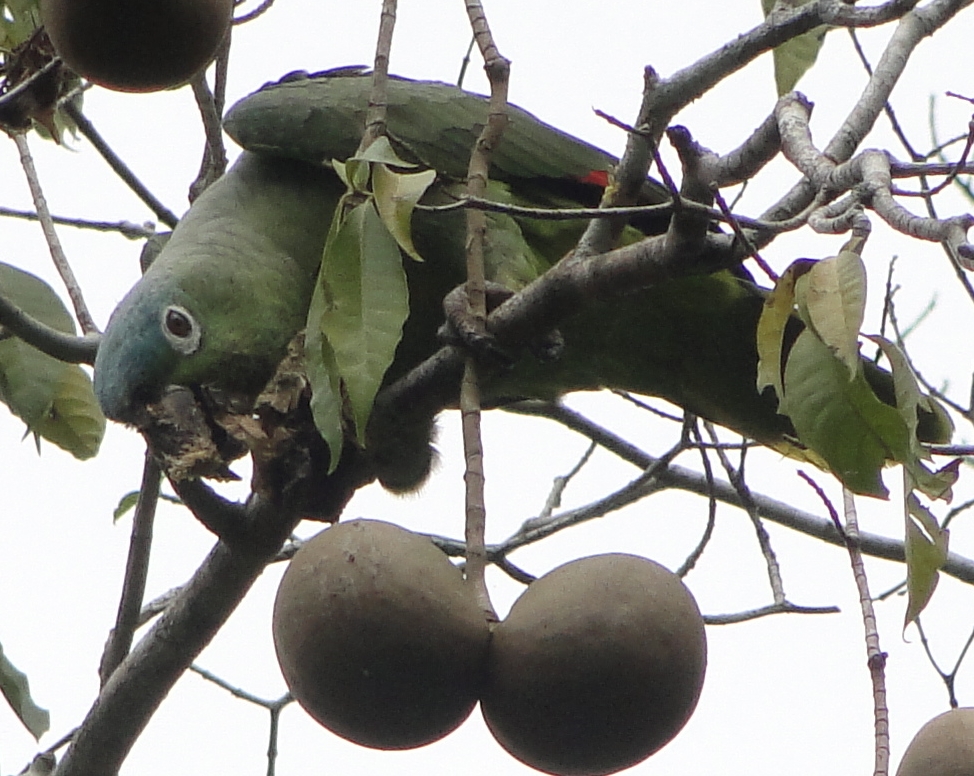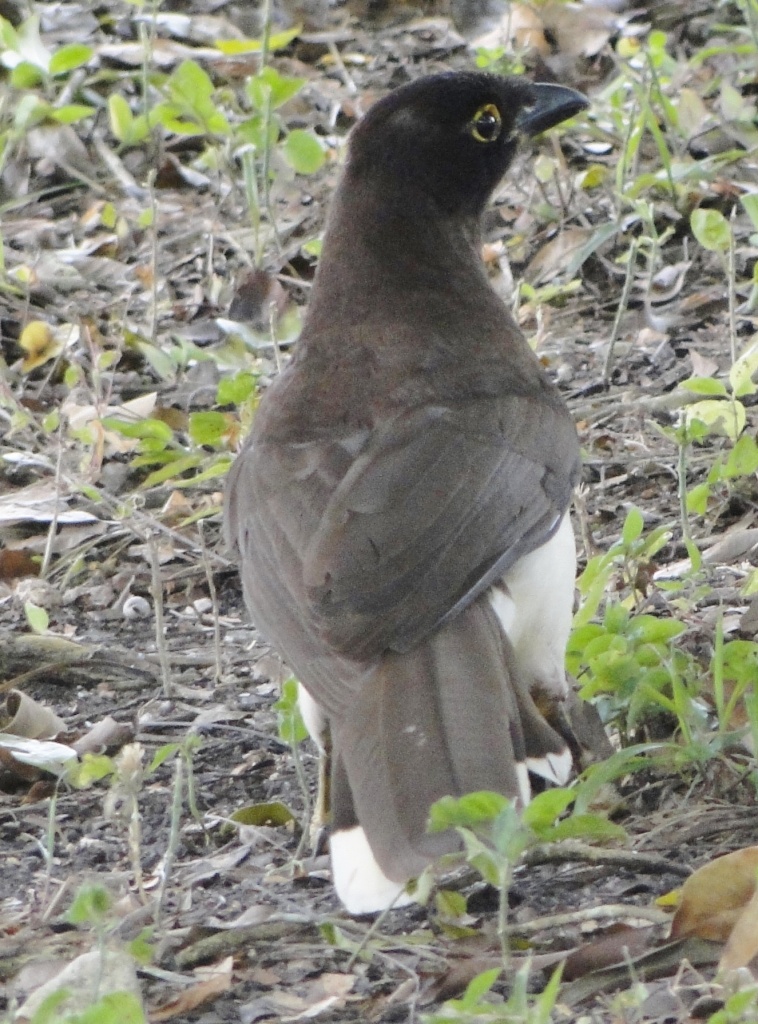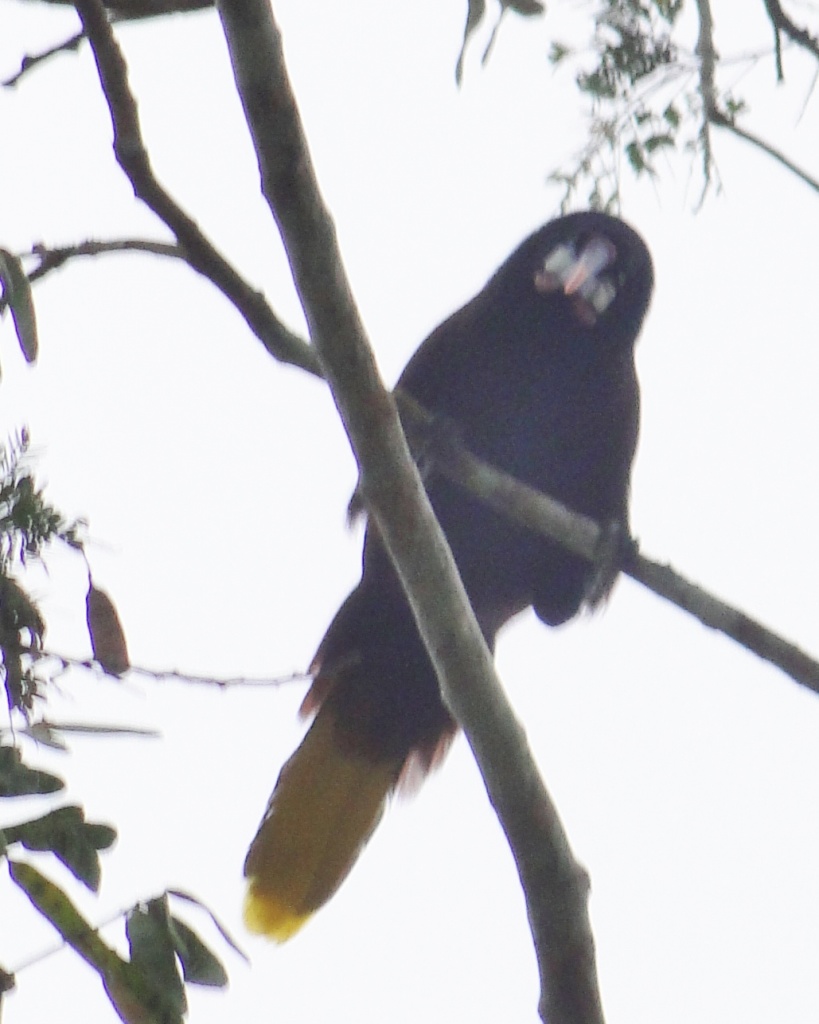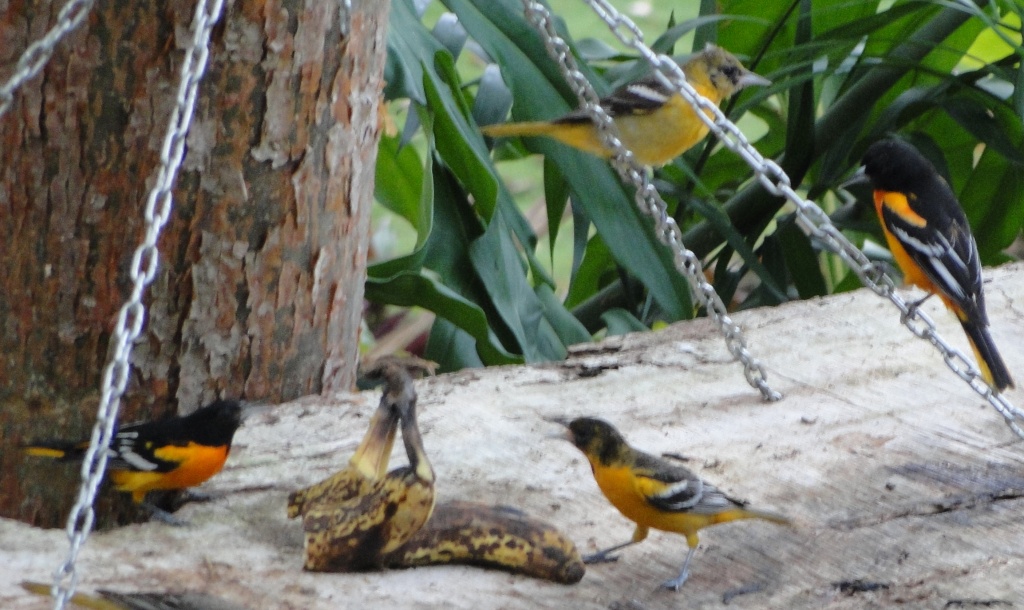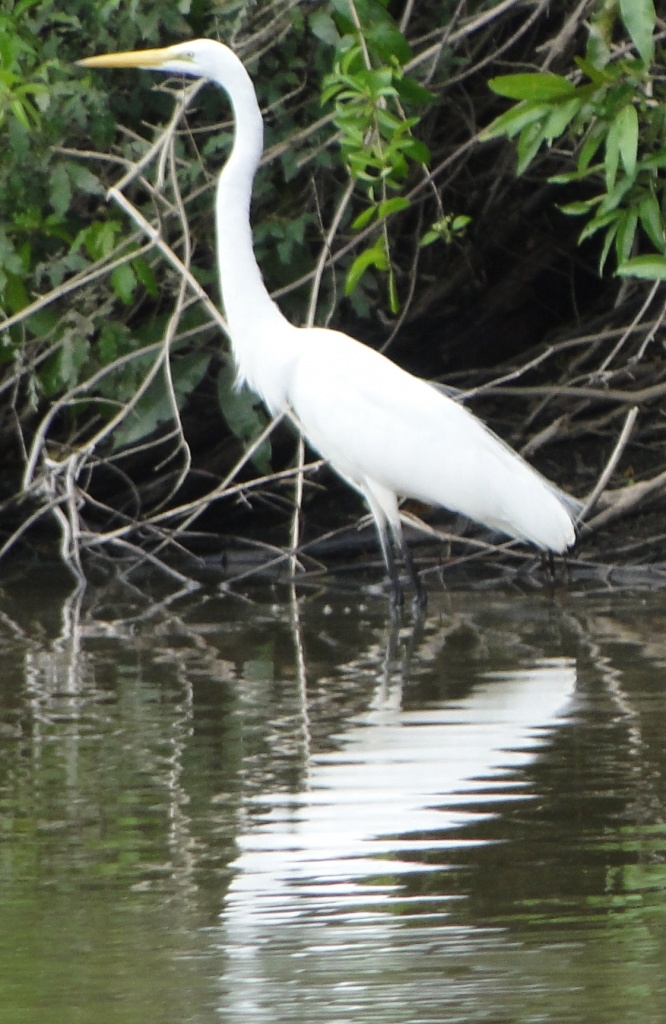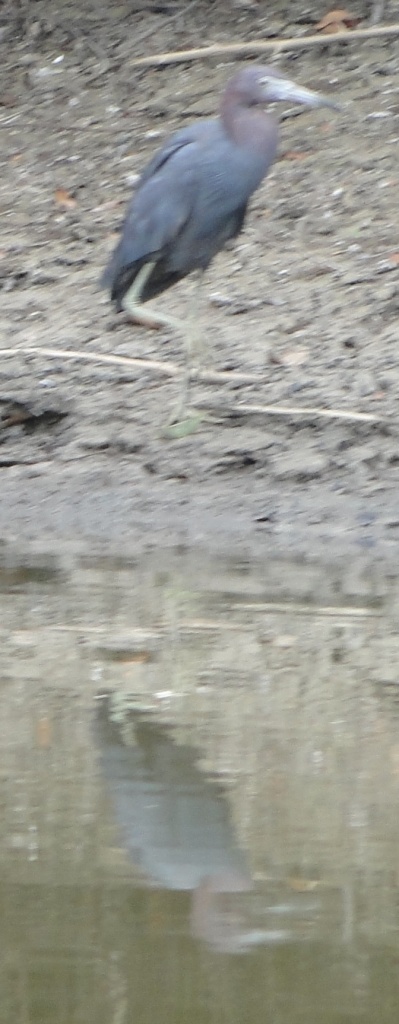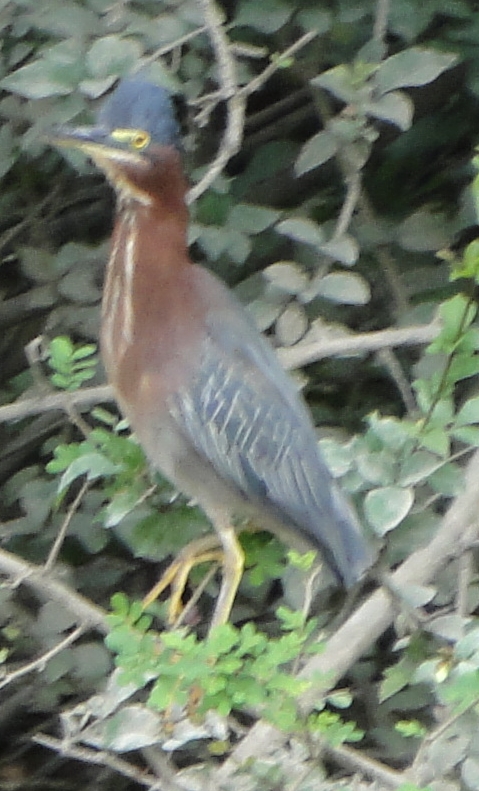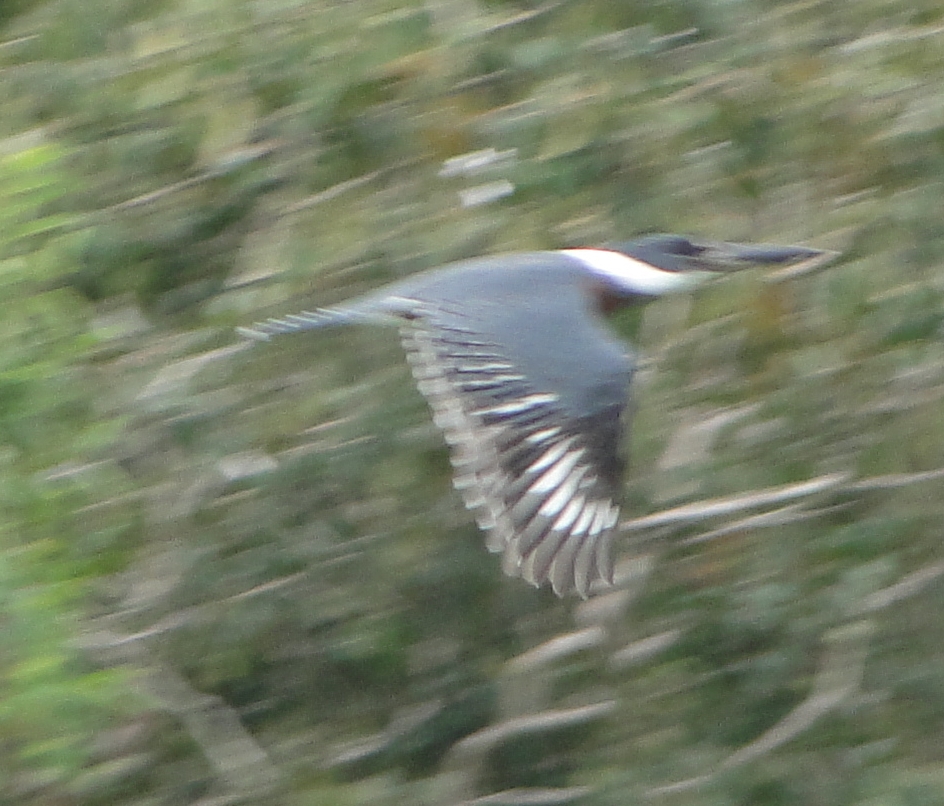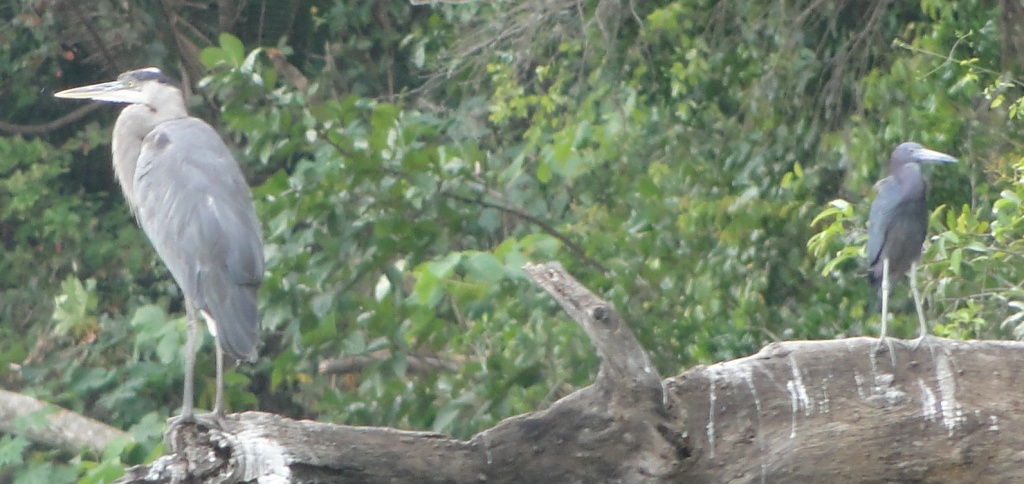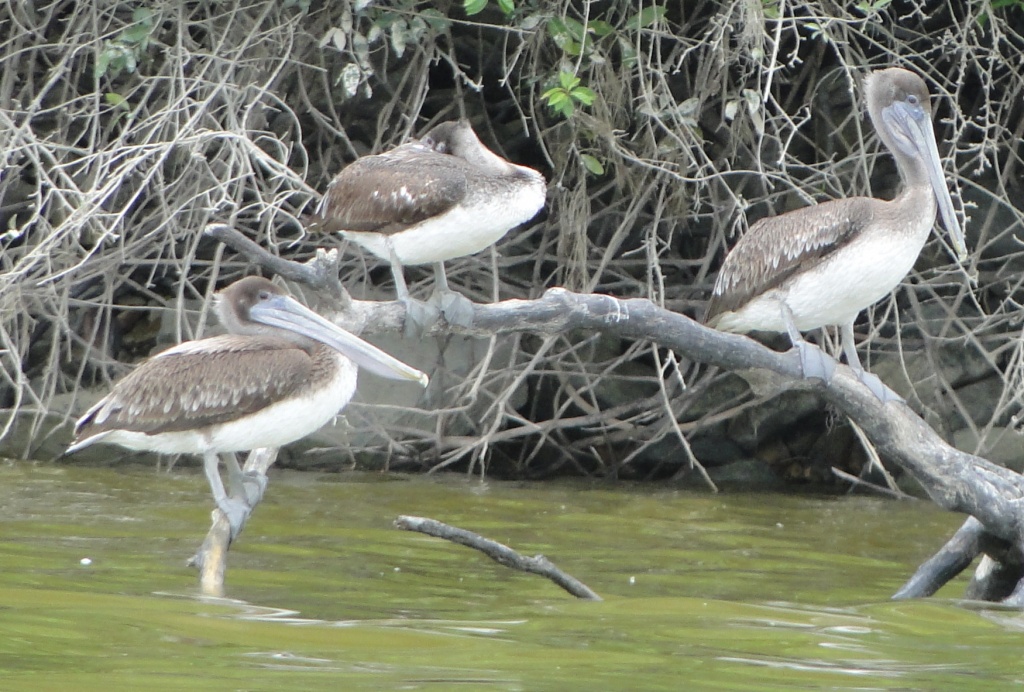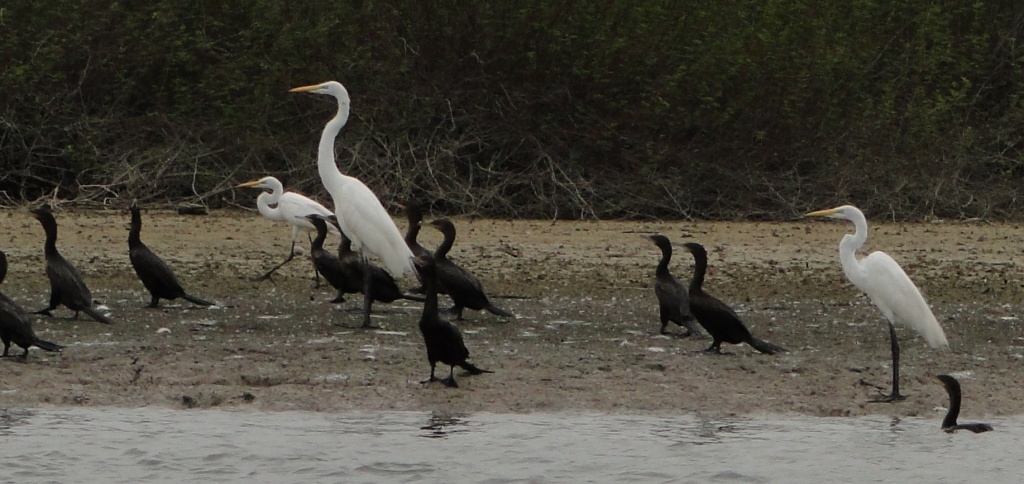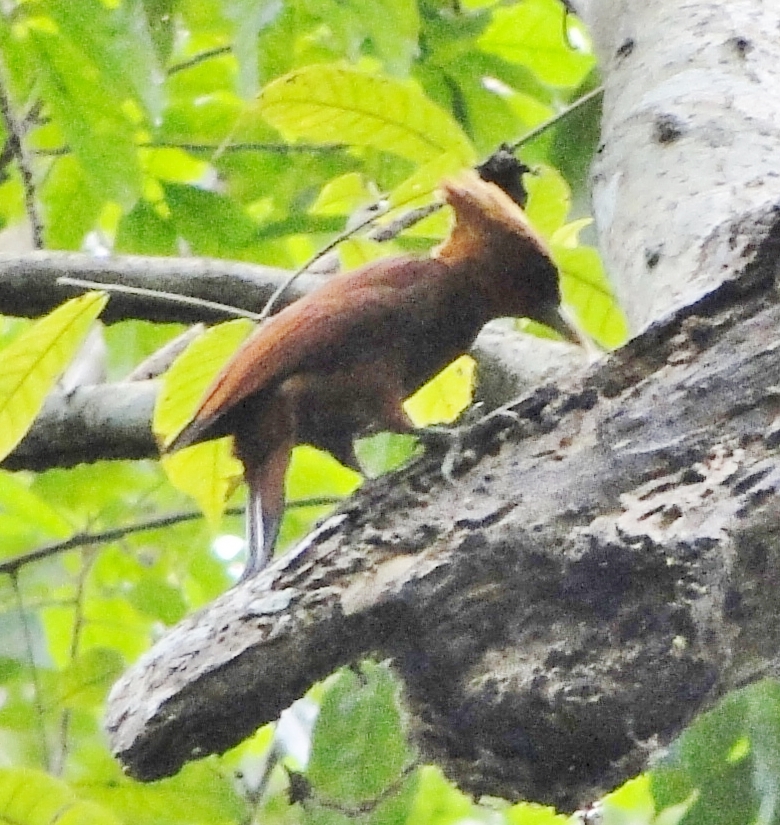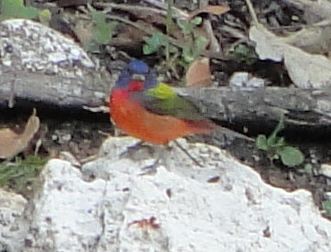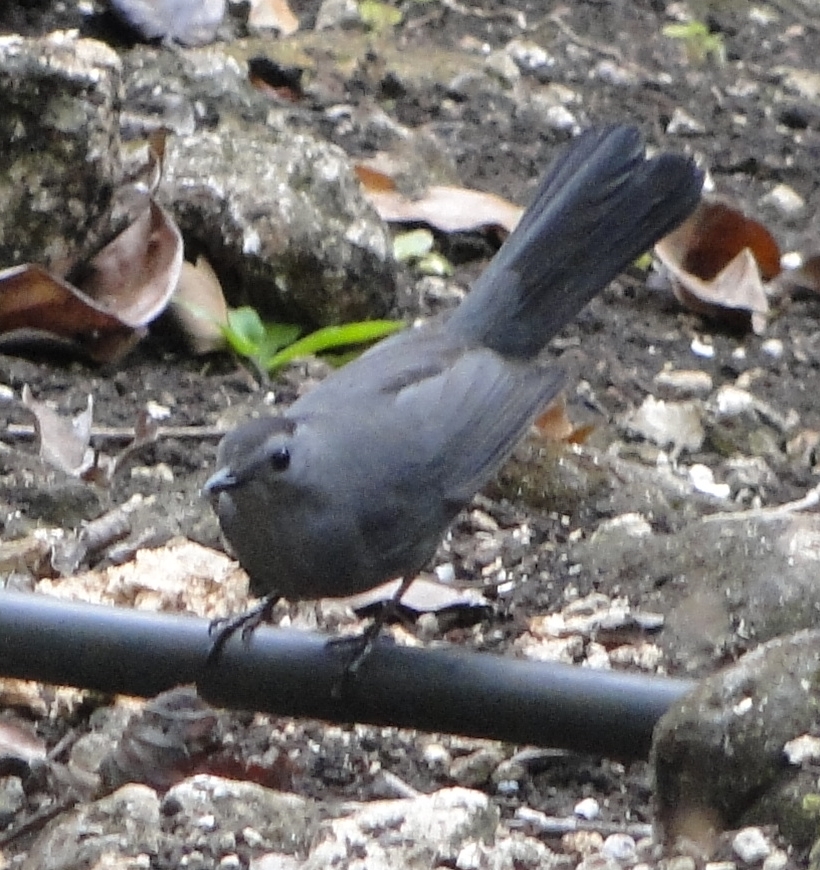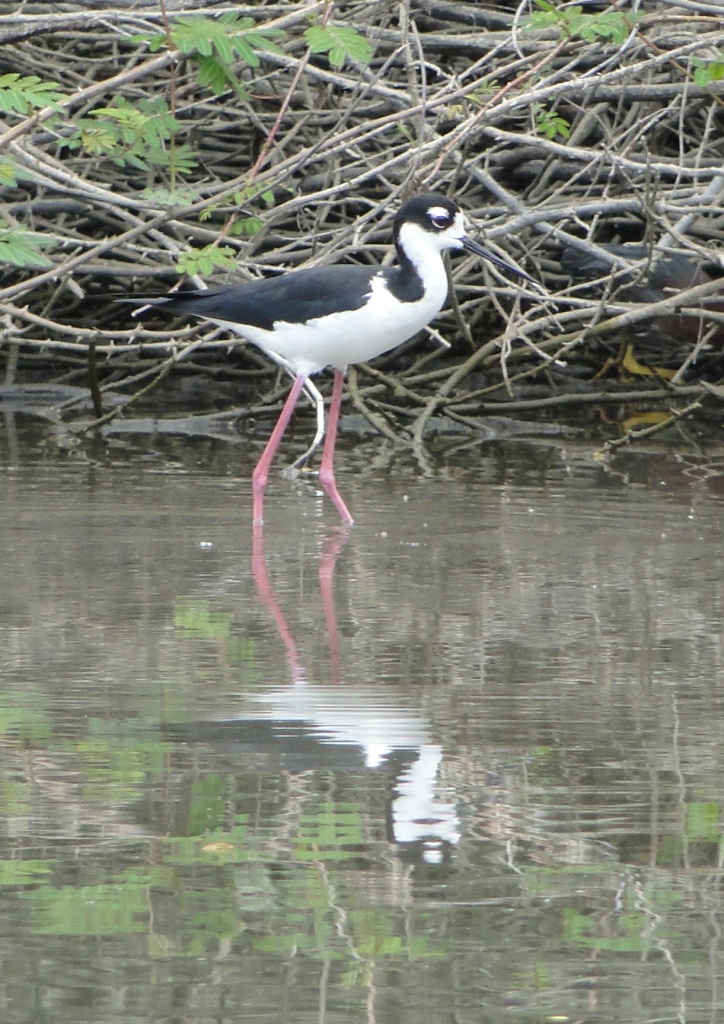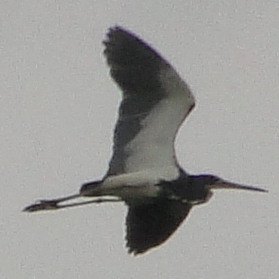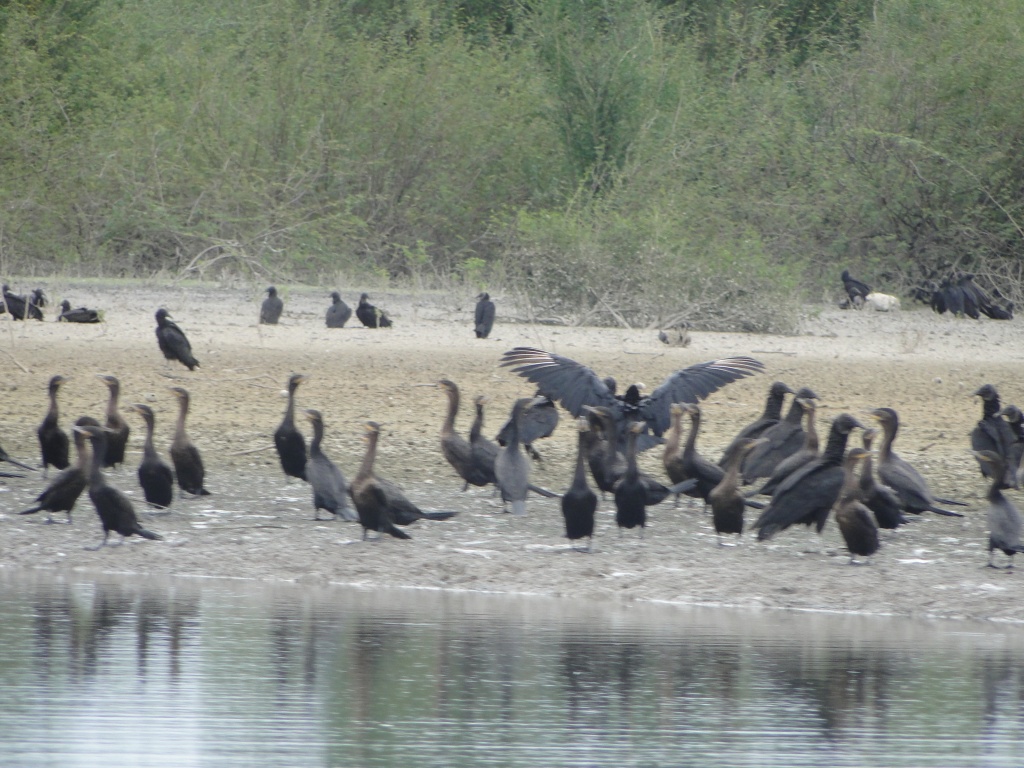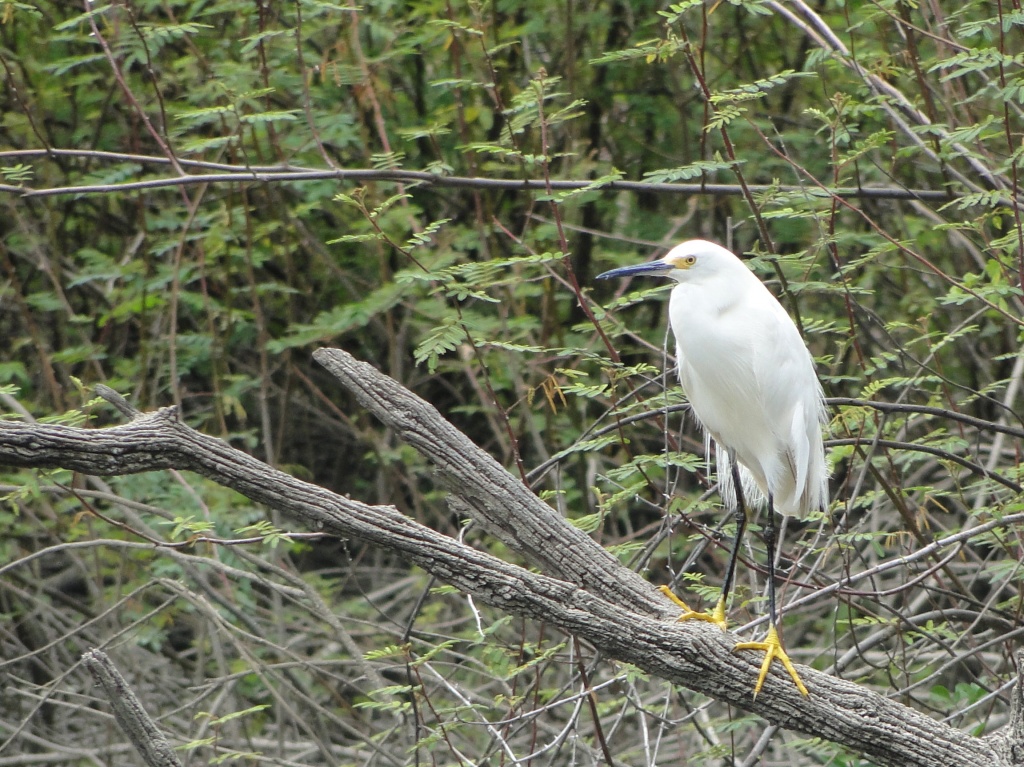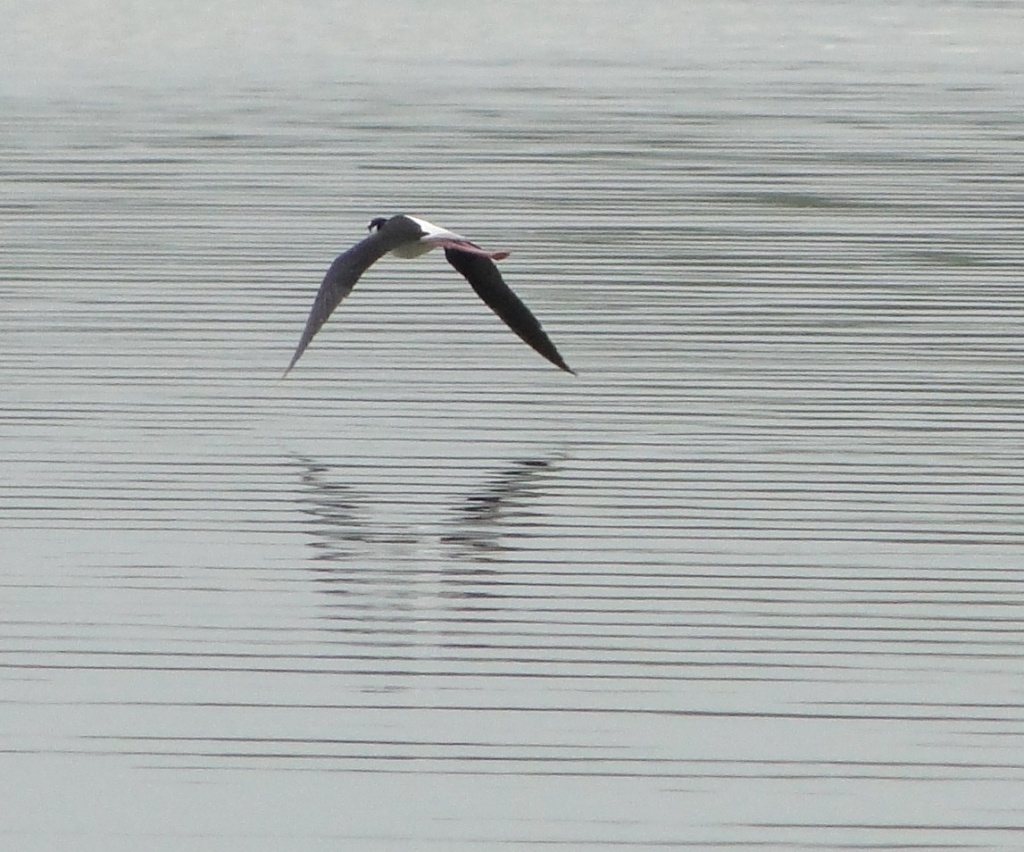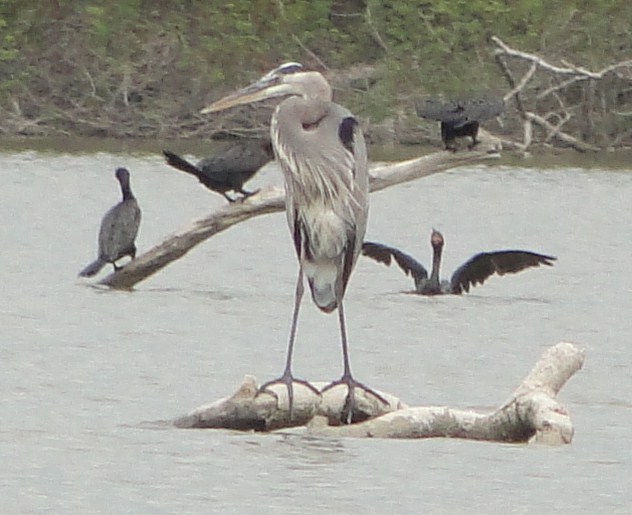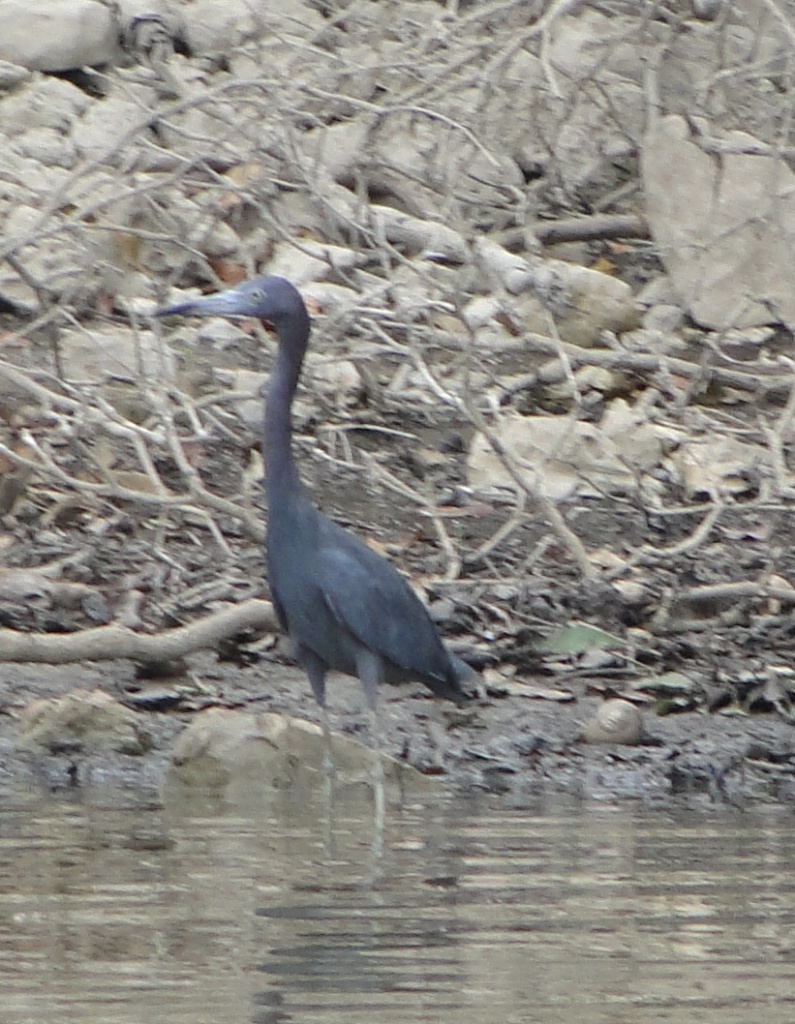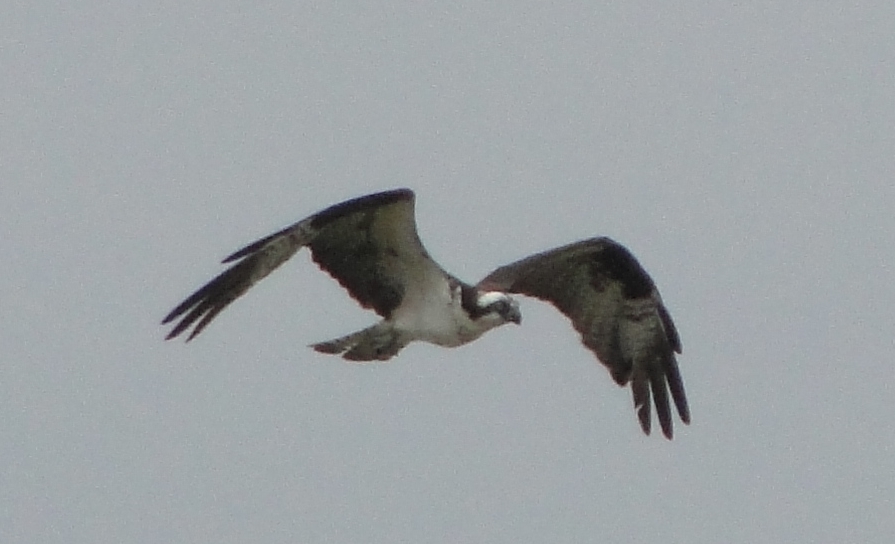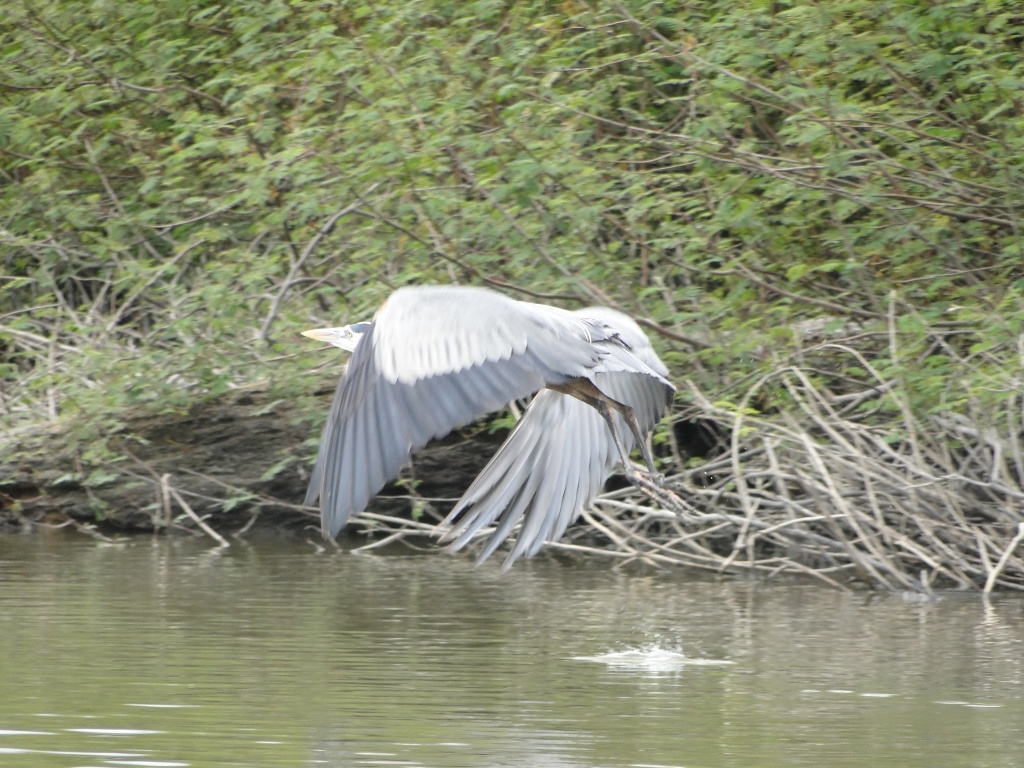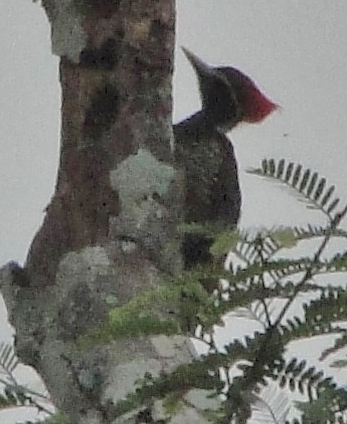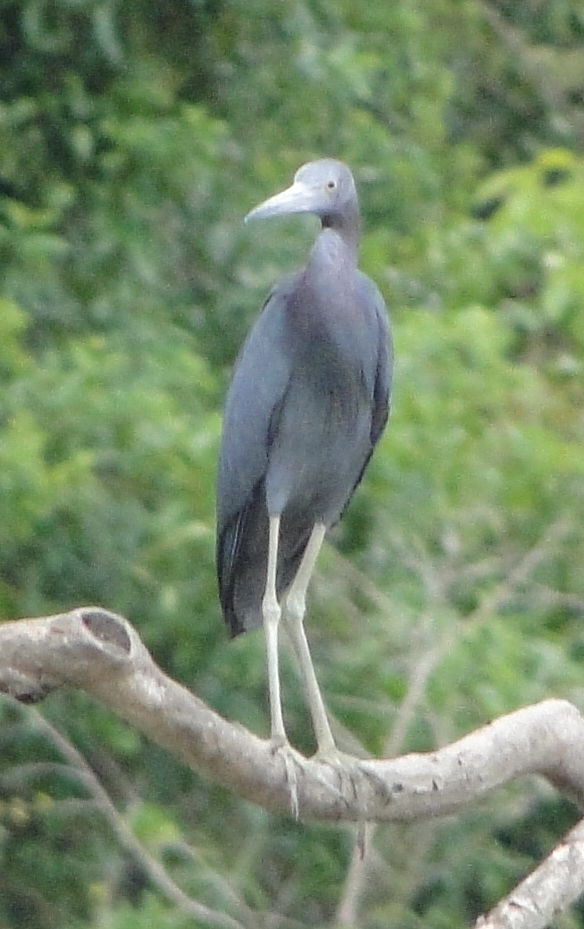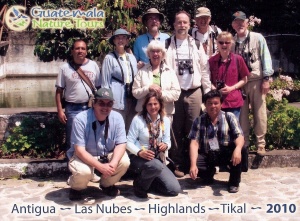These are some of my best photos of my favorite birds in Texas in September.
Hover over thumbnails for names. Click a thumbnail for larger image and slideshow.
Category Archives: birds
Bullock’s Oriole feeding
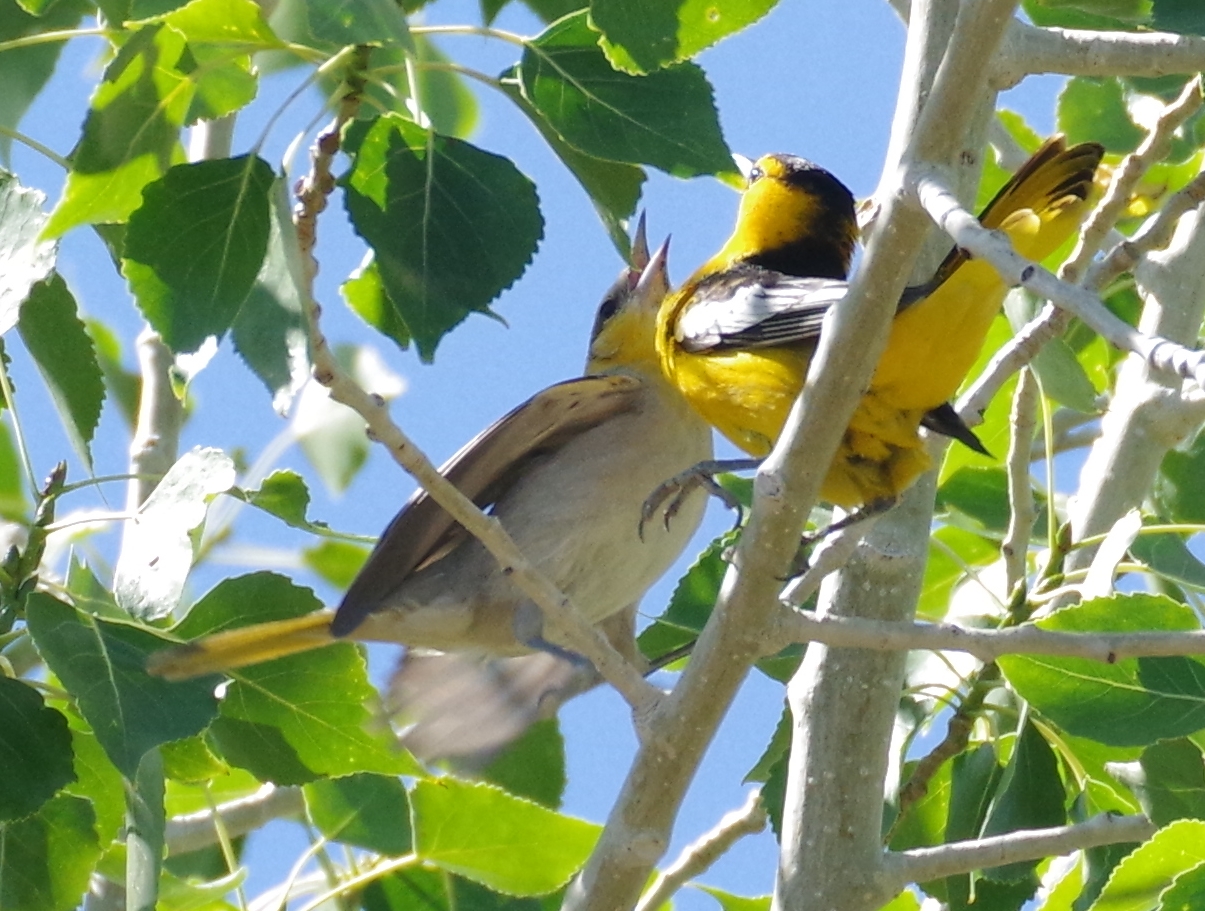
Birds of Guatemala
These are most of the birds I photographed on a trip to Guatemala in 2010. (Culled from hundreds of photos.)
visitors 26347 | views 27574
Trip to Guatemala 2010
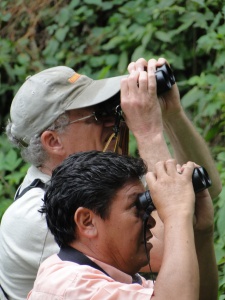
I’m re-posting this on the 14th anniversary of the trip.
Eight friends traveled for 12 days in Guatemala at the end of February and beginning of March, 2010. Our trip was organized and lead by Dr David Mehlman, ornithologist & friend, with the help of Bitty Ramirez-Portilla and Miguel Marin, among other local guides and hosts.
Our primary motivation was, ostensibly, birding plus visiting some Mayan ruins. Most of this group had traveled together on one or two trips to Ecuador. This was my first trip; I was working on earlier occasions. (This was also my first time on an airplane since January 2002 and my first time out of the country — other than driving to Canada — since 1991.)
[See the birds from this trip.]
Albuquerque to Houston to Guatemala City to Antigua
The first day of our trip ended after miles of travel in a former capital of the Spanish empire, Antigua, an old city of narrow cobblestone streets. We stayed two nights at Las Farolas (the lanterns), a lovely hotel with an interior courtyard that contained a tidy jungle dense with diverse plants and trees that towered over the building. It was hard to believe we were in the middle of a city when looking out from the balcony at the lushness and relative stillness.
Antigua is home to many language schools, so it provides an interesting mix of locals and visitors. Outside of Guatemala City, this was our most urban stop, with some shopping and multiple trips to ATMs for Quetzales, the Guatemalan currency (roughly eight to a dollar) named after a glorious, indigenous bird we hoped to see — and did, later!
About 4am of our first night in country, we experienced an earthquake. I thought I had accidentally activated a vibrating bed function. That morning we drove out to Finca (farm) el Pilar for breakfast with a vista of several volcanoes, one of which smoked a bit. We took our first jungle stroll birding.
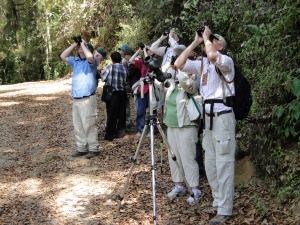 If you’ve never traveled with birders, the process consists of walking a few steps, freezing and pointing into a thicket, whispers and gestures, all binoculars pointed in the same direction. After a pause that sometimes lasts a half hour, everyone looks at pictures in a book of what we may have just seen. Sometimes, there are smiles and high fives. Repeat. Repeat. Repeat. It can be more fun than I make it seem; it can be just as interminable as I make it seem. Bird-walking requires a very different kind of stamina from other hiking.
If you’ve never traveled with birders, the process consists of walking a few steps, freezing and pointing into a thicket, whispers and gestures, all binoculars pointed in the same direction. After a pause that sometimes lasts a half hour, everyone looks at pictures in a book of what we may have just seen. Sometimes, there are smiles and high fives. Repeat. Repeat. Repeat. It can be more fun than I make it seem; it can be just as interminable as I make it seem. Bird-walking requires a very different kind of stamina from other hiking.
I do not mean to hurt the feelings of my birding friends. I really enjoyed the trip and saw many spectacular birds. At times, the excitement over this drab little bird or that was lost on me, but that’s my problem, not theirs.
In town, Mer spotted a purse in a market, but didn’t get it immediately, setting the stage for more than one return visit to the mercado. She also complimented a vendor on the street en español for her lovely blouse, to which came the reply, “make an offer” and some laughter over buying the clothes off of someone’s back. (At least, it seemed like a joke.)
It was also in Antigua that we had our first Gallo (rooster) of the trip. Gallo seems to be *the* beer of Central America. It also seems it is unavailable in the USA because of conflicts with Gallo wine. “Gallo y pollo” — beer and chicken — was our mainstay. (Moza was a good cerveza oscura.)
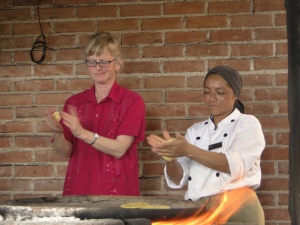 It was also here that Merri had her first lesson in making corn tortillas by hand at Finca Filadelfia (Spanish for “dangerously slick tileâ€).
It was also here that Merri had her first lesson in making corn tortillas by hand at Finca Filadelfia (Spanish for “dangerously slick tileâ€).
Finca Las Nubes
After Antigua, we rode by van to Finca las Nubes (the clouds), which is a working coffee plantation also engaged in eco-tourism. Las Nubes is located along the side of a volcano.
At las Nubes, our host was Mario Castillo, who clearly relishes hosting. We had lovely, brightly painted quarters with great birding on the patio, even from a hammock. Twice, we rose before dawn to ride in open land rovers (one from 1959 or so) up the side of a volcano, deeper into the jungle. We saw lots of great birds and vegetation.
Birders recognize many bird calls. Our guides were the first I had encountered who were also adept at making a variety of calls (beyond the common “pish”).
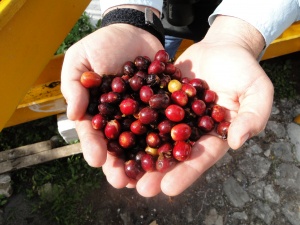 Back at the ranch, Mario led us on a tour of the processing plant for the coffee. It was fascinating. For the record, the very worst coffee beans go for instant coffee. The best go to Starbucks or the Japanese. Mario hopes the Chinese become coffee fiends. Naturally, we enjoyed the best cups of coffee at las Nubes; we brought some home with us, as well.
Back at the ranch, Mario led us on a tour of the processing plant for the coffee. It was fascinating. For the record, the very worst coffee beans go for instant coffee. The best go to Starbucks or the Japanese. Mario hopes the Chinese become coffee fiends. Naturally, we enjoyed the best cups of coffee at las Nubes; we brought some home with us, as well.
One morning, we stood for an hour on a deck that jutted over a jungle ravine, waiting and hoping for the resplendent quetzal. As the sun topped a ridge, a female quetzal shot almost straight up, perhaps a quarter mile from our location.
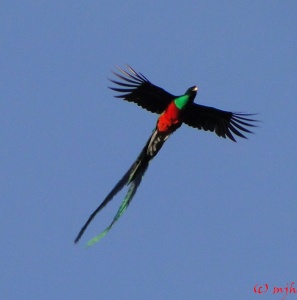
Only a moment later, the unbelievably bright male rose straight up, closer to us, flying up until the sun struck him, turning his green and red into neon. The male’s tail is absurdly long. I was lucky enough to capture the picture of a lifetime. We really did cheer and high-five this great experience.
In no way disparaging of the rest of the trip, las Nubes may have provided the best combination of birding, hanging out, eating and drinking. It was a hard act to top.
Finca Los Tarrales
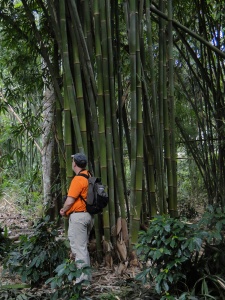 From las Nubes, we rode by van to Finca los Tarrales (bamboo), another farm taking up ecotourism. Afterwards, I think the birders regarded this as a better birding experience than las Nubes (leaving aside the resplendent quetzal). I enjoyed the terrain of las Nubes more, but the huge bamboo thickets of los Tarrales were quite amazing. Highlights for me included an Amazon Kingfisher next to a shadowy spring beneath dense bamboo and a trogon.
From las Nubes, we rode by van to Finca los Tarrales (bamboo), another farm taking up ecotourism. Afterwards, I think the birders regarded this as a better birding experience than las Nubes (leaving aside the resplendent quetzal). I enjoyed the terrain of las Nubes more, but the huge bamboo thickets of los Tarrales were quite amazing. Highlights for me included an Amazon Kingfisher next to a shadowy spring beneath dense bamboo and a trogon.
We had a little more autonomy here and broke up into smaller groups a few times.
This was the only place it rained during our stay. The sky opened up just before happy hour. During the night, it rained at least once.
Unfortunately, it was also here that Mer’s cough turned for the worse. She had had a cough for most of a month at that point; my version of this illness was bad enough but was getting better by then. Mer was getting worse. Pobrecita cariña!
Lago de Atitlan to Panajachel to Molino Hevetia
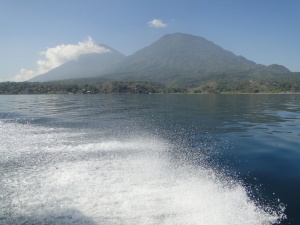
We left los Tarrales and rode into a volcanic caldera that contains Lake Atitlan. We crossed the lake by powerboat in a journey that lasted at least half an hour. It was great fun. We arrived in Panajachel, a touristy lakeside town. The group splintered to wander the streets and markets for an hour and more. Here, as in Antigua, we were frequently approached by street vendors, a few of whom seemed tragically desperate to sell something at almost any price.
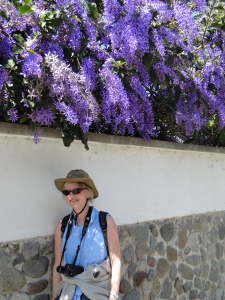 Mer and I escaped the sun and — briefly — the vendors by resting in an empty stall. A few vendors approached now and then, though most didn’t linger as Mer coughed and sniffed. Eventually, one found her way through our defenses. This was Candelaria, dressed in Mayan traditional dress, who offered me a vibrant orange short-sleeve shirt. My hesitation gave me away. “Tengo mas colores” she said, pulling at least a dozen more shirts from the bundle on her head. I liked the blue and the orange. The combination of a foreign currency and a foreign language made me unsure of the bargain, but we struck a deal. I passed up on the belt. Marked now as buyers, we were swamped by vendors, pressing in on us. It would have been more intimidating were they taller.
Mer and I escaped the sun and — briefly — the vendors by resting in an empty stall. A few vendors approached now and then, though most didn’t linger as Mer coughed and sniffed. Eventually, one found her way through our defenses. This was Candelaria, dressed in Mayan traditional dress, who offered me a vibrant orange short-sleeve shirt. My hesitation gave me away. “Tengo mas colores” she said, pulling at least a dozen more shirts from the bundle on her head. I liked the blue and the orange. The combination of a foreign currency and a foreign language made me unsure of the bargain, but we struck a deal. I passed up on the belt. Marked now as buyers, we were swamped by vendors, pressing in on us. It would have been more intimidating were they taller.
After a nice restaurant lunch, we vanned (why not) out into the countryside to Molino (mill) Helvetia. On the way, Miguel asked if we wanted chicken or beef for dinner. As one, we shouted beef. A week of chicken twice a day had been enough for us. (We also had fruit and two types of black beans with every single meal and tortillas with most.)
The house we occupied was grand by any country’s standard. It was a house with real personality and elegance. In hindsight, we might have been best off bringing groceries and beer and making it clear we would enjoy taking care of ourselves for a couple of days. Still, we were well-tended to yet found the independence to make our own coffee and do our own laundry (at least, Mer did). We sat together in the living room, warmed more by rum than the nice-looking fire. Mer laid under blankets looking like death.
Of all the trails we hiked, the trail out of the Molino seemed the most comfortable to me. It was mostly level and along a stream with some clear space on either side — an open slot through the jungle.
We made a daytrip out of Molino to the Mayan city of Iximche, our first ruins. Iximche was a great introduction to the architecture and more of the Maya, although it just hinted at what we would see in Tikal. Sunday at Iximche saw dozens of Guatemalan visitors, but we seemed to be the only foreigners.
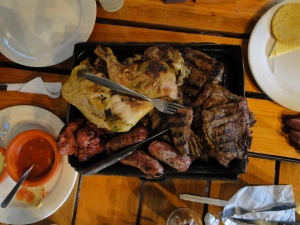 But first, before Iximche, we stopped at a roadside eatery packed with locals. We were served two hibachi-style grills piled with various meats. (This after a steak dinner the night before. Be careful what you wish for.) We barely finished one of the two piles. Although it is not certain, this may have been our downfall. Certainly, several of us came down with intestinal issues over the next two days.
But first, before Iximche, we stopped at a roadside eatery packed with locals. We were served two hibachi-style grills piled with various meats. (This after a steak dinner the night before. Be careful what you wish for.) We barely finished one of the two piles. Although it is not certain, this may have been our downfall. Certainly, several of us came down with intestinal issues over the next two days.
After Iximche, we returned to Molino Helvetia and the most gourmet of all the meals we had in Guatemala. The food, including the sumptuous chocolate dessert, was so great, we asked the chef to come out for applause.
Tikal
After two days, we left Molino Helvetia. On the road to Guatemala City, we stopped for breakfast at Rincon Suizo. (“Swiss Corner” which, along with Cabaña Suiza and Molino Helvetia, suggests an unexpected impact of the Swiss on Guatemala.) I’m not sure anyone relished breakfast that morning. Our jefe, David, was laid flat in the bus. Mer was, too, albeit for different reasons. Most of the rest of us were less than perky. Oddly, this spot along the highway is also know for the pink-headed warbler, so we did some birding after breakfast, with some success.
In Guatemala City, we had lunch at a beautiful spot in the mercado, joined by Bitty and her husband, Renato Fernández Ravelo, an accomplished bird photographer. David and Mer went with Bitty to the hospital, while the rest of us wandered the stores. At the airport, David rejoined us and Mer said goodbye. As we went on, she went with Bitty to Antigua (and that purse she wanted). The next day, she flew home.
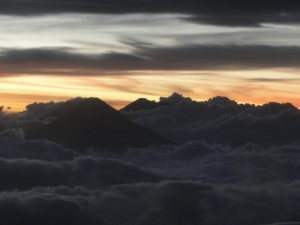 The rest of the group boarded Taca Airlines to fly to Flores, near Tikal, in the north and the lowlands. The sun set blood red as we departed. Through the twilight, a volcano peaked above roiling clouds, an island in a rough sea. As we crossed the Flores tarmac an hour later, the crone moon rose as bloody as sunset and nighthawks strafed the landing field. It was magical, until we piled into a small van for a long drive through the darkness to Tikal. En route, we stopped at the equivalent of a 7-11 for junk food which served as dinner. Every few kilometers, the van slowed nearly to a stop to drive over a speed bump that served to mark another collection of dwellings around which people enjoyed the evening.
The rest of the group boarded Taca Airlines to fly to Flores, near Tikal, in the north and the lowlands. The sun set blood red as we departed. Through the twilight, a volcano peaked above roiling clouds, an island in a rough sea. As we crossed the Flores tarmac an hour later, the crone moon rose as bloody as sunset and nighthawks strafed the landing field. It was magical, until we piled into a small van for a long drive through the darkness to Tikal. En route, we stopped at the equivalent of a 7-11 for junk food which served as dinner. Every few kilometers, the van slowed nearly to a stop to drive over a speed bump that served to mark another collection of dwellings around which people enjoyed the evening.
This was our longest day since our arrival. At the Jungle Lodge, we checked in and staggered to our bungalows to crash for the night.
The next morning may have been the first the serious birders weren’t out to meet Miguel at 6am. After a very slow-to-arrive breakfast, we walked toward Tikal, first along a wide dirt road then up narrow, winding paths.
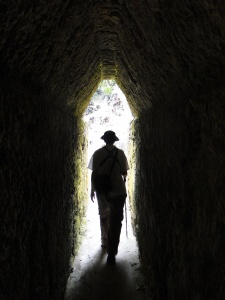
As you may know, I’ve been fascinated with the architectural remains and locales of the ancients of the southwest ever since my arrival here and my first visit to Chaco Canyon. I expect always to love Chaco. But nothing really prepared me for the massive scale of Tikal, where the land itself was reshaped repeatedly over centuries and massive structures were built over or around previous structures time and time again. Tikal is huge. A couple of temples may be made of more stone than all of Chaco (which still remains a stunning achievement).
Several of the temples in Tikal have wooden staircases or ladders enabling one to climb to the top without over-using the original stone steps. The views are spectacular, particularly when you see other temples poking up out of the dense jungle.
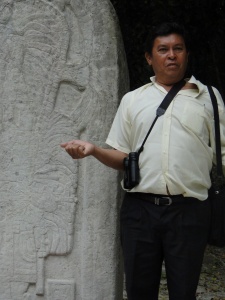 Miguel was our guide throughout the trip. His father was Mexican and his mother Maya, as is his wife. Not only is Miguel a great birder, but he has over 20 years experience in archaeology in and around Tikal, which is near his home. Miguel provided us with more than data, with a deeper connection to Guatemala. He stood before a stella replica that he and a friend had carved 20 years earlier. In Tikal, he led us around more quickly than he might have wished.
Miguel was our guide throughout the trip. His father was Mexican and his mother Maya, as is his wife. Not only is Miguel a great birder, but he has over 20 years experience in archaeology in and around Tikal, which is near his home. Miguel provided us with more than data, with a deeper connection to Guatemala. He stood before a stella replica that he and a friend had carved 20 years earlier. In Tikal, he led us around more quickly than he might have wished.
We returned to a late lunch from hours of walking around just part of Tikal. After lunch, I would have happily napped, but I felt I had to seize this opportunity, so I hurried back up the trail to the Gran Plaza shortly before closing. As I went up the trail alone, I was walking toward the roar of howler monkeys, which made me think twice. These trails have limited signs and most visitors travel with a guide, so I was concerned about losing my way. Still, I made it there with time to spare, to see a few things I missed the first time. Amazing.
Petexbatún Lagoon and Aguateca
Just as we had arrived at Tikal in darkness, so, too, did we leave, this time before dawn or coffee. After daybreak, we arrived at Casa de Don David for breakfast.
Then we rode to a river bank where we boarded a long narrow boat with a thatched roof. Our captain piloted us across the river into a side stream. At times, the stream was very narrow and shallow; it twisted many times. Frequently, we passed people in boats or on shore washing clothes or fishing.
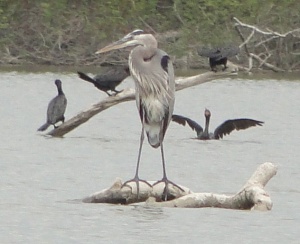 Everywhere, there were countless birds. I saw a thousand times more cormorants than I’ve ever seen, along with hundreds of herons (three species), egrets (two or three species), and kingfishers (three or more species).
Everywhere, there were countless birds. I saw a thousand times more cormorants than I’ve ever seen, along with hundreds of herons (three species), egrets (two or three species), and kingfishers (three or more species).
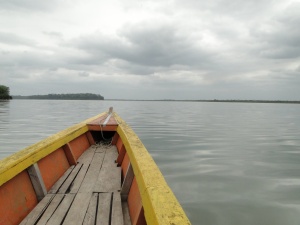 Eventually, the narrow stream opened up into the Petexbatún Lagoon, which looked like a large lake.
Eventually, the narrow stream opened up into the Petexbatún Lagoon, which looked like a large lake.
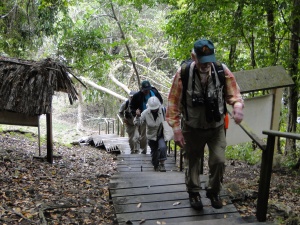 We crossed the lake and entered another narrow stream and came ashore downhill from Aguateca, where the Maya moved during a period in which they vacated Tikal (to which they returned after a few hundred years, I think). Clearly, Aguateca is very remote. We picked our way through mud and muck to reach the first of two long wooden stairways up to the level of the ruins.
We crossed the lake and entered another narrow stream and came ashore downhill from Aguateca, where the Maya moved during a period in which they vacated Tikal (to which they returned after a few hundred years, I think). Clearly, Aguateca is very remote. We picked our way through mud and muck to reach the first of two long wooden stairways up to the level of the ruins.
Unfortunately, time was precious this last full day of the trip and the boat trip lent an uncertainty in timing our arrival at the Flores airport for our only chance to return to Guatemala City that day. So, we didn’t have much time at Aguateca, but enjoyed the time we had. After lunch, we returned to our boat and reversed our course through more spectacular birding. For me, this was the best of the trip (always putting the resplendent quetzal in its own category).
Back to the van and the dash to the airport. At the airport, we said farewell to Miguel, who had a day or two off at home before the Dutch and German tourists arrived. With time to kill at the airport, we sat outside a snack shop, drinking beer and celebrating the trip.
It was here or soon after that I lost Mer’s binoculars. I don’t know if I left them hanging on a chair there or if they ended up under a seat on the airplane. Either way, I lost them.
Back at the Guatemala City airport well after dark, Bitty met us and took us to a hotel far too elegant for me, especially in my shorts and mucky shoes. I bid farewell to those who would leave early the next day and retired to my room.
Our last morning in Guatemala, after the East Coast contingent had left, we went to Bitty’s house for breakfast and one last bird stroll. I remember seeing a flock of cedar waxwings turn as one into a bush and vanish completely. On the way to the airport, we met Mario for a few pounds of las Nubes coffee (the only coffee Merri has ever enjoyed). We did some last minute shopping in airport gift shops and began the soul-crushing process of Security in an insecure (and unsecurable) era.
On the plane, Don David turned to me and said, “tell me more about what you’d like to see in Peru.” Already planning the next trip. Take a break, jefe, you earned it.
Hours later, I sat jabbering in the Frontier with mi corazon. Nothing like sweethearts and green chile to welcome you home.
[See the birds from this trip.]
blog visitors 26347 | views 27574
The inhumanity of science concerns me
The Bedside Book of Birds : NPR
On May 28, 1854, William David Thoreau, who earned some of his keep by collecting specimens for science, wrote in his diary: “The inhumanity of science concerns me, as when I am tempted to kill a rare snake that I may ascertain its species. I feel that this is not the means of acquiring true knowledge.â€
I feel this way about banding, as well. I understand the defense of the practice but wonder if we can’t move on to less intrusive observations.
Cock of the Rock, the national bird of Peru

First photo of male Cock of the Rock (above)
I first heard of the Cock of the Rock years ago, after Merri led an impromptu expedition in Ecuador in search of the bird described as both showy and shy.
Last November, we were riding in a van for hours along miles of dirt road that skirt an edge of the Manu jungle region of Peru. Much of that day consisted of riding, stopping, getting out, standing by the road to look for birds while other vehicles roared pass. As we slowed for a turn before crossing a beautiful wide stream, the first Cock of the Rock male I’d ever seen landed on a branch, perhaps not 6 feet from my window (photo above). Snap! Be ready for your opportunities.
(The first female Cock of the Rock I saw was barely visible on a nest in shadow under an overhang above the Urubamba river in Aguas Caliente, near Machu Picchu. Dave Mehlman and I were wandering when a bus driver asked, “have you seen the Cock of the Rock on the nest?” Well, no actually.)
To me, the Cock of the Rock is simultaneously beautiful and ugly. The shape of the head defies logic. Look closely for the beak barely protruding from the feathers. The stark eyes are fish-like, or like the eyes pasted on stuffed animals. Yet the power of the intense red contrasting with the dapper grey and black is undeniable.
The next day, our group drove to a roadside viewing area adjacent to a lek, the competitive breeding grounds for Cocks of the Rock. Plastic tarps formed a wall to minimize dust and noise from passing vehicles. A local guardian kept the key to a locked gate that blocked the steep steps down to a narrow uneven path a dozen paces to a viewing stand, not a blind, but a rickety porch without other attachment, directly behind the plastic tarps. This viewing area looked down a hill that was dense jungle.
At the worst time, more than a dozen people jostled quietly on this platform for a chance to see and photograph one of the half a dozen or so Cocks of the Rock, mostly showy males. Viewing was very challenging through the tangle, though it’s easy to scan green for brilliant red. The loud sore-throat croak of the males also helps you find them.
Photographs required manual focus. There were just too many points to distract autofocus, but automatic exposure settings worked fine. Though the jungle was dim, these birds don’t move very fast.
Eventually, the flock of birders moved on, leaving just 3 of us to watch longer. During this time, the birds moved closer, still not as close as that first bird. It was a delightful moment.





Why can’t we take the Crane Train to Bosque del Apache?
Imagine boarding the Rail Runner in Santa Fe or Albuquerque and riding south to Bosque del Apache. Wouldn’t it be fantastic? We have the tracks, we have the trains, we have the natural attraction. More than anything we lack imagination and determination to make it happen.
The people most likely to take this train don’t require a fancy stop. The Durango-Silverton rail simply stops in the middle of wilderness for hikers.
Eventually, I’d like to see a special Crane engine modeled after the lovely Rail Runner. But we could start this run in no time. We have trains going to the Wine Festival in Bernalillo. Why not to the Festival of the Cranes?
[reposted from 10/23/13 every year until we can do this]
Enjoy the birds while we have them …
Talk about your canary in a coal mine. Doom.
Global warming may mean bye-bye for some birdies | Albuquerque Journal News
The report says that in a few decades, 126 bird species will end up with a much smaller area to live in, which the society says will make them endangered. An additional 188 species will lose more than half their natural range but relocate to new areas. Those moves will be threatening to the birds’ survival, too, because they will be confronted with different food and soil, bird experts said.
Other birds, including backyard regulars like the American robin and the blue jay, will fly in even more places, the report says. And some of the biggest potential winners aren’t exactly birds that people like — species such as the turkey vulture, the American crow and the mourning dove, which will expand their ranges tremendously.
“If you want to know what the climate change future sounds like, it sounds a lot like a mourning dove,†Langham said. Some people find annoying the singing of the mourning dove, which will more than double its range.
Global warming may mean bye-bye for some birdies | Albuquerque Journal News
More from before (photos from the unnamed wilderness)
OK, I did name the wilderness in the photos themselves. These newest photos are the oldest. (I know, it sounds wrong, but it’s true.) We took a trip to the unnamed wilderness in June with friends Melissa and Lew. We camped in a campground, instead of the jack-camping we did in August. Follow the link for all photos (14 from June plus the previously posted 60 from August).
Ranchers and Oil Industry demand the right to destroy everything for a profit. Government agrees. Win-Win?
So, ranchers and oil companies have destroyed 80% of the habitat of the lesser prairie chicken and want the other 20%? Greedy much? And the county government serves the money, not the public and certainly not the creatures that lived their long before we did..
Suit filed to stop listing of rare grouse | Albuquerque Journal News
Federal officials say the bird has lost more than 80 percent of its traditional habitat, mostly because of human activity such as oil and gas drilling, ranching and the construction of power lines and wind turbines.
The federal government said those states had fewer than 18,000 lesser prairie chickens in 2013, down almost 50 percent from 2012.
Ranchers and oil companies believe the listing will have a negative effect on the ranching, oil and gas and wind farm industries in New Mexico, Texas, Oklahoma, Kansas and Colorado. That’s where the chicken’s habitat is known.
Suit filed to stop listing of rare grouse | Albuquerque Journal News
Slaughtering wild creatures is “cruel and moronic” — and barbaric
In New Mexico, we have coyote slaughters by similar morons.
10,000 Birds | Rip Van Winkle’s Crow Killing Contest
The “Crow Down†is a “hunting contest†where both adults and children slaughter as many crows as they possibly can in two days. Why do they do this? Look at the Maryland-based website Crow Busters, although I warn you you’ll need a strong stomach for the photographs. Here is a direct (and unedited) quote:
“… keep in mind the main reason why experienced crow hunters got into the sport in the first place, Fun. Plain old fashioned Fun.â€
Some people think it’s just plain fun to kill enormous numbers of animals and pile up their bodies, and when there’s no “bag limit†it’s legal to do so. …
[The King of the morons, may he rot in hell,] … lives in Kansas and in December 2013 celebrated killing his 150,000th crow. On the website he reminisces fondly about his “best hunt,†where he killed 3,125 crows in 9 days…
It also brings to mind the uncontested link between animal abuse and violent behavior toward fellow humans. …
“What I want to know is: a hundred feet away, how can these people tell the difference between a crow and a raven, which is a protected species?,†[Missy Runyan, director of the Friends of the Feathered and Furry Wildlife Center in nearby Hunter, NY] asks.
“And how do you keep the kids safe when you’ve got dozens of people in the woods, blasting away? You shoot a bullet up, sooner or later it has to come down. How do you know it’s not going to come down on some kid’s head?â€
The Crow Down does not require non-toxic ammunition, either, which means soon the woods will be filled with lead.
10,000 Birds | Rip Van Winkle’s Crow Killing Contest
This is an environmental disaster brought to you by blood-thirsty fools. A pox on every one of them. A single crow has more decency than that entire gang of killers.
Neighborhood Merlin
Just this morning, as I walked Luke to the park, I thought about how we didn’t see our usual merlin (falcon) this winter. In years past, it occupied a particular telephone pole top almost every late afternoon from October to March. Not so this winter. Imagine my surprise when I spotted this merlin an hour later near the usual spot.
As I watched and photographed, the merlin left its prey and moved to a nearby tree. A scrub jay flew at it and the merlin flew around a bit before landing in another nearby tree. The jay went straight at the merlin and landed near it. A moment later, the merlin left the area. Drama on our street. Was the prey related to the jay?
The slack-jawed bird-gawker in Belize …
… stalking the Tawdry Motmot and Malodorous Blackbird
We made our first trip to Belize recently, staying there 9 nights. For five nights, we were in a jungle eco-lodge near the Guatemalan border. Three nights were spent in a luxurious condo on the beach. We traveled with two friends from Merri’s college days (Susan and Paul).
The jungle was my favorite location. DuPlooy’s was established years ago by Ken and Judy duPlooy. In many respects, they turned savannah into a jungle. The lodge ranges along a boardwalk from a veranda overlooking the Macal River at one end to our Casita at the other end, a sizeable two-story house with a large bedroom and bath on each floor. We had the upstairs which also had a wide, deep balcony porch wrapping around two sides facing the jungle. It felt very much like a posh treehouse, especially from the hammocks.
We’re mediocre birders. We know a lot more than people who don’t care about birds, but among people who do, we’re rather ignorant. Even equipped with a book, binocs, camera, and Internet access, we struggled to identify most of the birds we saw and we know we missed countless others. I think of myself as a bird gawker, rather than a twitcher (Brit slang for birders). But, we enjoy ourselves immensely and this was a great location for birds, bugs, and plants.
It’s remarkable that I could go this long without mentioning the rain. It rained every day and at different times of day for different durations. The Belizeans frequently apologized for this but we always replied that for desert-dwellers rain makes a vacation more special. In fact, when the rain did pause, the humidity was overpowering. Let it rain and protect us from this cruel sun.
The jungle, the lodge, the rain, the birds were all fascinating but I also greatly enjoyed the Belizeans we met. When we travelled in Guatemala, my ignorance of Spanish was an embarrassing barrier that kept me from really connecting with people there. In Belize, English is the official language. Moreover, everyone we met speaks at least English, Spanish, and creole. Many also speak one of several Mayan dialects. Belizeans are a polyglot and gracious people. We were well taken care of.
Phillip of DuPlooy’s picked up Susan and Paul a few hours before we arrived and drove them an hour to the zoo. Some of the best photos any of us took were theirs at the zoo. Paul escaped a toucan with fingers intact. They saw a harpy eagle, one of the birds I wanted to see. (I hear Panama is the place to see harpies.) Then, they all drove back to the airport for our arrival. It was thrilling to wall down an old-fashioned rolling stairway to the tarmac (just as I did in Africa 40 years ago and in Albuquerque almost 30 years ago) to be greeted by friendly calls and hoots from the observation area.
Phillip drove us across country in two hours. Before night fell, he pointed out the Sleeping Giant, high ground in Belize that is actually a former reef pushed up. Driving through rain, we passed a few small towns which always had at least on open-aired room with a big screen TV and a crowd of people watching.
We left pavement and drove up a steep, narrow, winding dirt road arriving at the DuPlooy’s office. There Mason greeted us and checked us in. In a light rain, he led us along the boardwalk past half a dozen cottages with screened-in porches to our casita. Then we walked back past the other dwellings — all of which were unoccupied — to the dining room, beyond which were the open-aired bar, bird feeding station and a few tables under a roof. We spent time every day in each of these areas, watching birds, eating, drinking Belikin stout and talking to employees as well as just a few other guests. Most of that time, we were well-attended to by Albert. That first dinner was the best coconut shrimp we’ve ever eaten.
The first morning, I awoke to a strange, deep drumming. One end of our upstairs porch looked toward an large dead tree that served as a bird magnet. The drummer was a woodpecker, nearly as large as a pileated woodpecker. Over the next few days, we would see other woodpeckers there, as well as toucans and parrots. Up the hill on a tower, we frequently saw bat falcons.
DuPlooy’s includes half-day and full day activities in their package, but that first day we didn’t want to get in a car again, so we hiked the trail along the river. That afternoon, we tubed from Judy’s house back down to the beach, which was completely submerged by the rising Macal River. In fact, it kept rising all week, though the lodge is well uphill and unthreatened.
Adjacent to the lodge, the duPlooys also built a botanic garden full of domestic and exotic plants, which, in turn draw more birds and insects. We walked through the garden several times. My favorite hours may have been those I spent alone wandering the grounds while the others drove to butterfly farm and a cave tubing trip that had to be cancelled due to high water. During my hike, I climbed the tower built to honor Ken DuPlooy. From this high vantage I looked out over dense green canopy and observed three flocks of plain chachalacas (a drab pheasant-like bird I want to call Boom-chack-a-lakas — Wanna take you higher!). Each group crow at once, then each group in sequence, first one group, then another across the valley, then a third, and around again the same way, each cacophonous chorus in turn. I also repeated the river trail and stumbled over the rugged trail Phillip had cut by machete, making me appreciate just how dangerous the jungle could be.
Next morning, we rode horses with Eryn up to a great vista of the jungle and the Macal. After lunch, we left for an overnight trip to Tikal in Guatemala. I’d been there a few years ago, but Merri missed it because she was sick on that earlier trip. Tikal is stunning and spectacular. As with Chaco in New Mexico, what we see is nothing like what it appeared in its heyday but is no less grand. We made a brief excursion to the Gran Plaza where we saw a fox, the indigenous colorful ocellated turkeys and only a few people.
At the Tikal Jungle Lodge, we practiced restaurant Spanish under the tutelage of a delightful and delighted waitress. Next day at breakfast, we showed how little we’d learned — except for Merri, by far the most comfortable in her efforts. Then our guide Walter led us for hours through rain, mud, humidity and history. And howler monkeys. Walter does an amazing howler monkey call, as well as being an over-educated former lawyer. On our way out from Tikal, we were stunned to encounter our guide from 3 years ago, Miguel. After lunch, we left the Tikal Lodge and rewound our way back across the border to DuPlooy’s for a last night.
Next day, we left the jungle. Noel of DuPlooy’s drove us across country a couple of hours to Belize City and the port. En route, he stopped to point out iguanas (they mate for life, but the male has to keep up his good looks or the female may choose another), black thick-billed anis, lesser yellow-headed vultures, Mayan ruins, and so much more, all the while regaling us with great nuggets of info about what we were seeing. He was the only person I met there who address the women as ‘milady,’ but he made it seem a charming eccentricity.
It was quite a shock to leave the laid-back largely empty jungle lodge for the big city and all it entails. Stout eased my transition. We took a ferry to the tourist town of San Pedro on Ambergris Caye (pronounced key), known to some as Little America. Though San Pedro has no high-rises, it feels like a resort town. We checked into our condo then walked a few short blocks to El Fagon. During a pounding rainstorm that caused us to move from one table to the next and back, we enjoyed our meal. Next we walked to a small market for groceries, including local coffee and cashew wine (awful). I also bought a pair of flip-flops to replace the sneakers I had to abandon because they smell so bad after tubing the Macal and never drying out.
Much of our time in San Pedro was spent strolling a few short blocks or the beach. We wandered between shops, visiting a frozen custard shop three times before we found it open. We bought chocolate several times. I bought a nice short-sleeved shirt. We ate at several nice restaurants. Susan and Paul borrowed bikes for a long ride north while Mer and I walked a long way south with minimal birding.
We also took a glassbottom boat out to the reef that is a national park. Our guide led us snorkeling in a few places. The fish, the grass, the coral of every type were all beautiful. It was the sea turtles that almost made Merri cry. One moment of excitement came when the guide pointed out a moray eel. As Paul swam toward it the eel swam even faster toward Paul and the guide swam faster still to pull Paul back and repel the eel with a flipper. Our was also able to dive down and through a short coral cave.
For all the fun we had outside in San Pedro, we also spent time recuperating from the heat in the AC. And, of course, it rained here, too, although never enough to spoil an hour.
Our condos were a walkable block from the airport where where took a small plane to the mainland airport. Mer got to ride in the co-pilot’s seat. From the air, the keys look less like islands than like lagoons with small areas above water. Global warming may finish submerging this area in our lifetimes.
It is fitting that after all this, we encountered the heaviest rain of entire trip as we made our way to the plane. Recall, there aren’t any enclosed gangways. We lined up for umbrellas and the moment I stepped out from under a roof, I was ankle deep in water, glad I had my flip-flops. I laughed out loud, it was such fun. Up the rolling stairway to hand over an umbrella and return to the 21st century. They had to stop boarding the plane to keep water more water from entering the front and to return the stack of umbrellas for the next group of passengers.
Now we are back a mile above sea level in a desert that once was underwater. Our miserly rain is bone-chillingly cold. Blue has replaced green and I can see a hundred miles again and, much closer, the mile-high Sandias that provide a backdrop for everything we do. It’s good to get out now and then. It’s good to come home.
We know “improving access” to the Bosque hurts it
Protect our Bosque from the Proposed Rio Grande Vision Plan / Hawks Aloft Inc.
Hawks Aloft Blog
Protect our Bosque from the Proposed Rio Grande Vision Plan
September 4th, 2013
It is not often that we, at Hawks Aloft, take on an activist role in our community. However, we have relatively recently become familiar with the details of the Rio Grande Vision Plan, proposed by Mayor Berry and his design team. That site was updated only yesterday, therefore considerable detail has not yet been reviewed. There is a public meeting tonight
Wednesday Sept. 4, 6 -8 pm
Albuquerque Museum
2000 Mountain NW
Albuquerque NM 87104There will be a second public meeting on Wednesday Sept. 18, 6 -8 pm.
We encourage you to familiarize yourself with the plan, attend the meetings and express your opinions, either through the public meeting venue or by submitting written comments to via email to theplan@cabq.gov Comments may also be mailed to The Mayor’s Office, PO Box 1293, Albuquerque NM 87103.
As an organization that cares deeply about the health of our bosque, we mailed a letter to the Mayor on September 3, 2013, the same date as the revised Plan was posted on the City website. We urged Mayor Berry and his team to consider the effects of a similar management that has occurred in the Rio Rancho bosque over the past 10 years and the devastating impacts to bird densities as that reach of the bosque has become more ubanized. A full copy of our letter to the Mayor follows below this chart.
Rio Rancho bosque Avian Densities 2003-2012
September 3, 2013
Mayor Richard Berry
City of Albuquerque
PO Box 1293
Albuquerque, NM 87103Hawks Aloft, Inc. is deeply concerned that the City of Albuquerque’s Rio Grande Vision Plan, if enacted, will have a devastating effect on avifauna and other wildlife that depend on the natural habitat of the bosque. We base our concerns on scientific data collected by Hawks Aloft, Inc. We have conducted avian monitoring within the bosque, between Bernalillo and the La Joya Game Management Area since December 2003. The purpose of our study is to assess avian abundance and species richness (number of different species observed) relative to habitat and management entities. We currently monitor 78 (½ mile long) transects in various habitats. Each route is surveyed three times per month during the summer and winter months, when the birds present are resident, rather than migratory.
As greater detail has been released about the Rio Grande Vision Plan, it is apparent that large portions of the bosque within the Rio Grande Valley State Park will be developed to increase human usage, with hardened riverside trails up to as 8-10’ wide, viewing blinds, benches, and other park-like amenities, many of which are proposed for installation along the river’s edge. The Plan also calls for removal of non-native vegetation as part of a restoration process. All of these sound very similar to the Willow Creek bosque management that has occurred in our neighbor to the north, Rio Rancho.
The Rio Rancho bosque has undergone significant changes, from an unmanaged wild area in 2003 to urban parkland between 2004 and 2012. (Changes have occurred in 2013, but data are still being analyzed). We have documented a significant decline in avian abundance over time as this section of bosque has become increasingly developed.
We provide the history below as potential explanation for the change in bird densities in the Rio Rancho bosque.
2004-2005: Mechanical clearing of non-native woody vegetation occurred in some areas. Sunflower crop was poor, resulting in relatively low bird numbers during winter. Limited human use.
2006-2007: Vegetation re-growth and presence of extensive sunflower patches. The sunflowers attracted large numbers of wintering birds, especially sparrows and finches.
2008-2009: Crusher-fine loop trail installed. Human use began increasing as soon as trail was completed. No winter surveys conducted due to lack of funds.
2009-2010: Clearing resumed, again using heavy equipment, resulting in removal of all woody vegetation except for coyote willow, cottonwoods, and a few, scattered New Mexico olives. Expanded wide, crusher-fine, walking trails, and smaller trails with classroom style seating. Sunflowers were mowed prior to setting seed.
2011-2012: Avian density among the lowest of all transects surveyed.
2013: Additional crusher-fine trails and benches installed. Riverbed altered to shift water flow closer to the Rio Rancho bosque and provide benefit to silvery minnow. Fill from riverbed mounded on west edge. Fill area seeded; minimal planting of shrubs.
Human and dog use of the Willow Creek bosque has grown exponentially since the establishment of the wide, crusher-fine trail. It is not unusual to encounter 20-30 people and up to 10 dogs, many of them off-leash, during a ½ mile long transect. This bosque has become a place for people and a de facto dog park, with little natural habitat for wildlife. Birds that utilize the shrub understory and ground dwelling species have largely disappeared due to the lack of cover and persecution by unleashed dogs. Those birds present are largely canopy dwelling species such as White-breasted Nuthatch, Downy Woodpecker, House Finch, and Black-chinned Hummingbird.
All Russian olive (non-native) and junipers (native) have been removed from the Willow Creek bosque. Russian olive is of vital importance to birds in the middle Rio Grande bosque. It is, in general, greatly undervalued by land managers, but provides important nesting substrate for sub-canopy and understory breeding birds as well as an important food and cover resource. While dense stands of coyote willow provide valuable cover for birds, they do not provide a substantial food resource, particularly for seed and berry eating animals; additionally, because coyote willow lacks a complex structure, it is of limited value to nesting birds.
We believe that the Rio Grande Vision Plan, if enacted in its current state, will have a similar, equally devastating effect on bird numbers, as that documented in the Rio Rancho bosque. We sincerely hope that we are able to have a voice at future technical science team meetings. It seems rather odd that the research group that has monitored bird use in the bosque for the past 10 years has not been included in the planning process. Thank you for your attention to our concerns.
Protect our Bosque from the Proposed Rio Grande Vision Plan / Hawks Aloft Inc.

